Quick filters:
7th century arab Stock Photos and Images
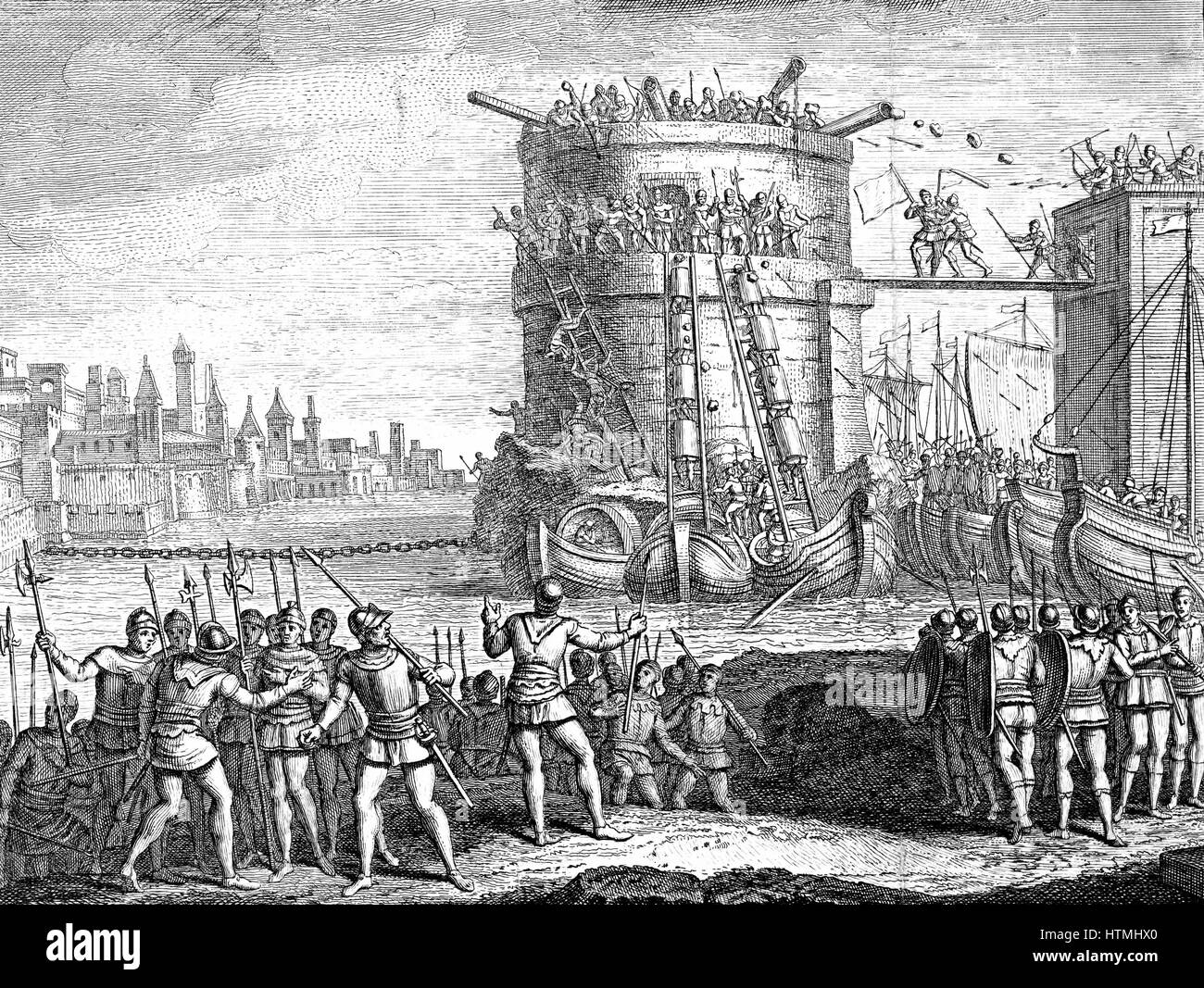 Siege of Damietta, Nile Delta. Important commercial centre for Arab textile trade. Briefly in Crusader hands 1219-21, 1249-50 (6th and 7th crusades). Centre left, chain stretched across harbour entrance to prevent invading vessels passing. Centre, defende Stock Photohttps://www.alamy.com/image-license-details/?v=1https://www.alamy.com/stock-photo-siege-of-damietta-nile-delta-important-commercial-centre-for-arab-135677416.html
Siege of Damietta, Nile Delta. Important commercial centre for Arab textile trade. Briefly in Crusader hands 1219-21, 1249-50 (6th and 7th crusades). Centre left, chain stretched across harbour entrance to prevent invading vessels passing. Centre, defende Stock Photohttps://www.alamy.com/image-license-details/?v=1https://www.alamy.com/stock-photo-siege-of-damietta-nile-delta-important-commercial-centre-for-arab-135677416.htmlRMHTMHX0–Siege of Damietta, Nile Delta. Important commercial centre for Arab textile trade. Briefly in Crusader hands 1219-21, 1249-50 (6th and 7th crusades). Centre left, chain stretched across harbour entrance to prevent invading vessels passing. Centre, defende
 Fragment, Roman period (30 B.C.– 641 A.D.)/Arab period (641–969), 6th/7th century, Coptic, Egypt, Egypt, Wool, slit tapestry weave, 25.4 × 20.3 cm (10 × 8 in Stock Photohttps://www.alamy.com/image-license-details/?v=1https://www.alamy.com/fragment-roman-period-30-bc-641-adarab-period-641969-6th7th-century-coptic-egypt-egypt-wool-slit-tapestry-weave-254-203-cm-10-8-in-image328616038.html
Fragment, Roman period (30 B.C.– 641 A.D.)/Arab period (641–969), 6th/7th century, Coptic, Egypt, Egypt, Wool, slit tapestry weave, 25.4 × 20.3 cm (10 × 8 in Stock Photohttps://www.alamy.com/image-license-details/?v=1https://www.alamy.com/fragment-roman-period-30-bc-641-adarab-period-641969-6th7th-century-coptic-egypt-egypt-wool-slit-tapestry-weave-254-203-cm-10-8-in-image328616038.htmlRM2A2HN32–Fragment, Roman period (30 B.C.– 641 A.D.)/Arab period (641–969), 6th/7th century, Coptic, Egypt, Egypt, Wool, slit tapestry weave, 25.4 × 20.3 cm (10 × 8 in
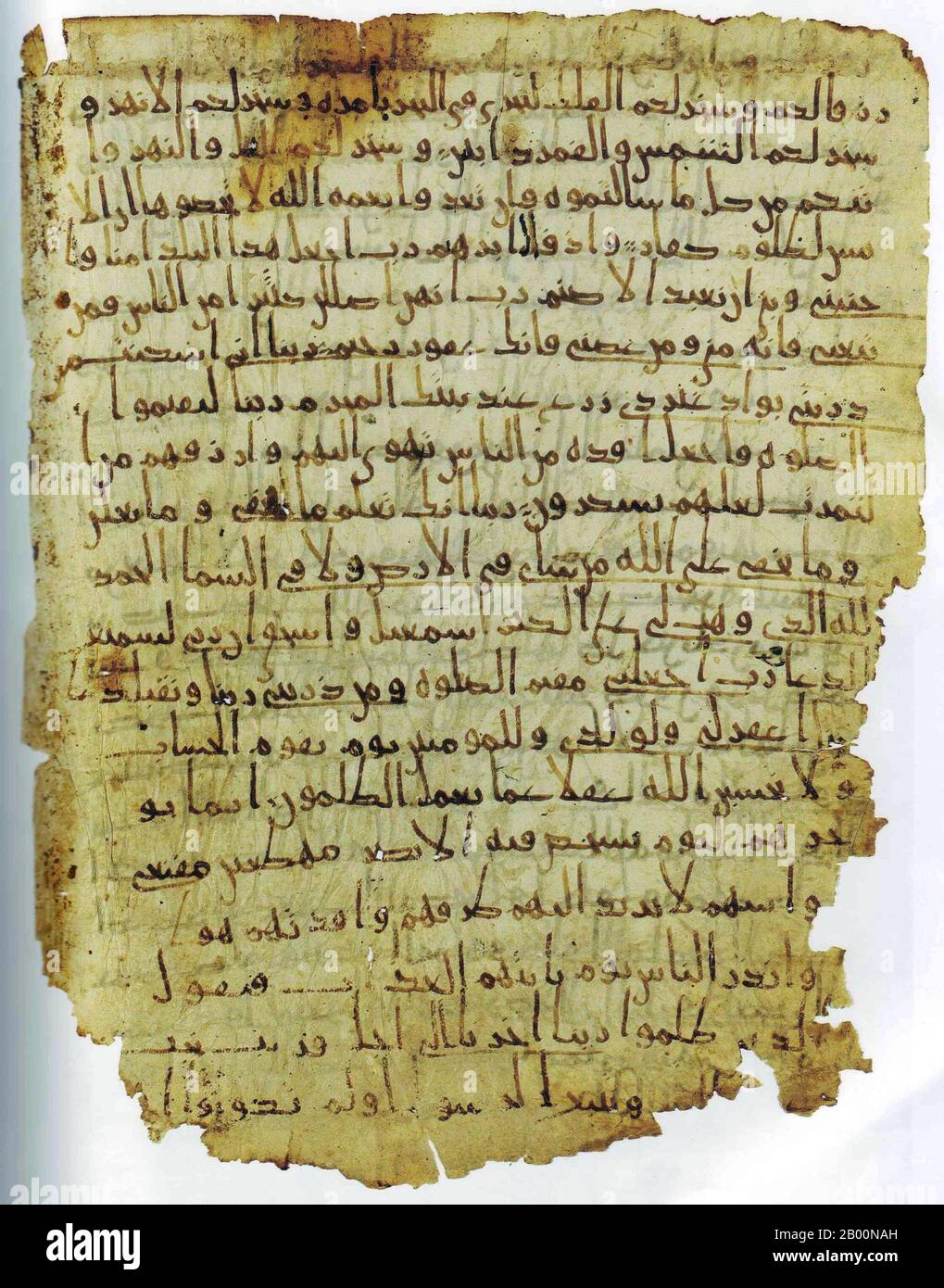 Arabia: Very early Arabic Qur'anic calligraphy thought to date from the 2nd half of the 7th century CE. A single leaf (measuring 35.5 x 27.5 cm) of what is said to be a Hijazi Qur'an and to date from the second half of the 7th century CE. Verso. Stock Photohttps://www.alamy.com/image-license-details/?v=1https://www.alamy.com/arabia-very-early-arabic-quranic-calligraphy-thought-to-date-from-the-2nd-half-of-the-7th-century-ce-a-single-leaf-measuring-355-x-275-cm-of-what-is-said-to-be-a-hijazi-quran-and-to-date-from-the-second-half-of-the-7th-century-ce-verso-image344224121.html
Arabia: Very early Arabic Qur'anic calligraphy thought to date from the 2nd half of the 7th century CE. A single leaf (measuring 35.5 x 27.5 cm) of what is said to be a Hijazi Qur'an and to date from the second half of the 7th century CE. Verso. Stock Photohttps://www.alamy.com/image-license-details/?v=1https://www.alamy.com/arabia-very-early-arabic-quranic-calligraphy-thought-to-date-from-the-2nd-half-of-the-7th-century-ce-a-single-leaf-measuring-355-x-275-cm-of-what-is-said-to-be-a-hijazi-quran-and-to-date-from-the-second-half-of-the-7th-century-ce-verso-image344224121.htmlRM2B00NAH–Arabia: Very early Arabic Qur'anic calligraphy thought to date from the 2nd half of the 7th century CE. A single leaf (measuring 35.5 x 27.5 cm) of what is said to be a Hijazi Qur'an and to date from the second half of the 7th century CE. Verso.
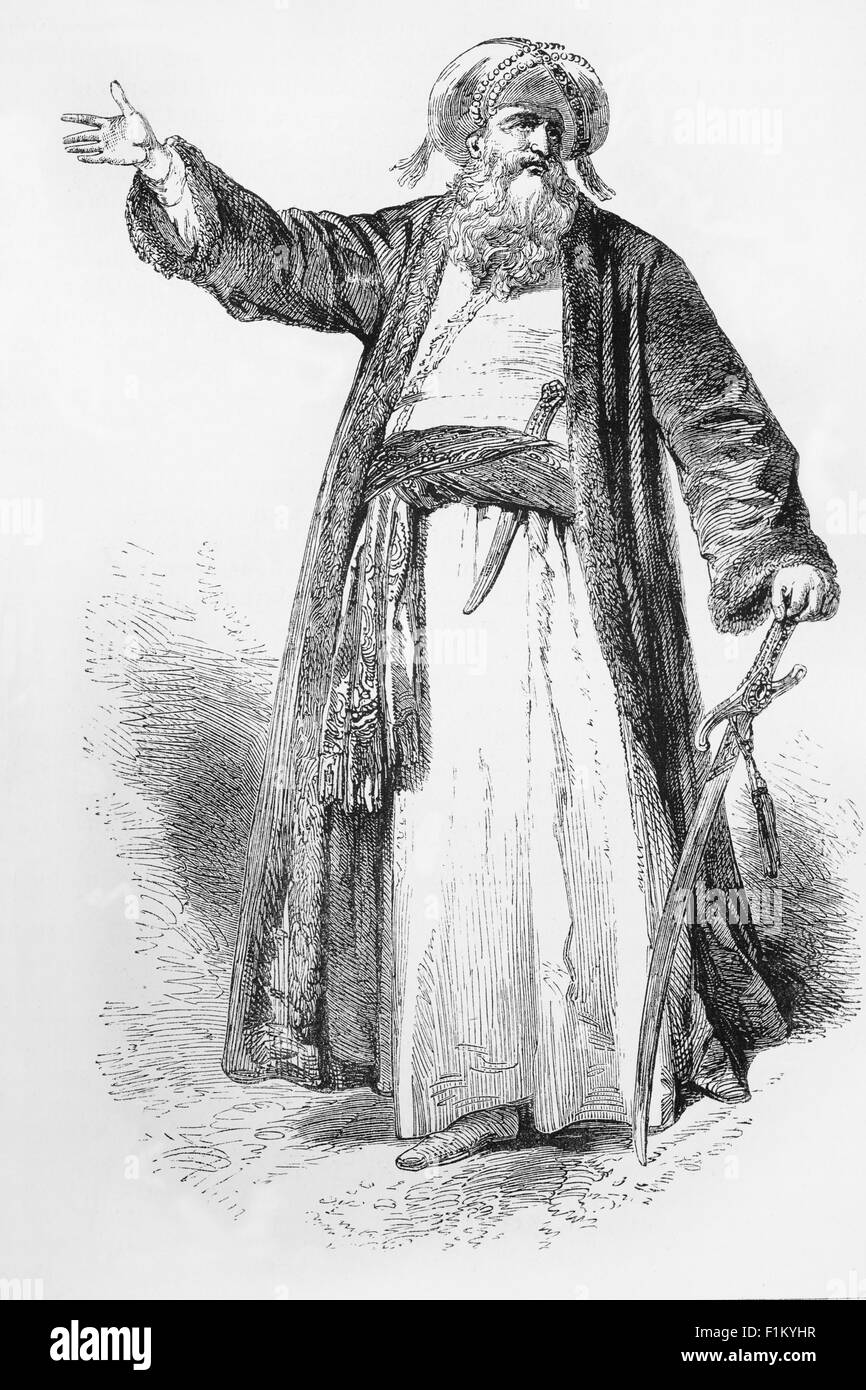 Muhammad (570-632) was an Arab religious, social, and political leader and the founder of Islam. According to Islamic doctrine, he was a prophet, sent to preach and confirm the monotheistic teachings of Adam, Abraham, Moses, Jesus, and other prophets. He is believed to be the final prophet of God in all the main branches of Islam, though some modern denominations diverge from this belief. Muhammad united Arabia into a single Muslim polity, with the Quran as well as his teachings and practices forming the basis of Islamic religious belief. Stock Photohttps://www.alamy.com/image-license-details/?v=1https://www.alamy.com/stock-photo-muhammad-570-632-was-an-arab-religious-social-and-political-leader-87105251.html
Muhammad (570-632) was an Arab religious, social, and political leader and the founder of Islam. According to Islamic doctrine, he was a prophet, sent to preach and confirm the monotheistic teachings of Adam, Abraham, Moses, Jesus, and other prophets. He is believed to be the final prophet of God in all the main branches of Islam, though some modern denominations diverge from this belief. Muhammad united Arabia into a single Muslim polity, with the Quran as well as his teachings and practices forming the basis of Islamic religious belief. Stock Photohttps://www.alamy.com/image-license-details/?v=1https://www.alamy.com/stock-photo-muhammad-570-632-was-an-arab-religious-social-and-political-leader-87105251.htmlRMF1KYHR–Muhammad (570-632) was an Arab religious, social, and political leader and the founder of Islam. According to Islamic doctrine, he was a prophet, sent to preach and confirm the monotheistic teachings of Adam, Abraham, Moses, Jesus, and other prophets. He is believed to be the final prophet of God in all the main branches of Islam, though some modern denominations diverge from this belief. Muhammad united Arabia into a single Muslim polity, with the Quran as well as his teachings and practices forming the basis of Islamic religious belief.
 1855 Spruner Map of Africa up to the Arab conquests in the 7th century Stock Photohttps://www.alamy.com/image-license-details/?v=1https://www.alamy.com/stock-photo-1855-spruner-map-of-africa-up-to-the-arab-conquests-in-the-7th-century-49967169.html
1855 Spruner Map of Africa up to the Arab conquests in the 7th century Stock Photohttps://www.alamy.com/image-license-details/?v=1https://www.alamy.com/stock-photo-1855-spruner-map-of-africa-up-to-the-arab-conquests-in-the-7th-century-49967169.htmlRMCW85HN–1855 Spruner Map of Africa up to the Arab conquests in the 7th century
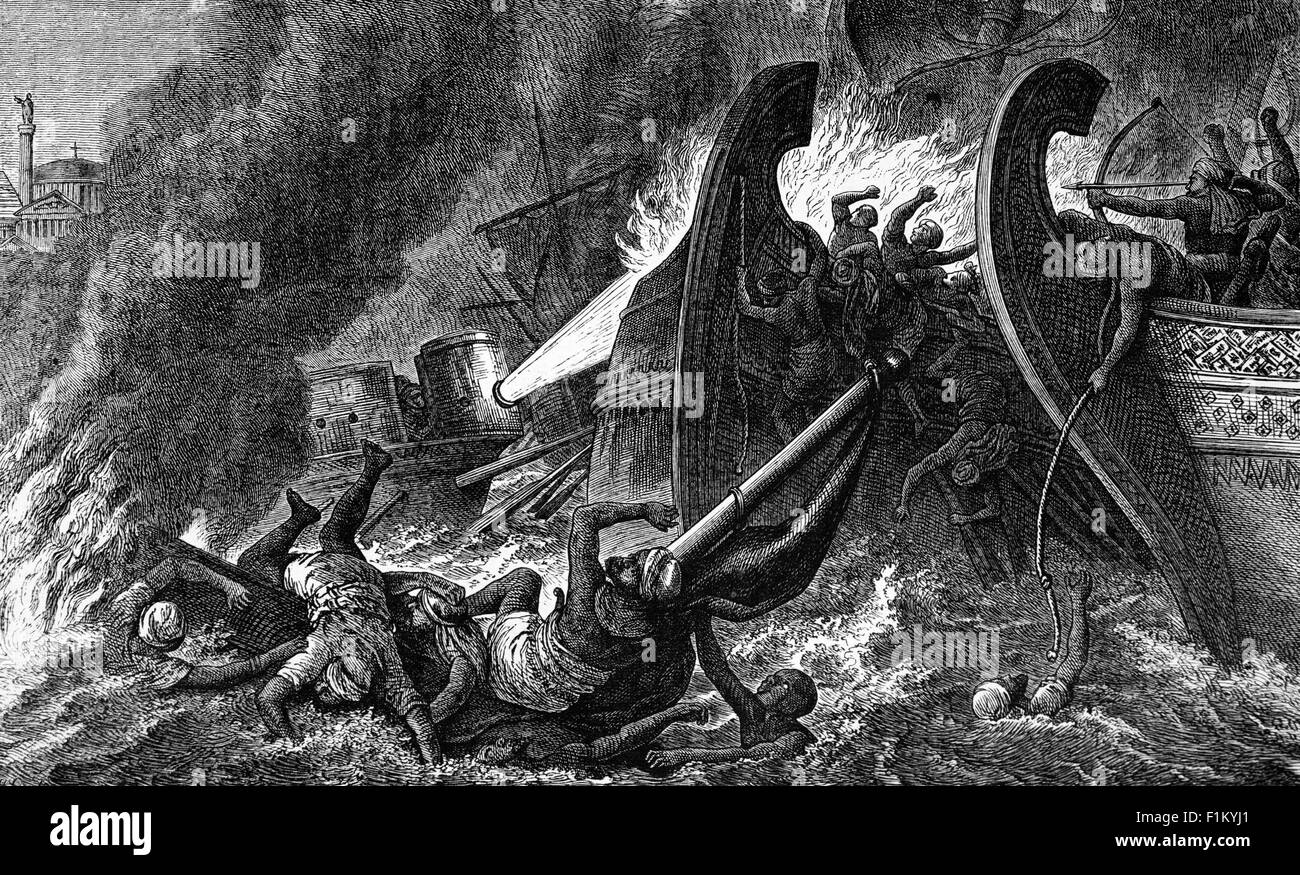 Ships destroyed by 'Greek Fire', an incendiary weapon used by the Byzantine Empire beginning c. 672. It consisted of a combustible compound probably based on naphtha and quicklime emitted by a flame-throwing weapon. The Byzantines typically used it in naval battles to great effect, as it could supposedly continue burning while floating on water. The technological advantage it provided was responsible for many key Byzantine military victories, most notably the salvation of Constantinople from the first and second Arab sieges, thus securing the Empire's survival. Stock Photohttps://www.alamy.com/image-license-details/?v=1https://www.alamy.com/stock-photo-ships-destroyed-by-greek-fire-an-incendiary-weapon-used-by-the-byzantine-87105257.html
Ships destroyed by 'Greek Fire', an incendiary weapon used by the Byzantine Empire beginning c. 672. It consisted of a combustible compound probably based on naphtha and quicklime emitted by a flame-throwing weapon. The Byzantines typically used it in naval battles to great effect, as it could supposedly continue burning while floating on water. The technological advantage it provided was responsible for many key Byzantine military victories, most notably the salvation of Constantinople from the first and second Arab sieges, thus securing the Empire's survival. Stock Photohttps://www.alamy.com/image-license-details/?v=1https://www.alamy.com/stock-photo-ships-destroyed-by-greek-fire-an-incendiary-weapon-used-by-the-byzantine-87105257.htmlRMF1KYJ1–Ships destroyed by 'Greek Fire', an incendiary weapon used by the Byzantine Empire beginning c. 672. It consisted of a combustible compound probably based on naphtha and quicklime emitted by a flame-throwing weapon. The Byzantines typically used it in naval battles to great effect, as it could supposedly continue burning while floating on water. The technological advantage it provided was responsible for many key Byzantine military victories, most notably the salvation of Constantinople from the first and second Arab sieges, thus securing the Empire's survival.
 Art inspired by Fragment of a Closed Vessel, probably 7th–9th century, Found/excavated Iraq, Ctesiphon, Earthenware; glazed and applied, Ceramics, This ceramic fragment was excavated in Ctesiphon, the Sasanian metropolis and administrative capital conquered by Arab Muslim armies in 637, Classic works modernized by Artotop with a splash of modernity. Shapes, color and value, eye-catching visual impact on art. Emotions through freedom of artworks in a contemporary way. A timeless message pursuing a wildly creative new direction. Artists turning to the digital medium and creating the Artotop NFT Stock Photohttps://www.alamy.com/image-license-details/?v=1https://www.alamy.com/art-inspired-by-fragment-of-a-closed-vessel-probably-7th9th-century-foundexcavated-iraq-ctesiphon-earthenware-glazed-and-applied-ceramics-this-ceramic-fragment-was-excavated-in-ctesiphon-the-sasanian-metropolis-and-administrative-capital-conquered-by-arab-muslim-armies-in-637-classic-works-modernized-by-artotop-with-a-splash-of-modernity-shapes-color-and-value-eye-catching-visual-impact-on-art-emotions-through-freedom-of-artworks-in-a-contemporary-way-a-timeless-message-pursuing-a-wildly-creative-new-direction-artists-turning-to-the-digital-medium-and-creating-the-artotop-nft-image463027478.html
Art inspired by Fragment of a Closed Vessel, probably 7th–9th century, Found/excavated Iraq, Ctesiphon, Earthenware; glazed and applied, Ceramics, This ceramic fragment was excavated in Ctesiphon, the Sasanian metropolis and administrative capital conquered by Arab Muslim armies in 637, Classic works modernized by Artotop with a splash of modernity. Shapes, color and value, eye-catching visual impact on art. Emotions through freedom of artworks in a contemporary way. A timeless message pursuing a wildly creative new direction. Artists turning to the digital medium and creating the Artotop NFT Stock Photohttps://www.alamy.com/image-license-details/?v=1https://www.alamy.com/art-inspired-by-fragment-of-a-closed-vessel-probably-7th9th-century-foundexcavated-iraq-ctesiphon-earthenware-glazed-and-applied-ceramics-this-ceramic-fragment-was-excavated-in-ctesiphon-the-sasanian-metropolis-and-administrative-capital-conquered-by-arab-muslim-armies-in-637-classic-works-modernized-by-artotop-with-a-splash-of-modernity-shapes-color-and-value-eye-catching-visual-impact-on-art-emotions-through-freedom-of-artworks-in-a-contemporary-way-a-timeless-message-pursuing-a-wildly-creative-new-direction-artists-turning-to-the-digital-medium-and-creating-the-artotop-nft-image463027478.htmlRF2HW8M7J–Art inspired by Fragment of a Closed Vessel, probably 7th–9th century, Found/excavated Iraq, Ctesiphon, Earthenware; glazed and applied, Ceramics, This ceramic fragment was excavated in Ctesiphon, the Sasanian metropolis and administrative capital conquered by Arab Muslim armies in 637, Classic works modernized by Artotop with a splash of modernity. Shapes, color and value, eye-catching visual impact on art. Emotions through freedom of artworks in a contemporary way. A timeless message pursuing a wildly creative new direction. Artists turning to the digital medium and creating the Artotop NFT
 An engraving depicting men working to raise the sails on an Arab slave ship, slave traders are directing the actions of the slaves in order to set sail before the British Cruiser in the background reaches them, the Arab slave trade started in the 7th century and continued through the mid 20th century, it is estimated that between 10 and 18 million people were enslaved during that time period, Red Sea, 1874. From the New York Public Library. Stock Photohttps://www.alamy.com/image-license-details/?v=1https://www.alamy.com/stock-image-an-engraving-depicting-men-working-to-raise-the-sails-on-an-arab-slave-166773433.html
An engraving depicting men working to raise the sails on an Arab slave ship, slave traders are directing the actions of the slaves in order to set sail before the British Cruiser in the background reaches them, the Arab slave trade started in the 7th century and continued through the mid 20th century, it is estimated that between 10 and 18 million people were enslaved during that time period, Red Sea, 1874. From the New York Public Library. Stock Photohttps://www.alamy.com/image-license-details/?v=1https://www.alamy.com/stock-image-an-engraving-depicting-men-working-to-raise-the-sails-on-an-arab-slave-166773433.htmlRMKK9561–An engraving depicting men working to raise the sails on an Arab slave ship, slave traders are directing the actions of the slaves in order to set sail before the British Cruiser in the background reaches them, the Arab slave trade started in the 7th century and continued through the mid 20th century, it is estimated that between 10 and 18 million people were enslaved during that time period, Red Sea, 1874. From the New York Public Library.
 Art inspired by Footed Goblet, 7th–8th century, Country of Origin Iran, Glass; cast and facet cut, H: 7 1/8 in. (18.1 cm), Glass, This goblet in dark blue-green glass is a rare speciman made in Iran in the first centruries after the Arab conquest, although following a long-established, Classic works modernized by Artotop with a splash of modernity. Shapes, color and value, eye-catching visual impact on art. Emotions through freedom of artworks in a contemporary way. A timeless message pursuing a wildly creative new direction. Artists turning to the digital medium and creating the Artotop NFT Stock Photohttps://www.alamy.com/image-license-details/?v=1https://www.alamy.com/art-inspired-by-footed-goblet-7th8th-century-country-of-origin-iran-glass-cast-and-facet-cut-h-7-18-in-181-cm-glass-this-goblet-in-dark-blue-green-glass-is-a-rare-speciman-made-in-iran-in-the-first-centruries-after-the-arab-conquest-although-following-a-long-established-classic-works-modernized-by-artotop-with-a-splash-of-modernity-shapes-color-and-value-eye-catching-visual-impact-on-art-emotions-through-freedom-of-artworks-in-a-contemporary-way-a-timeless-message-pursuing-a-wildly-creative-new-direction-artists-turning-to-the-digital-medium-and-creating-the-artotop-nft-image462823935.html
Art inspired by Footed Goblet, 7th–8th century, Country of Origin Iran, Glass; cast and facet cut, H: 7 1/8 in. (18.1 cm), Glass, This goblet in dark blue-green glass is a rare speciman made in Iran in the first centruries after the Arab conquest, although following a long-established, Classic works modernized by Artotop with a splash of modernity. Shapes, color and value, eye-catching visual impact on art. Emotions through freedom of artworks in a contemporary way. A timeless message pursuing a wildly creative new direction. Artists turning to the digital medium and creating the Artotop NFT Stock Photohttps://www.alamy.com/image-license-details/?v=1https://www.alamy.com/art-inspired-by-footed-goblet-7th8th-century-country-of-origin-iran-glass-cast-and-facet-cut-h-7-18-in-181-cm-glass-this-goblet-in-dark-blue-green-glass-is-a-rare-speciman-made-in-iran-in-the-first-centruries-after-the-arab-conquest-although-following-a-long-established-classic-works-modernized-by-artotop-with-a-splash-of-modernity-shapes-color-and-value-eye-catching-visual-impact-on-art-emotions-through-freedom-of-artworks-in-a-contemporary-way-a-timeless-message-pursuing-a-wildly-creative-new-direction-artists-turning-to-the-digital-medium-and-creating-the-artotop-nft-image462823935.htmlRF2HTYCJ7–Art inspired by Footed Goblet, 7th–8th century, Country of Origin Iran, Glass; cast and facet cut, H: 7 1/8 in. (18.1 cm), Glass, This goblet in dark blue-green glass is a rare speciman made in Iran in the first centruries after the Arab conquest, although following a long-established, Classic works modernized by Artotop with a splash of modernity. Shapes, color and value, eye-catching visual impact on art. Emotions through freedom of artworks in a contemporary way. A timeless message pursuing a wildly creative new direction. Artists turning to the digital medium and creating the Artotop NFT
 Syria. Dead Cities. Serjilla. Ancient city founded ca. 473 AD and abandoned in 7th century AD. Public baths (Byzantine period). Exterior view. (Photo taken before the Syrian civil war). Stock Photohttps://www.alamy.com/image-license-details/?v=1https://www.alamy.com/syria-dead-cities-serjilla-ancient-city-founded-ca-473-ad-and-abandoned-in-7th-century-ad-public-baths-byzantine-period-exterior-view-photo-taken-before-the-syrian-civil-war-image361967266.html
Syria. Dead Cities. Serjilla. Ancient city founded ca. 473 AD and abandoned in 7th century AD. Public baths (Byzantine period). Exterior view. (Photo taken before the Syrian civil war). Stock Photohttps://www.alamy.com/image-license-details/?v=1https://www.alamy.com/syria-dead-cities-serjilla-ancient-city-founded-ca-473-ad-and-abandoned-in-7th-century-ad-public-baths-byzantine-period-exterior-view-photo-taken-before-the-syrian-civil-war-image361967266.htmlRM2C0W0XA–Syria. Dead Cities. Serjilla. Ancient city founded ca. 473 AD and abandoned in 7th century AD. Public baths (Byzantine period). Exterior view. (Photo taken before the Syrian civil war).
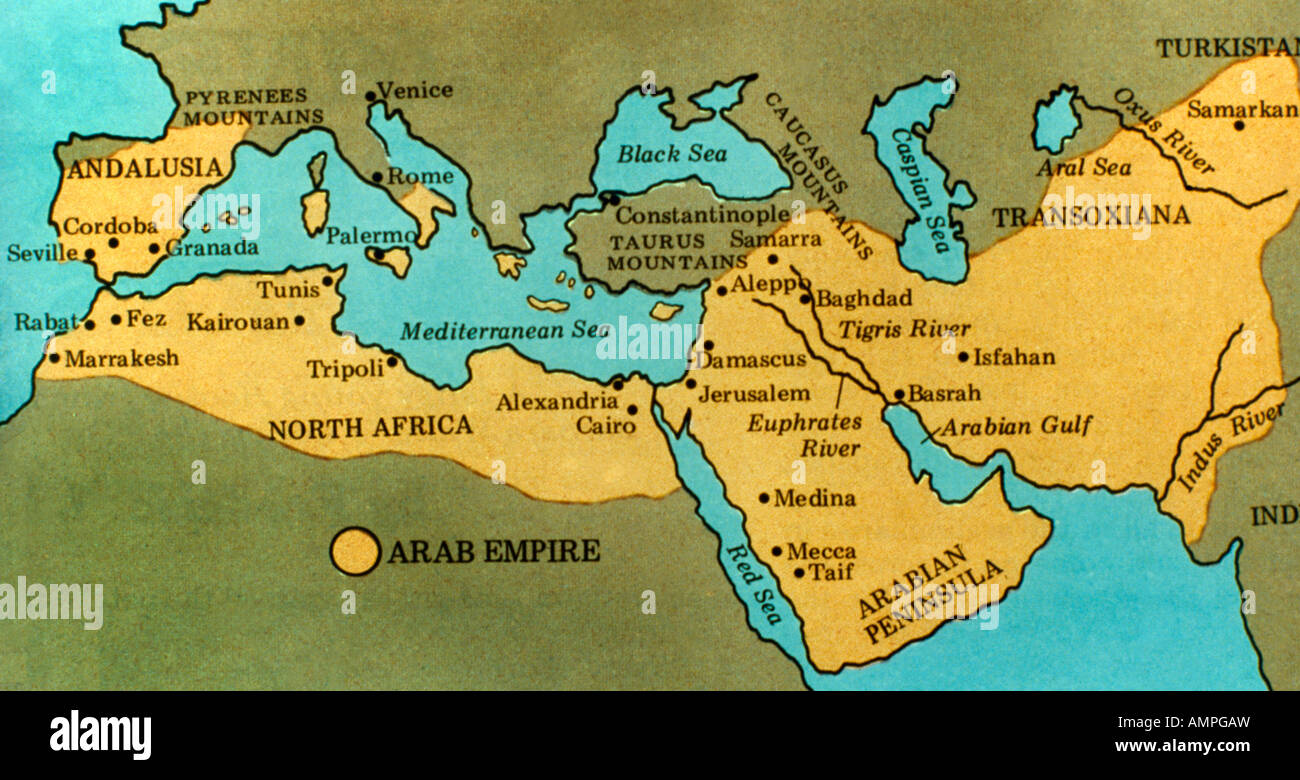 Map of the Arab Empire of the 7th and 8th Century Stock Photohttps://www.alamy.com/image-license-details/?v=1https://www.alamy.com/stock-photo-map-of-the-arab-empire-of-the-7th-and-8th-century-15315456.html
Map of the Arab Empire of the 7th and 8th Century Stock Photohttps://www.alamy.com/image-license-details/?v=1https://www.alamy.com/stock-photo-map-of-the-arab-empire-of-the-7th-and-8th-century-15315456.htmlRMAMPGAW–Map of the Arab Empire of the 7th and 8th Century
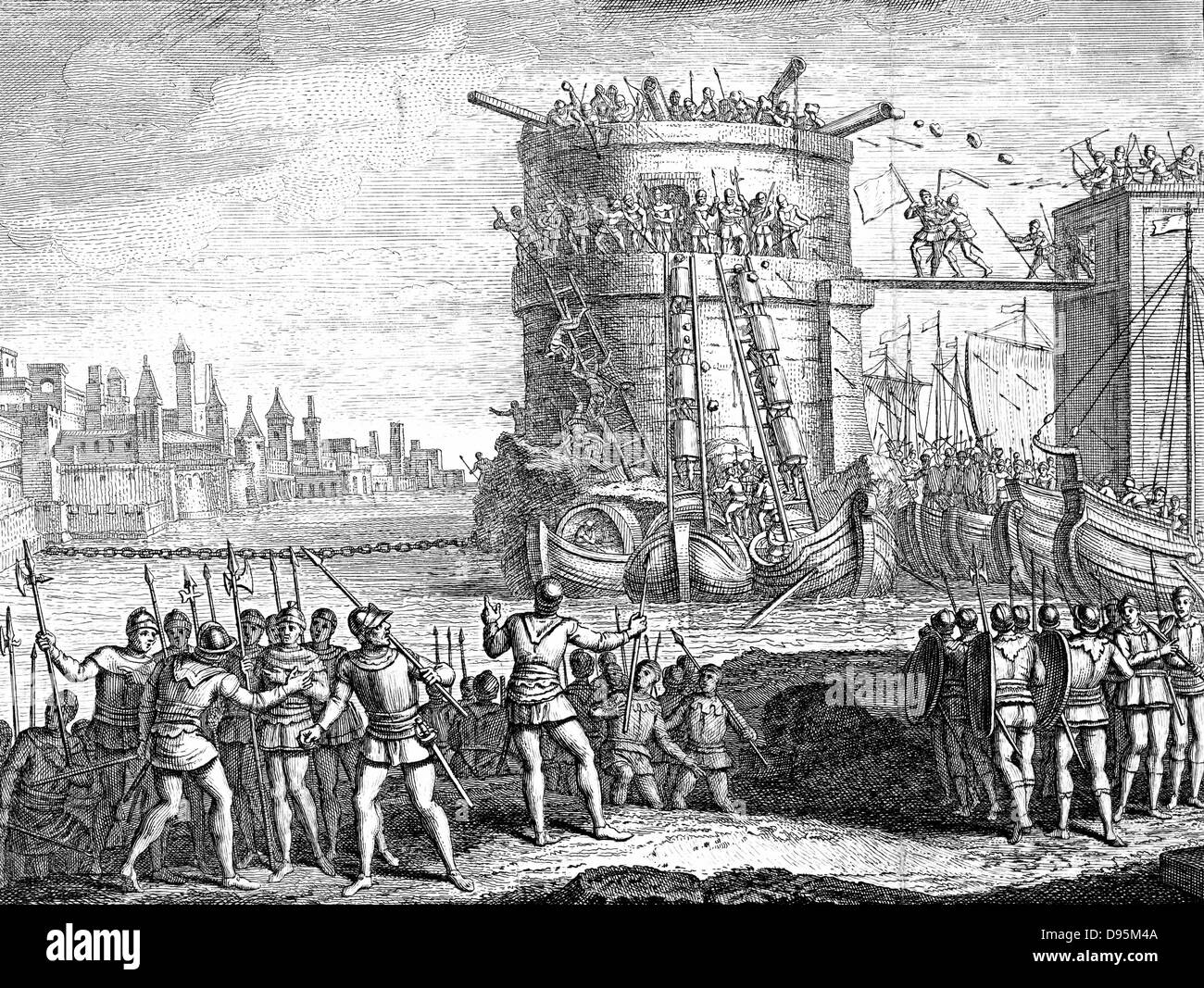 Siege of Damietta, Nile Delta. Important commercial centre for Arab textile trade. Briefly in Crusader hands 1219-21, 1249-50 (6th and 7th crusades). Centre left, chain stretched across harbour entrance to prevent invading vessels passing. Centre, defenders fighting off troops attacking tower using scaling ladders mounted on ships. 18th century engraving Stock Photohttps://www.alamy.com/image-license-details/?v=1https://www.alamy.com/stock-photo-siege-of-damietta-nile-delta-important-commercial-centre-for-arab-57288570.html
Siege of Damietta, Nile Delta. Important commercial centre for Arab textile trade. Briefly in Crusader hands 1219-21, 1249-50 (6th and 7th crusades). Centre left, chain stretched across harbour entrance to prevent invading vessels passing. Centre, defenders fighting off troops attacking tower using scaling ladders mounted on ships. 18th century engraving Stock Photohttps://www.alamy.com/image-license-details/?v=1https://www.alamy.com/stock-photo-siege-of-damietta-nile-delta-important-commercial-centre-for-arab-57288570.htmlRMD95M4A–Siege of Damietta, Nile Delta. Important commercial centre for Arab textile trade. Briefly in Crusader hands 1219-21, 1249-50 (6th and 7th crusades). Centre left, chain stretched across harbour entrance to prevent invading vessels passing. Centre, defenders fighting off troops attacking tower using scaling ladders mounted on ships. 18th century engraving
 Arab fleets approaching Byzantium are forced to retreat, 672. From Liebig series: Episodes historiques de l'Empire d'Orient, Stock Photohttps://www.alamy.com/image-license-details/?v=1https://www.alamy.com/stock-photo-arab-fleets-approaching-byzantium-are-forced-to-retreat-672-from-liebig-83337469.html
Arab fleets approaching Byzantium are forced to retreat, 672. From Liebig series: Episodes historiques de l'Empire d'Orient, Stock Photohttps://www.alamy.com/image-license-details/?v=1https://www.alamy.com/stock-photo-arab-fleets-approaching-byzantium-are-forced-to-retreat-672-from-liebig-83337469.htmlRMERG9P5–Arab fleets approaching Byzantium are forced to retreat, 672. From Liebig series: Episodes historiques de l'Empire d'Orient,
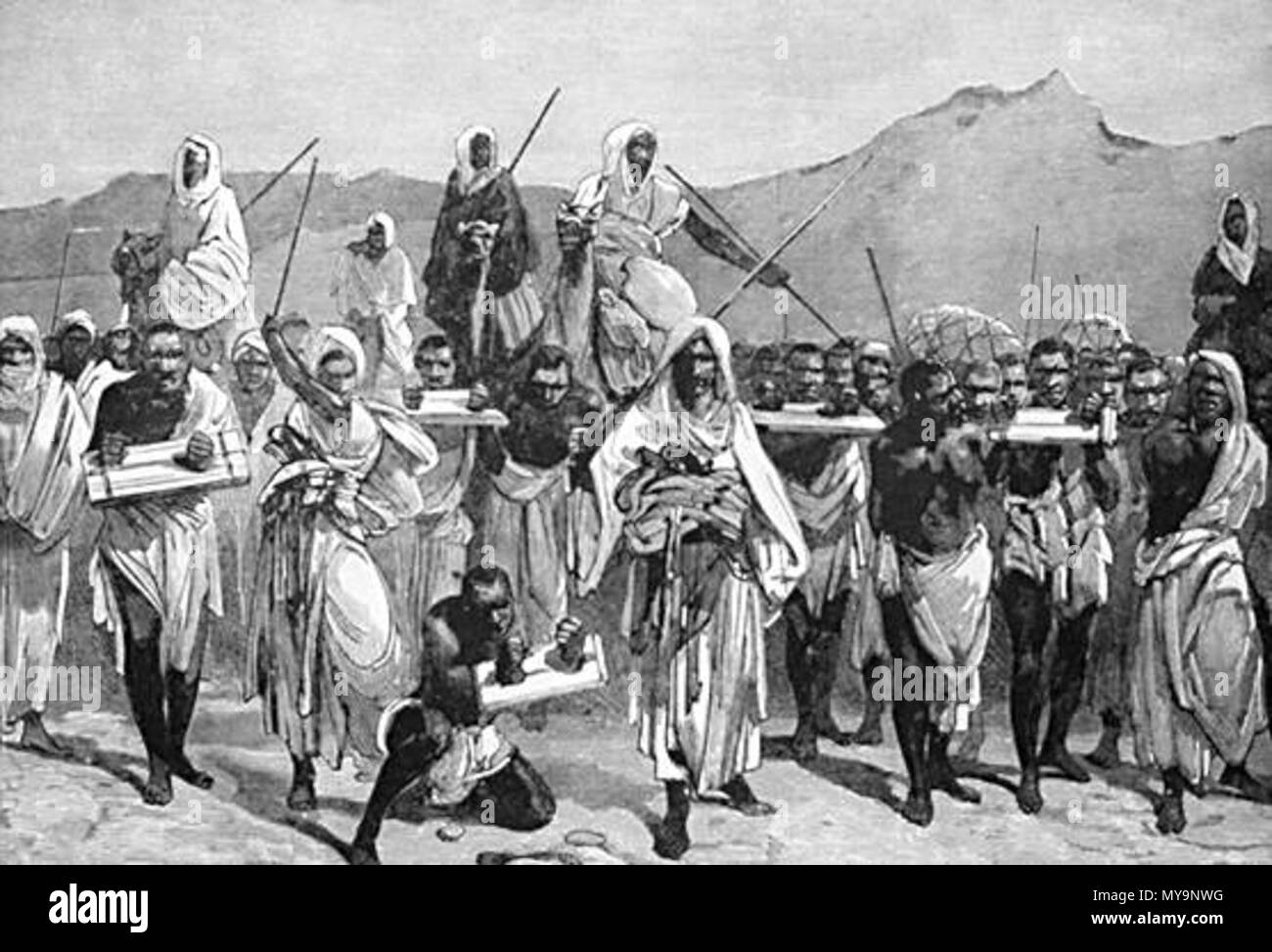 . English: Public domain image more than 100 years since creation, therefore further sourcing not required. Arab Slave Traders. A 19th-century engraving depicting an Arab slave-trading caravan transporting black African slaves across the Sahara. The trans-Saharan slave trade developed in the 7th and 8th centuries as Muslim Arabs conquered most of North Africa. The trade grew significantly from the 10th to the 15th century and peaked in the mid-19th century . 19th-century 18 March 2007 (original upload date). 19th-century engraving Uploaded by DavidYork71 at en.wikipedia 47 Arabslavers Stock Photohttps://www.alamy.com/image-license-details/?v=1https://www.alamy.com/english-public-domain-image-more-than-100-years-since-creation-therefore-further-sourcing-not-required-arab-slave-traders-a-19th-century-engraving-depicting-an-arab-slave-trading-caravan-transporting-black-african-slaves-across-the-sahara-the-trans-saharan-slave-trade-developed-in-the-7th-and-8th-centuries-as-muslim-arabs-conquered-most-of-north-africa-the-trade-grew-significantly-from-the-10th-to-the-15th-century-and-peaked-in-the-mid-19th-century-19th-century-18-march-2007-original-upload-date-19th-century-engraving-uploaded-by-davidyork71-at-enwikipedia-47-arabslavers-image188914140.html
. English: Public domain image more than 100 years since creation, therefore further sourcing not required. Arab Slave Traders. A 19th-century engraving depicting an Arab slave-trading caravan transporting black African slaves across the Sahara. The trans-Saharan slave trade developed in the 7th and 8th centuries as Muslim Arabs conquered most of North Africa. The trade grew significantly from the 10th to the 15th century and peaked in the mid-19th century . 19th-century 18 March 2007 (original upload date). 19th-century engraving Uploaded by DavidYork71 at en.wikipedia 47 Arabslavers Stock Photohttps://www.alamy.com/image-license-details/?v=1https://www.alamy.com/english-public-domain-image-more-than-100-years-since-creation-therefore-further-sourcing-not-required-arab-slave-traders-a-19th-century-engraving-depicting-an-arab-slave-trading-caravan-transporting-black-african-slaves-across-the-sahara-the-trans-saharan-slave-trade-developed-in-the-7th-and-8th-centuries-as-muslim-arabs-conquered-most-of-north-africa-the-trade-grew-significantly-from-the-10th-to-the-15th-century-and-peaked-in-the-mid-19th-century-19th-century-18-march-2007-original-upload-date-19th-century-engraving-uploaded-by-davidyork71-at-enwikipedia-47-arabslavers-image188914140.htmlRMMY9NWG–. English: Public domain image more than 100 years since creation, therefore further sourcing not required. Arab Slave Traders. A 19th-century engraving depicting an Arab slave-trading caravan transporting black African slaves across the Sahara. The trans-Saharan slave trade developed in the 7th and 8th centuries as Muslim Arabs conquered most of North Africa. The trade grew significantly from the 10th to the 15th century and peaked in the mid-19th century . 19th-century 18 March 2007 (original upload date). 19th-century engraving Uploaded by DavidYork71 at en.wikipedia 47 Arabslavers
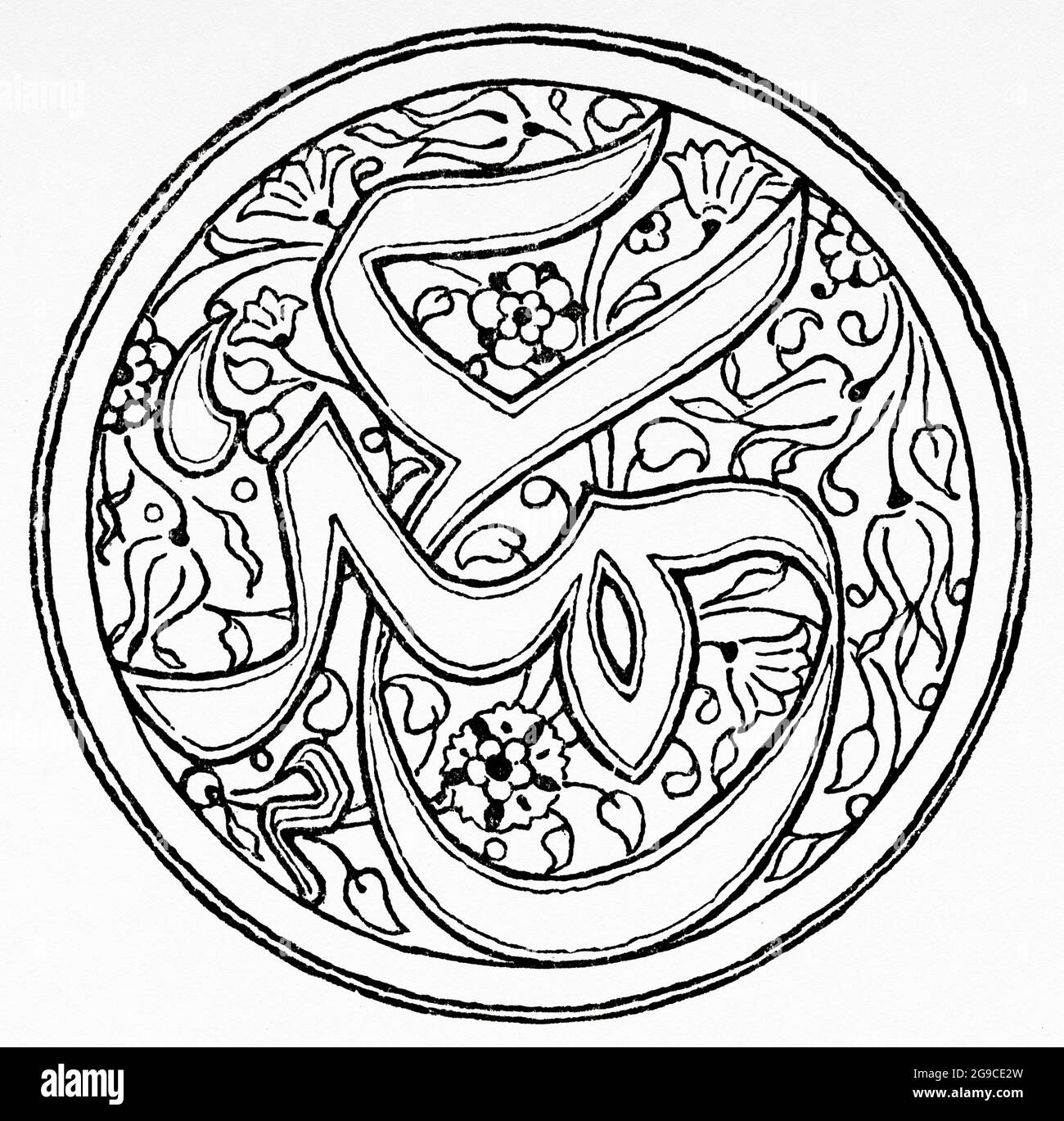 Monogram of Umar ibn al-Khattab (586-644) known as al-Faruq, was a Muslim ruler and jurist, the second Orthodox caliph. Egypt, North Africa. Old 19th century engraved illustration from El Mundo Ilustrado 1879 Stock Photohttps://www.alamy.com/image-license-details/?v=1https://www.alamy.com/monogram-of-umar-ibn-al-khattab-586-644-known-as-al-faruq-was-a-muslim-ruler-and-jurist-the-second-orthodox-caliph-egypt-north-africa-old-19th-century-engraved-illustration-from-el-mundo-ilustrado-1879-image436065585.html
Monogram of Umar ibn al-Khattab (586-644) known as al-Faruq, was a Muslim ruler and jurist, the second Orthodox caliph. Egypt, North Africa. Old 19th century engraved illustration from El Mundo Ilustrado 1879 Stock Photohttps://www.alamy.com/image-license-details/?v=1https://www.alamy.com/monogram-of-umar-ibn-al-khattab-586-644-known-as-al-faruq-was-a-muslim-ruler-and-jurist-the-second-orthodox-caliph-egypt-north-africa-old-19th-century-engraved-illustration-from-el-mundo-ilustrado-1879-image436065585.htmlRM2G9CE2W–Monogram of Umar ibn al-Khattab (586-644) known as al-Faruq, was a Muslim ruler and jurist, the second Orthodox caliph. Egypt, North Africa. Old 19th century engraved illustration from El Mundo Ilustrado 1879
 Page from the Koran (Qur'an) in Hijazi script, ink on parchment, Arabian Peninsula or Near East, late 7th/early 8th century Stock Photohttps://www.alamy.com/image-license-details/?v=1https://www.alamy.com/page-from-the-koran-quran-in-hijazi-script-ink-on-parchment-arabian-peninsula-or-near-east-late-7thearly-8th-century-image356058366.html
Page from the Koran (Qur'an) in Hijazi script, ink on parchment, Arabian Peninsula or Near East, late 7th/early 8th century Stock Photohttps://www.alamy.com/image-license-details/?v=1https://www.alamy.com/page-from-the-koran-quran-in-hijazi-script-ink-on-parchment-arabian-peninsula-or-near-east-late-7thearly-8th-century-image356058366.htmlRM2BK7T26–Page from the Koran (Qur'an) in Hijazi script, ink on parchment, Arabian Peninsula or Near East, late 7th/early 8th century
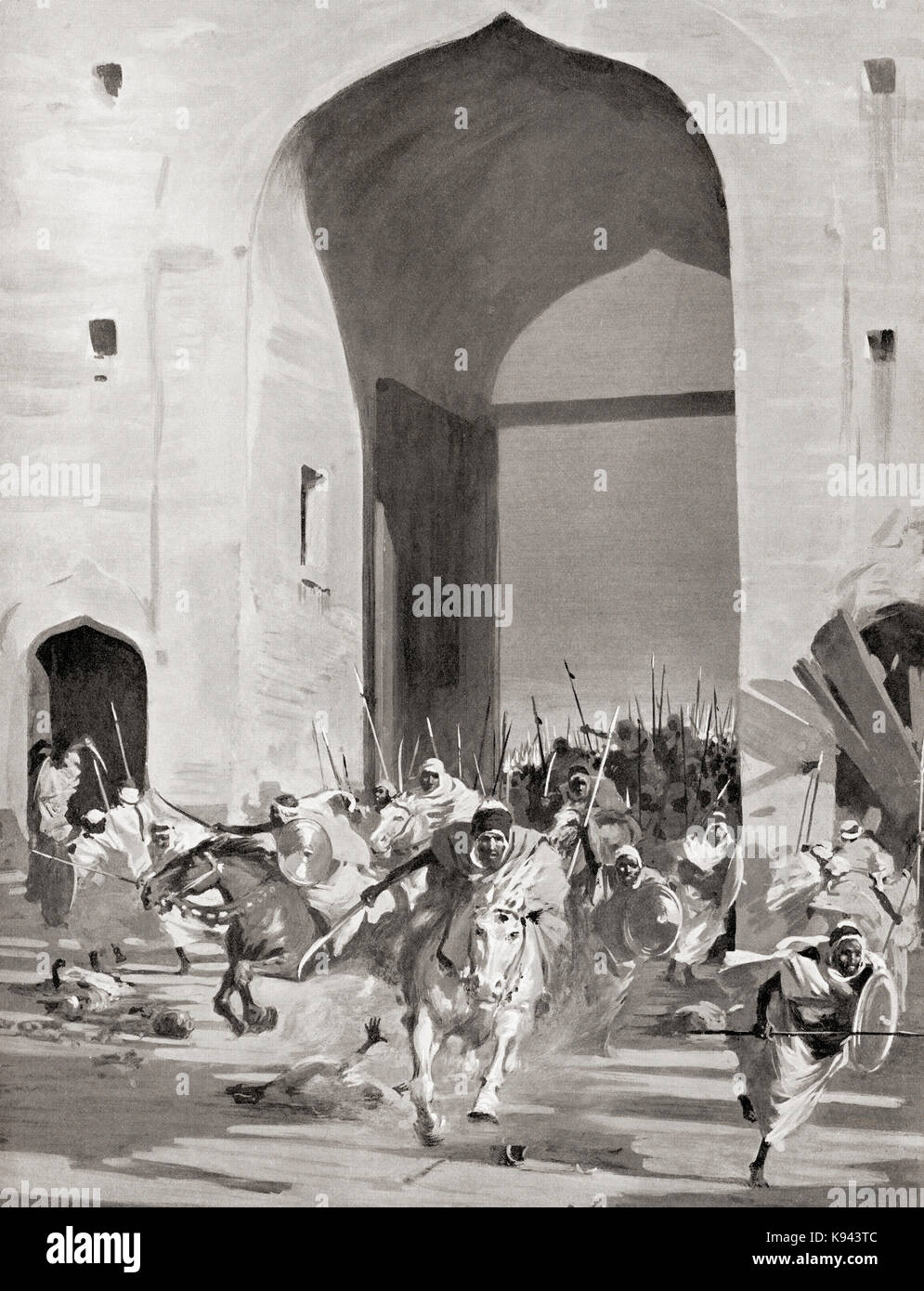 The Arab conquest of the fortified city of Laodicea, aka Laodicea in Syria or Laodicea ad mare, in 637 AD. After the painting by W.S. Bagdatopoulus, (1888-1965). From Hutchinson's History of the Nations, published 1915. Stock Photohttps://www.alamy.com/image-license-details/?v=1https://www.alamy.com/stock-image-the-arab-conquest-of-the-fortified-city-of-laodicea-aka-laodicea-in-160516060.html
The Arab conquest of the fortified city of Laodicea, aka Laodicea in Syria or Laodicea ad mare, in 637 AD. After the painting by W.S. Bagdatopoulus, (1888-1965). From Hutchinson's History of the Nations, published 1915. Stock Photohttps://www.alamy.com/image-license-details/?v=1https://www.alamy.com/stock-image-the-arab-conquest-of-the-fortified-city-of-laodicea-aka-laodicea-in-160516060.htmlRMK943TC–The Arab conquest of the fortified city of Laodicea, aka Laodicea in Syria or Laodicea ad mare, in 637 AD. After the painting by W.S. Bagdatopoulus, (1888-1965). From Hutchinson's History of the Nations, published 1915.
 Syrian Arab Republic. Rueiha. Dead Cities. From Roman Empire to Byzantine Christianity, 1st to 7th century, abandoned between 8th to10th centuries. The ruins have been reused by the Bedouins to build their homes. View of Bedouin adobe oven. Photo taken before the Syrian civil war. Stock Photohttps://www.alamy.com/image-license-details/?v=1https://www.alamy.com/syrian-arab-republic-rueiha-dead-cities-from-roman-empire-to-byzantine-christianity-1st-to-7th-century-abandoned-between-8th-to10th-centuries-the-ruins-have-been-reused-by-the-bedouins-to-build-their-homes-view-of-bedouin-adobe-oven-photo-taken-before-the-syrian-civil-war-image340581071.html
Syrian Arab Republic. Rueiha. Dead Cities. From Roman Empire to Byzantine Christianity, 1st to 7th century, abandoned between 8th to10th centuries. The ruins have been reused by the Bedouins to build their homes. View of Bedouin adobe oven. Photo taken before the Syrian civil war. Stock Photohttps://www.alamy.com/image-license-details/?v=1https://www.alamy.com/syrian-arab-republic-rueiha-dead-cities-from-roman-empire-to-byzantine-christianity-1st-to-7th-century-abandoned-between-8th-to10th-centuries-the-ruins-have-been-reused-by-the-bedouins-to-build-their-homes-view-of-bedouin-adobe-oven-photo-taken-before-the-syrian-civil-war-image340581071.htmlRM2AP2PHK–Syrian Arab Republic. Rueiha. Dead Cities. From Roman Empire to Byzantine Christianity, 1st to 7th century, abandoned between 8th to10th centuries. The ruins have been reused by the Bedouins to build their homes. View of Bedouin adobe oven. Photo taken before the Syrian civil war.
 Ruins of al-Fustat, the site of an Arab army encampment that grew into what was to become Cairo. Dates from 7th century CE Stock Photohttps://www.alamy.com/image-license-details/?v=1https://www.alamy.com/ruins-of-al-fustat-the-site-of-an-arab-army-encampment-that-grew-into-what-was-to-become-cairo-dates-from-7th-century-ce-image332830487.html
Ruins of al-Fustat, the site of an Arab army encampment that grew into what was to become Cairo. Dates from 7th century CE Stock Photohttps://www.alamy.com/image-license-details/?v=1https://www.alamy.com/ruins-of-al-fustat-the-site-of-an-arab-army-encampment-that-grew-into-what-was-to-become-cairo-dates-from-7th-century-ce-image332830487.htmlRM2A9DMK3–Ruins of al-Fustat, the site of an Arab army encampment that grew into what was to become Cairo. Dates from 7th century CE
 The market historic town of Lamu founded by Moslem Arab traders from the Persian Gulf in the 7th century Lamu Island Indian Ocea Stock Photohttps://www.alamy.com/image-license-details/?v=1https://www.alamy.com/the-market-historic-town-of-lamu-founded-by-moslem-arab-traders-from-image2431442.html
The market historic town of Lamu founded by Moslem Arab traders from the Persian Gulf in the 7th century Lamu Island Indian Ocea Stock Photohttps://www.alamy.com/image-license-details/?v=1https://www.alamy.com/the-market-historic-town-of-lamu-founded-by-moslem-arab-traders-from-image2431442.htmlRFACH9D3–The market historic town of Lamu founded by Moslem Arab traders from the Persian Gulf in the 7th century Lamu Island Indian Ocea
 Roundel, Roman period (30 B.C.– 641 A.D.)/Arab period (641–969), 7th century, Coptic, Egypt, Egypt, Wool and linen, slit tapestry weave, 25.4 × 20.3 cm (10 × 8 in Stock Photohttps://www.alamy.com/image-license-details/?v=1https://www.alamy.com/roundel-roman-period-30-bc-641-adarab-period-641969-7th-century-coptic-egypt-egypt-wool-and-linen-slit-tapestry-weave-254-203-cm-10-8-in-image328615569.html
Roundel, Roman period (30 B.C.– 641 A.D.)/Arab period (641–969), 7th century, Coptic, Egypt, Egypt, Wool and linen, slit tapestry weave, 25.4 × 20.3 cm (10 × 8 in Stock Photohttps://www.alamy.com/image-license-details/?v=1https://www.alamy.com/roundel-roman-period-30-bc-641-adarab-period-641969-7th-century-coptic-egypt-egypt-wool-and-linen-slit-tapestry-weave-254-203-cm-10-8-in-image328615569.htmlRM2A2HME9–Roundel, Roman period (30 B.C.– 641 A.D.)/Arab period (641–969), 7th century, Coptic, Egypt, Egypt, Wool and linen, slit tapestry weave, 25.4 × 20.3 cm (10 × 8 in
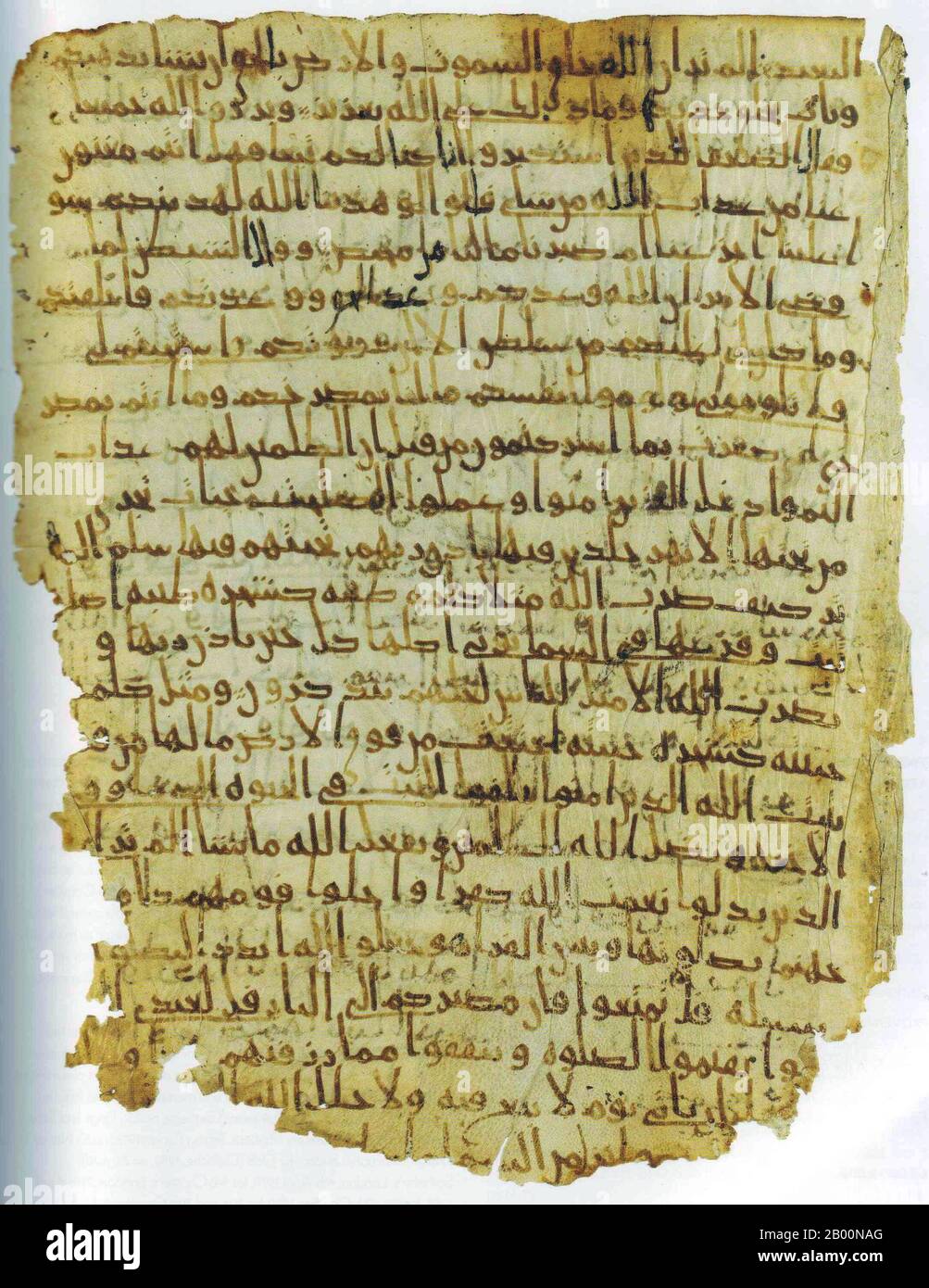 Arabia: Very early Arabic Qur'anic calligraphy thought to date from the 2nd half of the 7th century CE. A single leaf (measuring 35.5 x 27.5 cm) of what is said to be a Hijazi Qur'an and to date from the second half of the 7th century CE. Recto. Stock Photohttps://www.alamy.com/image-license-details/?v=1https://www.alamy.com/arabia-very-early-arabic-quranic-calligraphy-thought-to-date-from-the-2nd-half-of-the-7th-century-ce-a-single-leaf-measuring-355-x-275-cm-of-what-is-said-to-be-a-hijazi-quran-and-to-date-from-the-second-half-of-the-7th-century-ce-recto-image344224120.html
Arabia: Very early Arabic Qur'anic calligraphy thought to date from the 2nd half of the 7th century CE. A single leaf (measuring 35.5 x 27.5 cm) of what is said to be a Hijazi Qur'an and to date from the second half of the 7th century CE. Recto. Stock Photohttps://www.alamy.com/image-license-details/?v=1https://www.alamy.com/arabia-very-early-arabic-quranic-calligraphy-thought-to-date-from-the-2nd-half-of-the-7th-century-ce-a-single-leaf-measuring-355-x-275-cm-of-what-is-said-to-be-a-hijazi-quran-and-to-date-from-the-second-half-of-the-7th-century-ce-recto-image344224120.htmlRM2B00NAG–Arabia: Very early Arabic Qur'anic calligraphy thought to date from the 2nd half of the 7th century CE. A single leaf (measuring 35.5 x 27.5 cm) of what is said to be a Hijazi Qur'an and to date from the second half of the 7th century CE. Recto.
 Vintage illustrated table with a panoramic view of the antique city of Tripoli capital of Libya founded by the Phoenicians in the 7th century BC, situated on the Mediterranean sea coast Stock Photohttps://www.alamy.com/image-license-details/?v=1https://www.alamy.com/vintage-illustrated-table-with-a-panoramic-view-of-the-antique-city-of-tripoli-capital-of-libya-founded-by-the-phoenicians-in-the-7th-century-bc-situated-on-the-mediterranean-sea-coast-image356280220.html
Vintage illustrated table with a panoramic view of the antique city of Tripoli capital of Libya founded by the Phoenicians in the 7th century BC, situated on the Mediterranean sea coast Stock Photohttps://www.alamy.com/image-license-details/?v=1https://www.alamy.com/vintage-illustrated-table-with-a-panoramic-view-of-the-antique-city-of-tripoli-capital-of-libya-founded-by-the-phoenicians-in-the-7th-century-bc-situated-on-the-mediterranean-sea-coast-image356280220.htmlRF2BKHY1G–Vintage illustrated table with a panoramic view of the antique city of Tripoli capital of Libya founded by the Phoenicians in the 7th century BC, situated on the Mediterranean sea coast
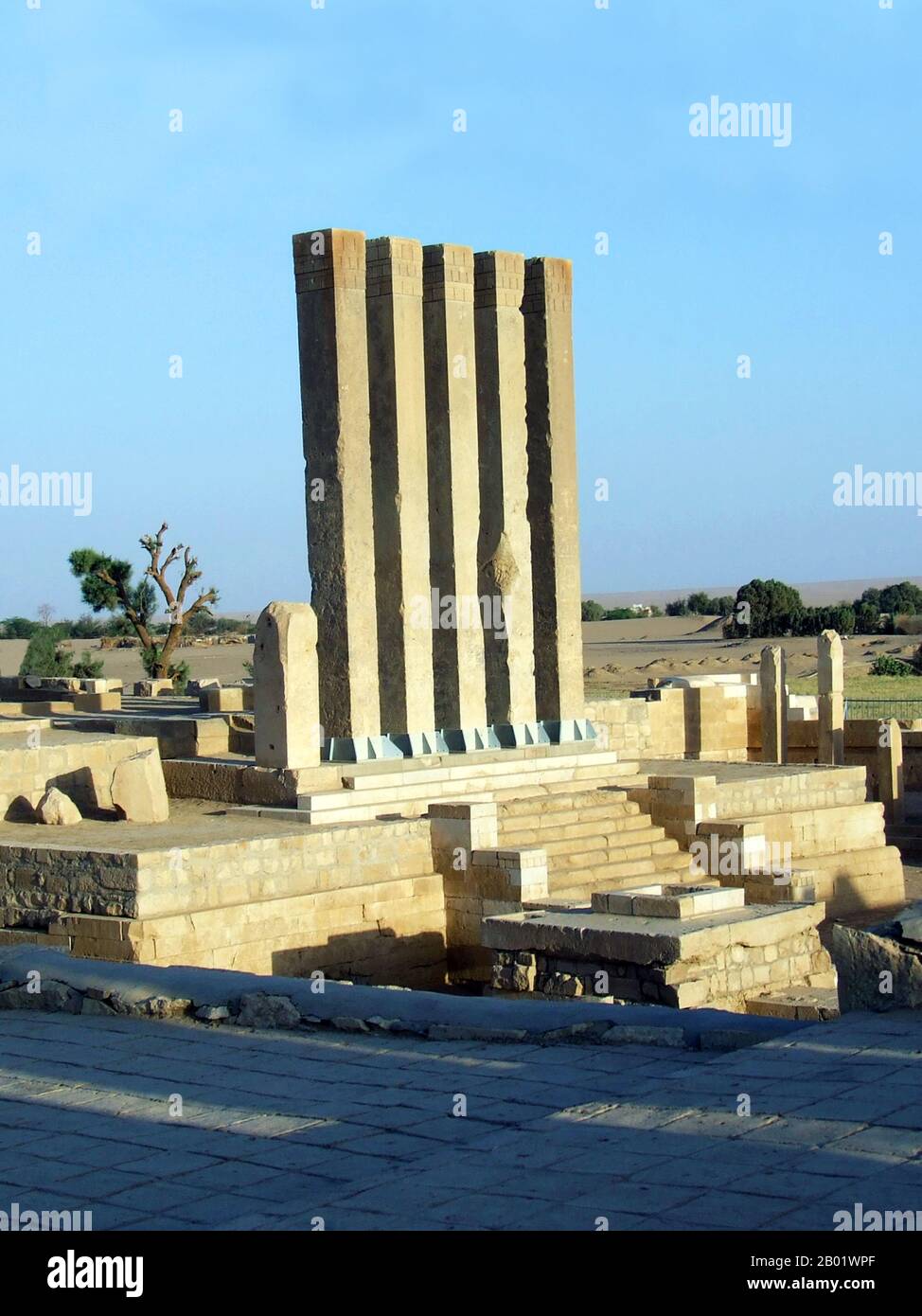 Yemen: The Temple of Awwam (Mahram Bilqis) dedicated to the Moon God Almaqah at Ma'rib, former capital of the Sabaean Kingdom, c. 7th-5th century BCE. Ma'rib or Marib is the capital city of the Ma'rib Governorate, Yemen and was the capital of the Sabaean kingdom, which some scholars believe to be the ancient Sheba of biblical fame. It is located at approximately 120 kilometres east of Yemen's modern capital, Sana'a. Stock Photohttps://www.alamy.com/image-license-details/?v=1https://www.alamy.com/yemen-the-temple-of-awwam-mahram-bilqis-dedicated-to-the-moon-god-almaqah-at-marib-former-capital-of-the-sabaean-kingdom-c-7th-5th-century-bce-marib-or-marib-is-the-capital-city-of-the-marib-governorate-yemen-and-was-the-capital-of-the-sabaean-kingdom-which-some-scholars-believe-to-be-the-ancient-sheba-of-biblical-fame-it-is-located-at-approximately-120-kilometres-east-of-yemens-modern-capital-sanaa-image344249543.html
Yemen: The Temple of Awwam (Mahram Bilqis) dedicated to the Moon God Almaqah at Ma'rib, former capital of the Sabaean Kingdom, c. 7th-5th century BCE. Ma'rib or Marib is the capital city of the Ma'rib Governorate, Yemen and was the capital of the Sabaean kingdom, which some scholars believe to be the ancient Sheba of biblical fame. It is located at approximately 120 kilometres east of Yemen's modern capital, Sana'a. Stock Photohttps://www.alamy.com/image-license-details/?v=1https://www.alamy.com/yemen-the-temple-of-awwam-mahram-bilqis-dedicated-to-the-moon-god-almaqah-at-marib-former-capital-of-the-sabaean-kingdom-c-7th-5th-century-bce-marib-or-marib-is-the-capital-city-of-the-marib-governorate-yemen-and-was-the-capital-of-the-sabaean-kingdom-which-some-scholars-believe-to-be-the-ancient-sheba-of-biblical-fame-it-is-located-at-approximately-120-kilometres-east-of-yemens-modern-capital-sanaa-image344249543.htmlRM2B01WPF–Yemen: The Temple of Awwam (Mahram Bilqis) dedicated to the Moon God Almaqah at Ma'rib, former capital of the Sabaean Kingdom, c. 7th-5th century BCE. Ma'rib or Marib is the capital city of the Ma'rib Governorate, Yemen and was the capital of the Sabaean kingdom, which some scholars believe to be the ancient Sheba of biblical fame. It is located at approximately 120 kilometres east of Yemen's modern capital, Sana'a.
 1855 Spruner Map of Africa up to the Arab conquests in the 7th century Stock Photohttps://www.alamy.com/image-license-details/?v=1https://www.alamy.com/stock-photo-1855-spruner-map-of-africa-up-to-the-arab-conquests-in-the-7th-century-43378240.html
1855 Spruner Map of Africa up to the Arab conquests in the 7th century Stock Photohttps://www.alamy.com/image-license-details/?v=1https://www.alamy.com/stock-photo-1855-spruner-map-of-africa-up-to-the-arab-conquests-in-the-7th-century-43378240.htmlRMCEG1AT–1855 Spruner Map of Africa up to the Arab conquests in the 7th century
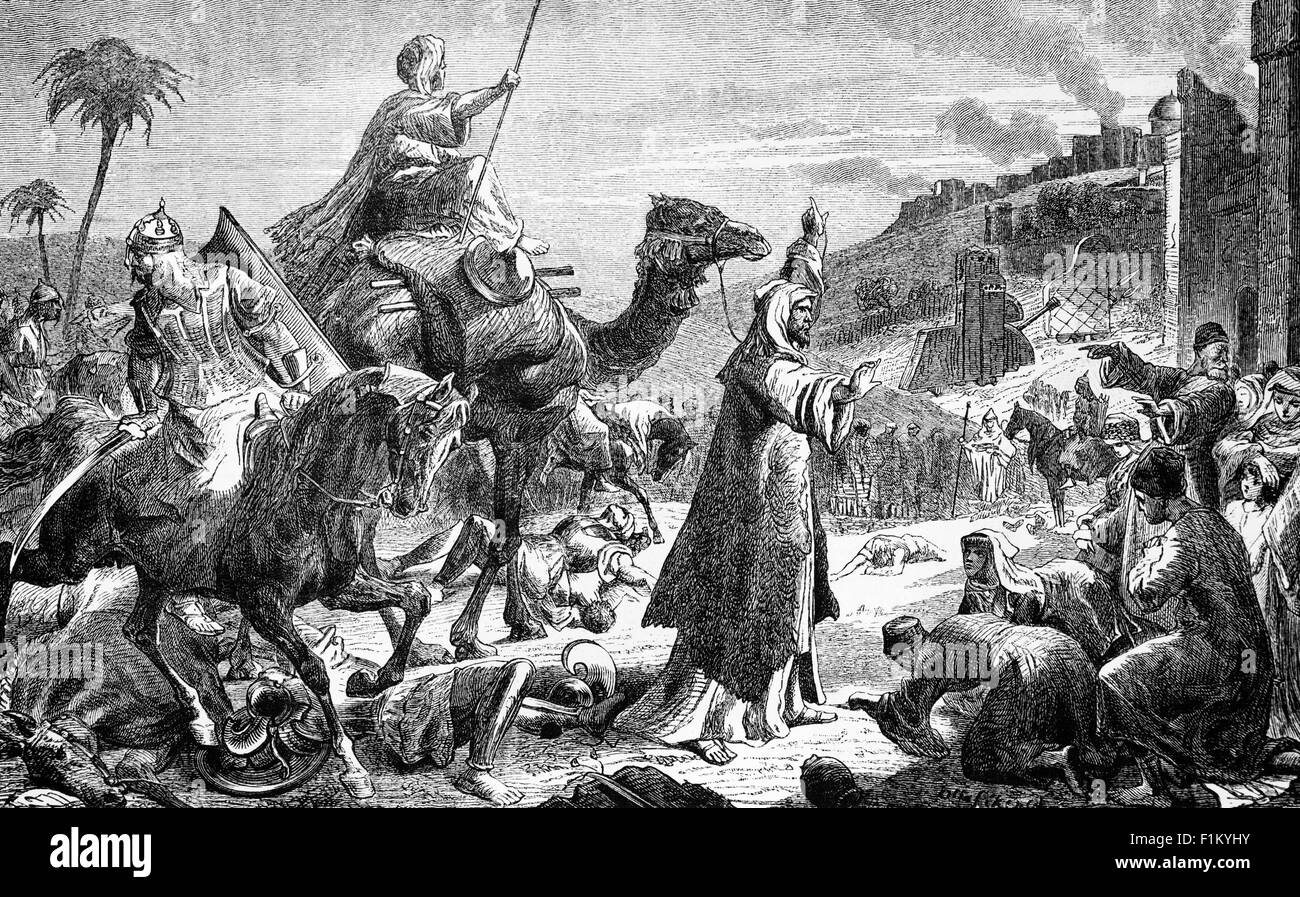 In 638 CE, following the Siege of Jerusalem, the Caliph Omar Ibn al-Khattab and Safforonius, the Patriarch of Jerusalem, signed Al-Uhda al-'Omariyya (The Umariyya Covenant), an agreement that stipulated the rights and obligations of all non-Muslims in Palestine. Stock Photohttps://www.alamy.com/image-license-details/?v=1https://www.alamy.com/stock-photo-in-638-ce-following-the-siege-of-jerusalem-the-caliph-omar-ibn-al-87105255.html
In 638 CE, following the Siege of Jerusalem, the Caliph Omar Ibn al-Khattab and Safforonius, the Patriarch of Jerusalem, signed Al-Uhda al-'Omariyya (The Umariyya Covenant), an agreement that stipulated the rights and obligations of all non-Muslims in Palestine. Stock Photohttps://www.alamy.com/image-license-details/?v=1https://www.alamy.com/stock-photo-in-638-ce-following-the-siege-of-jerusalem-the-caliph-omar-ibn-al-87105255.htmlRMF1KYHY–In 638 CE, following the Siege of Jerusalem, the Caliph Omar Ibn al-Khattab and Safforonius, the Patriarch of Jerusalem, signed Al-Uhda al-'Omariyya (The Umariyya Covenant), an agreement that stipulated the rights and obligations of all non-Muslims in Palestine.
 Mosque of Dome of the Rock in Jerusalem, Palestine 1894. Built in 7th century Stock Photohttps://www.alamy.com/image-license-details/?v=1https://www.alamy.com/stock-photo-mosque-of-dome-of-the-rock-in-jerusalem-palestine-1894-built-in-7th-83346655.html
Mosque of Dome of the Rock in Jerusalem, Palestine 1894. Built in 7th century Stock Photohttps://www.alamy.com/image-license-details/?v=1https://www.alamy.com/stock-photo-mosque-of-dome-of-the-rock-in-jerusalem-palestine-1894-built-in-7th-83346655.htmlRMERGNE7–Mosque of Dome of the Rock in Jerusalem, Palestine 1894. Built in 7th century
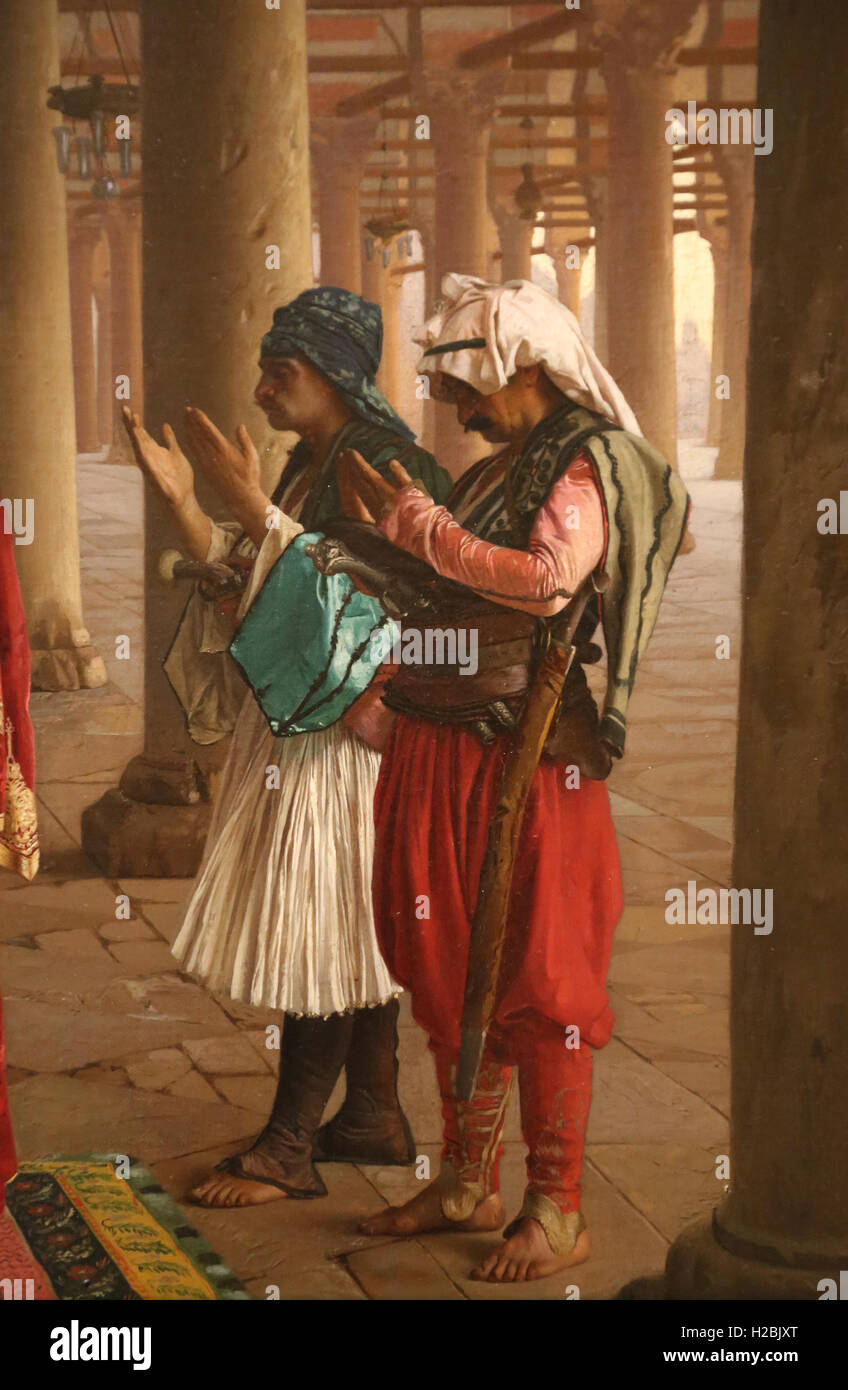 Jean-Leon Gerome (1824-1904). French painter. Player in the Mosque, 1871. Scene interior mosque of 'Amr in Cairo, 7th century. Stock Photohttps://www.alamy.com/image-license-details/?v=1https://www.alamy.com/stock-photo-jean-leon-gerome-1824-1904-french-painter-player-in-the-mosque-1871-121958224.html
Jean-Leon Gerome (1824-1904). French painter. Player in the Mosque, 1871. Scene interior mosque of 'Amr in Cairo, 7th century. Stock Photohttps://www.alamy.com/image-license-details/?v=1https://www.alamy.com/stock-photo-jean-leon-gerome-1824-1904-french-painter-player-in-the-mosque-1871-121958224.htmlRMH2BJXT–Jean-Leon Gerome (1824-1904). French painter. Player in the Mosque, 1871. Scene interior mosque of 'Amr in Cairo, 7th century.
 Golden Dome of the Rock on Temple Mount Jerusalem Israel Stock Photohttps://www.alamy.com/image-license-details/?v=1https://www.alamy.com/stock-photo-golden-dome-of-the-rock-on-temple-mount-jerusalem-israel-75159912.html
Golden Dome of the Rock on Temple Mount Jerusalem Israel Stock Photohttps://www.alamy.com/image-license-details/?v=1https://www.alamy.com/stock-photo-golden-dome-of-the-rock-on-temple-mount-jerusalem-israel-75159912.htmlRMEA7R6G–Golden Dome of the Rock on Temple Mount Jerusalem Israel
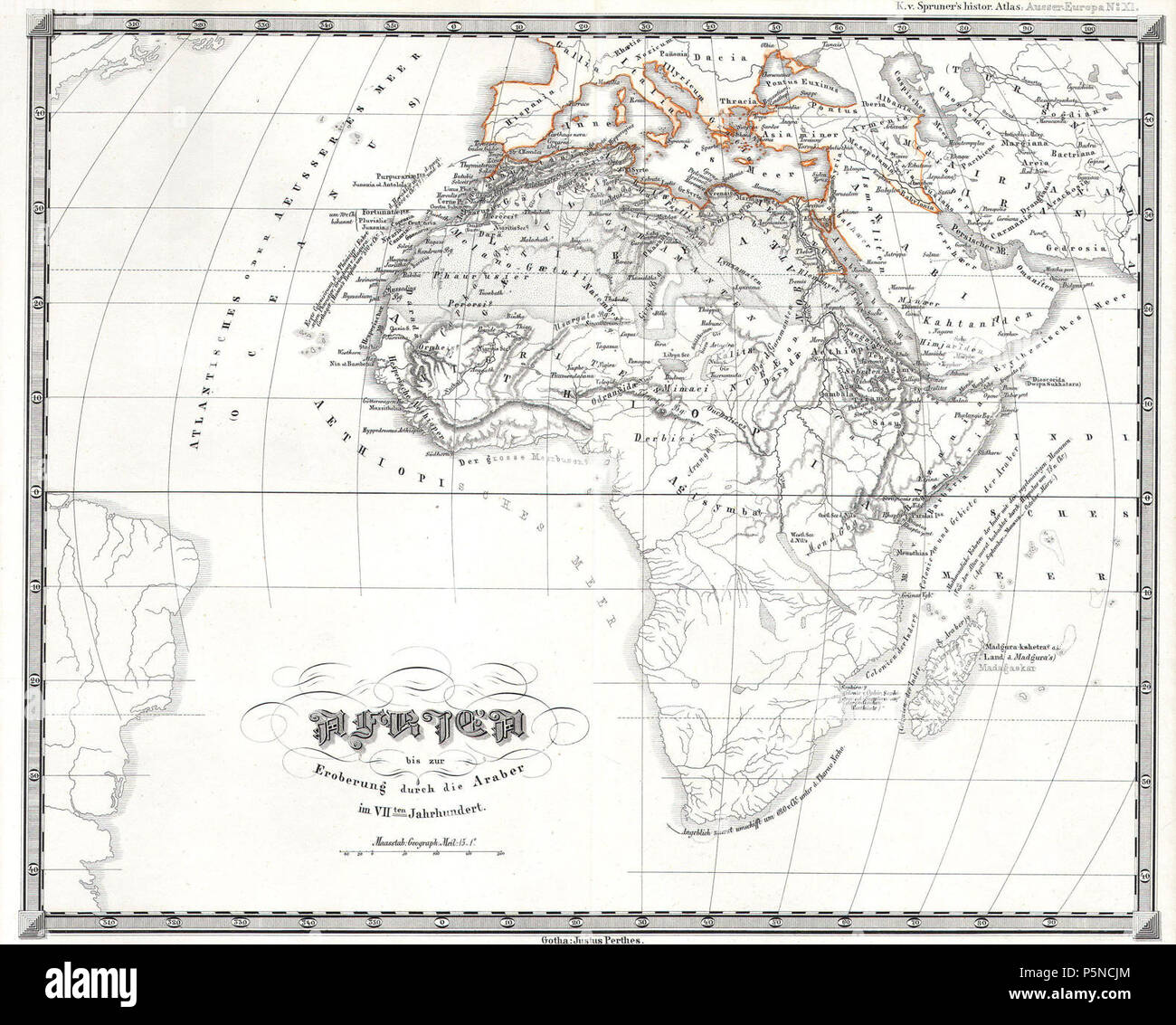 1855 Perthes Map of Africa prior to the Arab Invasions of the 7th Century - Geographicus - AfricaPreArab-perthes-1855. Stock Photohttps://www.alamy.com/image-license-details/?v=1https://www.alamy.com/1855-perthes-map-of-africa-prior-to-the-arab-invasions-of-the-7th-century-geographicus-africaprearab-perthes-1855-image210068620.html
1855 Perthes Map of Africa prior to the Arab Invasions of the 7th Century - Geographicus - AfricaPreArab-perthes-1855. Stock Photohttps://www.alamy.com/image-license-details/?v=1https://www.alamy.com/1855-perthes-map-of-africa-prior-to-the-arab-invasions-of-the-7th-century-geographicus-africaprearab-perthes-1855-image210068620.htmlRMP5NCJM–1855 Perthes Map of Africa prior to the Arab Invasions of the 7th Century - Geographicus - AfricaPreArab-perthes-1855.
 detail of painting of inner dome, The Dome of the Rock, Jerusalem Stock Photohttps://www.alamy.com/image-license-details/?v=1https://www.alamy.com/stock-photo-detail-of-painting-of-inner-dome-the-dome-of-the-rock-jerusalem-122372204.html
detail of painting of inner dome, The Dome of the Rock, Jerusalem Stock Photohttps://www.alamy.com/image-license-details/?v=1https://www.alamy.com/stock-photo-detail-of-painting-of-inner-dome-the-dome-of-the-rock-jerusalem-122372204.htmlRMH32EYT–detail of painting of inner dome, The Dome of the Rock, Jerusalem
 The Hegira: Muhammad traveling to Medina to establish Islam 622 AD. Hand-colored woodcut Stock Photohttps://www.alamy.com/image-license-details/?v=1https://www.alamy.com/stock-photo-the-hegira-muhammad-traveling-to-medina-to-establish-islam-622-ad-22444366.html
The Hegira: Muhammad traveling to Medina to establish Islam 622 AD. Hand-colored woodcut Stock Photohttps://www.alamy.com/image-license-details/?v=1https://www.alamy.com/stock-photo-the-hegira-muhammad-traveling-to-medina-to-establish-islam-622-ad-22444366.htmlRMB8EC0E–The Hegira: Muhammad traveling to Medina to establish Islam 622 AD. Hand-colored woodcut
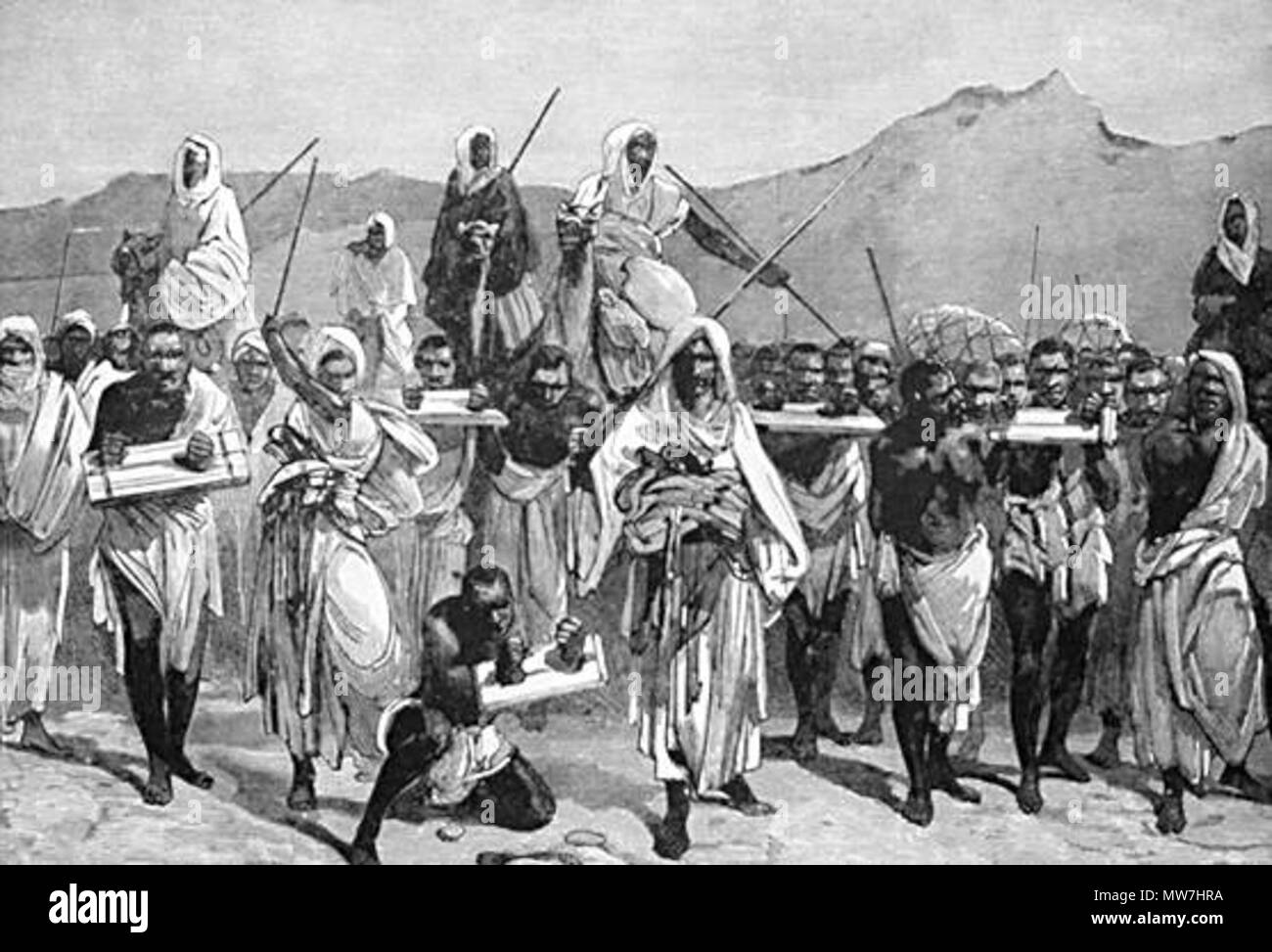 . English: Public domain image more than 100 years since creation, therefore further sourcing not required. Arab Slave Traders. A 19th-century engraving depicting an Arab slave-trading caravan transporting black African slaves across the Sahara. The trans-Saharan slave trade developed in the 7th and 8th centuries as Muslim Arabs conquered most of North Africa. The trade grew significantly from the 10th to the 15th century and peaked in the mid-19th century . 19th-century 18 March 2007 (original upload date). 19th-century engraving Uploaded by DavidYork71 at en.wikipedia 54 Arabslavers Stock Photohttps://www.alamy.com/image-license-details/?v=1https://www.alamy.com/english-public-domain-image-more-than-100-years-since-creation-therefore-further-sourcing-not-required-arab-slave-traders-a-19th-century-engraving-depicting-an-arab-slave-trading-caravan-transporting-black-african-slaves-across-the-sahara-the-trans-saharan-slave-trade-developed-in-the-7th-and-8th-centuries-as-muslim-arabs-conquered-most-of-north-africa-the-trade-grew-significantly-from-the-10th-to-the-15th-century-and-peaked-in-the-mid-19th-century-19th-century-18-march-2007-original-upload-date-19th-century-engraving-uploaded-by-davidyork71-at-enwikipedia-54-arabslavers-image187637726.html
. English: Public domain image more than 100 years since creation, therefore further sourcing not required. Arab Slave Traders. A 19th-century engraving depicting an Arab slave-trading caravan transporting black African slaves across the Sahara. The trans-Saharan slave trade developed in the 7th and 8th centuries as Muslim Arabs conquered most of North Africa. The trade grew significantly from the 10th to the 15th century and peaked in the mid-19th century . 19th-century 18 March 2007 (original upload date). 19th-century engraving Uploaded by DavidYork71 at en.wikipedia 54 Arabslavers Stock Photohttps://www.alamy.com/image-license-details/?v=1https://www.alamy.com/english-public-domain-image-more-than-100-years-since-creation-therefore-further-sourcing-not-required-arab-slave-traders-a-19th-century-engraving-depicting-an-arab-slave-trading-caravan-transporting-black-african-slaves-across-the-sahara-the-trans-saharan-slave-trade-developed-in-the-7th-and-8th-centuries-as-muslim-arabs-conquered-most-of-north-africa-the-trade-grew-significantly-from-the-10th-to-the-15th-century-and-peaked-in-the-mid-19th-century-19th-century-18-march-2007-original-upload-date-19th-century-engraving-uploaded-by-davidyork71-at-enwikipedia-54-arabslavers-image187637726.htmlRMMW7HRA–. English: Public domain image more than 100 years since creation, therefore further sourcing not required. Arab Slave Traders. A 19th-century engraving depicting an Arab slave-trading caravan transporting black African slaves across the Sahara. The trans-Saharan slave trade developed in the 7th and 8th centuries as Muslim Arabs conquered most of North Africa. The trade grew significantly from the 10th to the 15th century and peaked in the mid-19th century . 19th-century 18 March 2007 (original upload date). 19th-century engraving Uploaded by DavidYork71 at en.wikipedia 54 Arabslavers
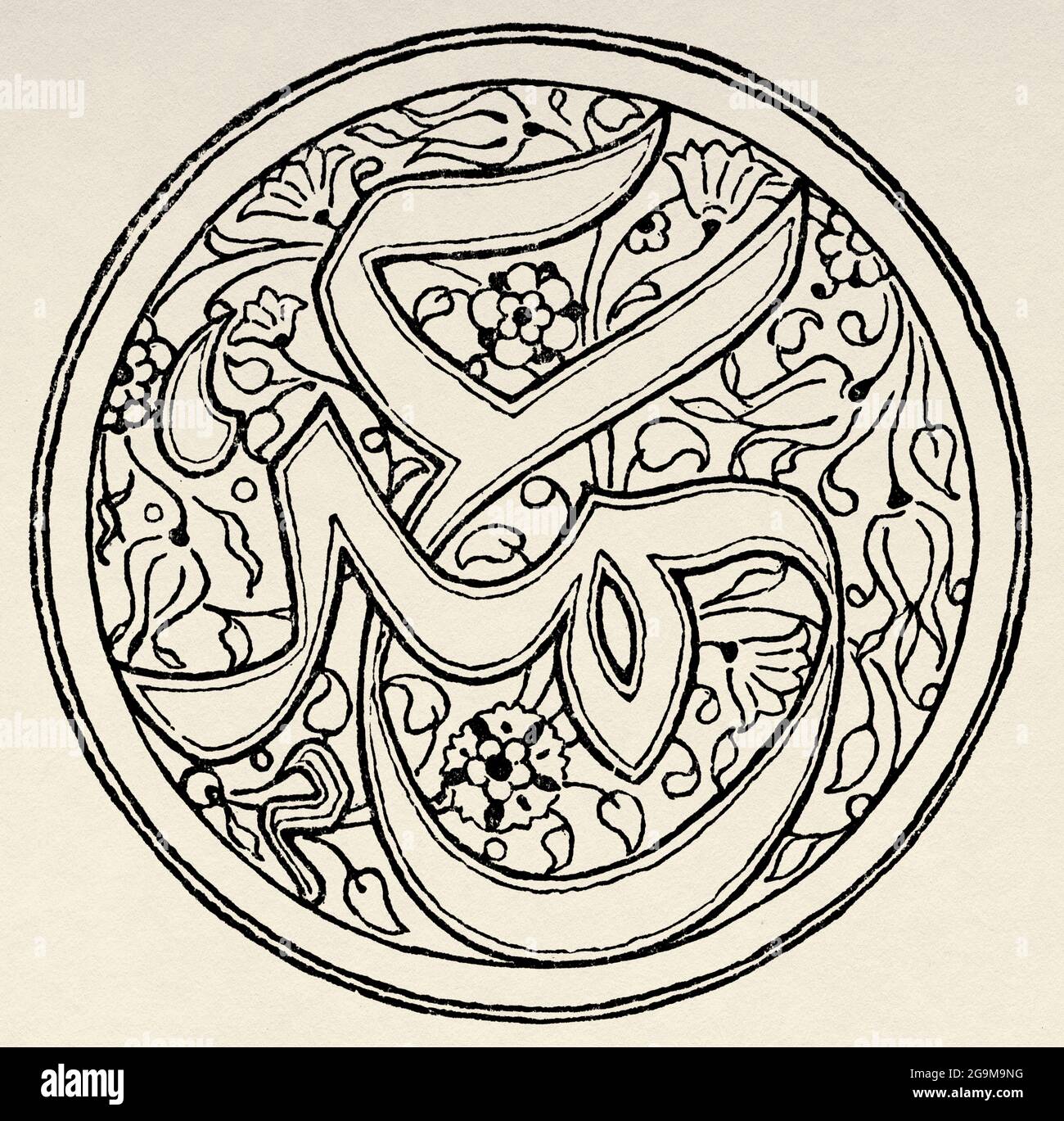 Monogram of Umar ibn al-Khattab (586-644) known as al-Faruq, was a Muslim ruler and jurist, the second Orthodox caliph. Egypt, North Africa. Old 19th century engraved illustration from El Mundo Ilustrado 1879 Stock Photohttps://www.alamy.com/image-license-details/?v=1https://www.alamy.com/monogram-of-umar-ibn-al-khattab-586-644-known-as-al-faruq-was-a-muslim-ruler-and-jurist-the-second-orthodox-caliph-egypt-north-africa-old-19th-century-engraved-illustration-from-el-mundo-ilustrado-1879-image436237804.html
Monogram of Umar ibn al-Khattab (586-644) known as al-Faruq, was a Muslim ruler and jurist, the second Orthodox caliph. Egypt, North Africa. Old 19th century engraved illustration from El Mundo Ilustrado 1879 Stock Photohttps://www.alamy.com/image-license-details/?v=1https://www.alamy.com/monogram-of-umar-ibn-al-khattab-586-644-known-as-al-faruq-was-a-muslim-ruler-and-jurist-the-second-orthodox-caliph-egypt-north-africa-old-19th-century-engraved-illustration-from-el-mundo-ilustrado-1879-image436237804.htmlRM2G9M9NG–Monogram of Umar ibn al-Khattab (586-644) known as al-Faruq, was a Muslim ruler and jurist, the second Orthodox caliph. Egypt, North Africa. Old 19th century engraved illustration from El Mundo Ilustrado 1879
 Tunis, Tunisia. 7th May, 2024. Close up detail of the entrance door of the childhood home of Ibn Khaldun, 14th century Arab Muslim historian, and philosopher, influential in classic Islamic History, Tunis, Tunisia. (Credit Image: © John Wreford/SOPA Images via ZUMA Press Wire) EDITORIAL USAGE ONLY! Not for Commercial USAGE! Stock Photohttps://www.alamy.com/image-license-details/?v=1https://www.alamy.com/tunis-tunisia-7th-may-2024-close-up-detail-of-the-entrance-door-of-the-childhood-home-of-ibn-khaldun-14th-century-arab-muslim-historian-and-philosopher-influential-in-classic-islamic-history-tunis-tunisia-credit-image-john-wrefordsopa-images-via-zuma-press-wire-editorial-usage-only!-not-for-commercial-usage!-image615284938.html
Tunis, Tunisia. 7th May, 2024. Close up detail of the entrance door of the childhood home of Ibn Khaldun, 14th century Arab Muslim historian, and philosopher, influential in classic Islamic History, Tunis, Tunisia. (Credit Image: © John Wreford/SOPA Images via ZUMA Press Wire) EDITORIAL USAGE ONLY! Not for Commercial USAGE! Stock Photohttps://www.alamy.com/image-license-details/?v=1https://www.alamy.com/tunis-tunisia-7th-may-2024-close-up-detail-of-the-entrance-door-of-the-childhood-home-of-ibn-khaldun-14th-century-arab-muslim-historian-and-philosopher-influential-in-classic-islamic-history-tunis-tunisia-credit-image-john-wrefordsopa-images-via-zuma-press-wire-editorial-usage-only!-not-for-commercial-usage!-image615284938.htmlRM2XN0J62–Tunis, Tunisia. 7th May, 2024. Close up detail of the entrance door of the childhood home of Ibn Khaldun, 14th century Arab Muslim historian, and philosopher, influential in classic Islamic History, Tunis, Tunisia. (Credit Image: © John Wreford/SOPA Images via ZUMA Press Wire) EDITORIAL USAGE ONLY! Not for Commercial USAGE!
![Infographic about the origin of Islamic culture in the 7th century in the Arabian peninsula and its expansion during the Middle Age. [QuarkXPress (.qxp); Adobe InDesign (.indd); QuarkXPress (.qxd); 4960x3188]. Stock Photo Infographic about the origin of Islamic culture in the 7th century in the Arabian peninsula and its expansion during the Middle Age. [QuarkXPress (.qxp); Adobe InDesign (.indd); QuarkXPress (.qxd); 4960x3188]. Stock Photo](https://c8.alamy.com/comp/2NEBR5W/infographic-about-the-origin-of-islamic-culture-in-the-7th-century-in-the-arabian-peninsula-and-its-expansion-during-the-middle-age-quarkxpress-qxp-adobe-indesign-indd-quarkxpress-qxd-4960x3188-2NEBR5W.jpg) Infographic about the origin of Islamic culture in the 7th century in the Arabian peninsula and its expansion during the Middle Age. [QuarkXPress (.qxp); Adobe InDesign (.indd); QuarkXPress (.qxd); 4960x3188]. Stock Photohttps://www.alamy.com/image-license-details/?v=1https://www.alamy.com/infographic-about-the-origin-of-islamic-culture-in-the-7th-century-in-the-arabian-peninsula-and-its-expansion-during-the-middle-age-quarkxpress-qxp-adobe-indesign-indd-quarkxpress-qxd-4960x3188-image525175893.html
Infographic about the origin of Islamic culture in the 7th century in the Arabian peninsula and its expansion during the Middle Age. [QuarkXPress (.qxp); Adobe InDesign (.indd); QuarkXPress (.qxd); 4960x3188]. Stock Photohttps://www.alamy.com/image-license-details/?v=1https://www.alamy.com/infographic-about-the-origin-of-islamic-culture-in-the-7th-century-in-the-arabian-peninsula-and-its-expansion-during-the-middle-age-quarkxpress-qxp-adobe-indesign-indd-quarkxpress-qxd-4960x3188-image525175893.htmlRM2NEBR5W–Infographic about the origin of Islamic culture in the 7th century in the Arabian peninsula and its expansion during the Middle Age. [QuarkXPress (.qxp); Adobe InDesign (.indd); QuarkXPress (.qxd); 4960x3188].
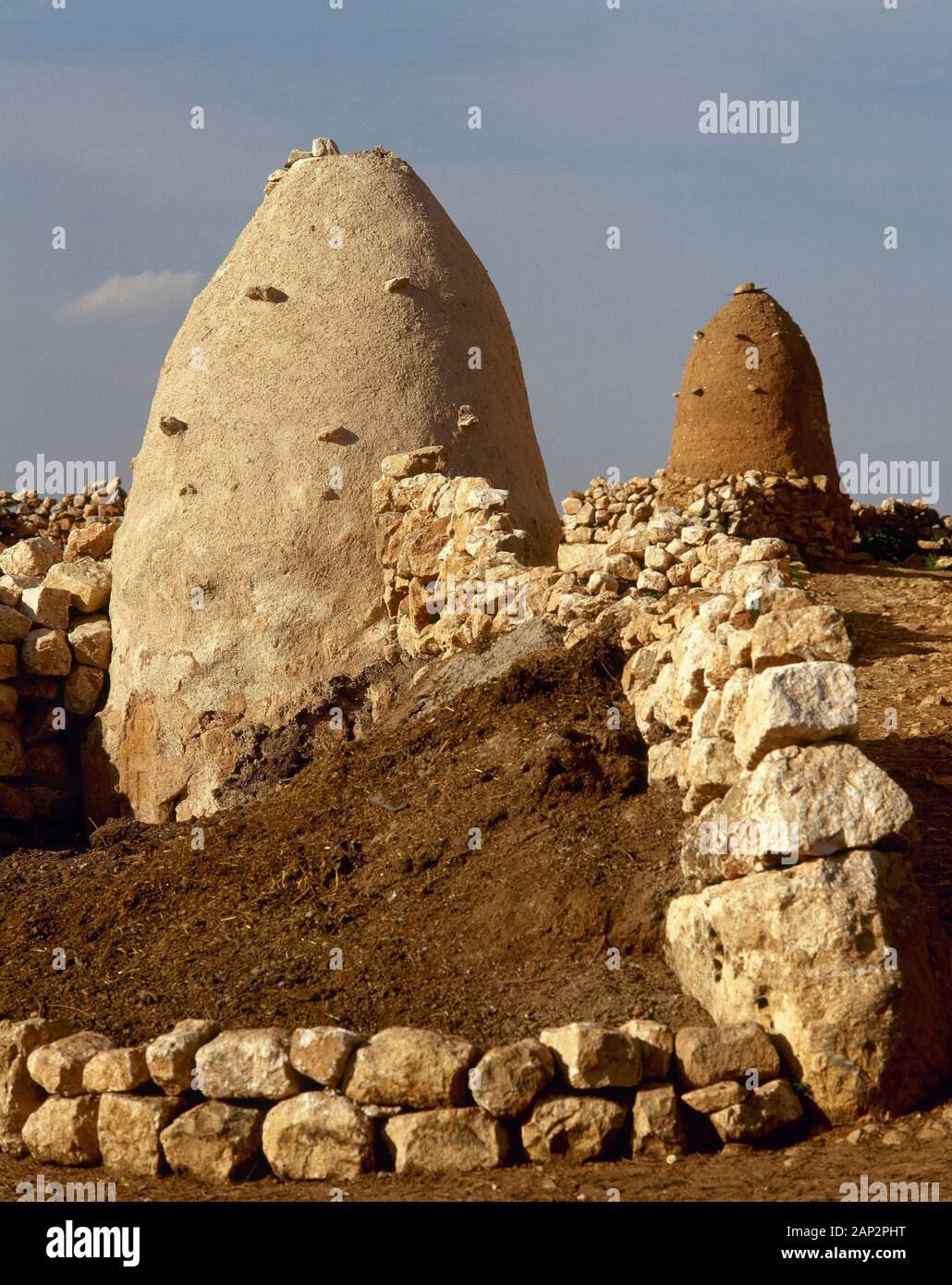 Syrian Arab Republic. Rueiha. Dead Cities. From Roman Empire to Byzantine Christianity, 1st to 7th century, abandoned between 8th to10th centuries. The ruins have been reused by the Bedouins to build their homes. View of Bedouin adobe oven. Photo taken before the Syrian civil war. Stock Photohttps://www.alamy.com/image-license-details/?v=1https://www.alamy.com/syrian-arab-republic-rueiha-dead-cities-from-roman-empire-to-byzantine-christianity-1st-to-7th-century-abandoned-between-8th-to10th-centuries-the-ruins-have-been-reused-by-the-bedouins-to-build-their-homes-view-of-bedouin-adobe-oven-photo-taken-before-the-syrian-civil-war-image340581076.html
Syrian Arab Republic. Rueiha. Dead Cities. From Roman Empire to Byzantine Christianity, 1st to 7th century, abandoned between 8th to10th centuries. The ruins have been reused by the Bedouins to build their homes. View of Bedouin adobe oven. Photo taken before the Syrian civil war. Stock Photohttps://www.alamy.com/image-license-details/?v=1https://www.alamy.com/syrian-arab-republic-rueiha-dead-cities-from-roman-empire-to-byzantine-christianity-1st-to-7th-century-abandoned-between-8th-to10th-centuries-the-ruins-have-been-reused-by-the-bedouins-to-build-their-homes-view-of-bedouin-adobe-oven-photo-taken-before-the-syrian-civil-war-image340581076.htmlRM2AP2PHT–Syrian Arab Republic. Rueiha. Dead Cities. From Roman Empire to Byzantine Christianity, 1st to 7th century, abandoned between 8th to10th centuries. The ruins have been reused by the Bedouins to build their homes. View of Bedouin adobe oven. Photo taken before the Syrian civil war.
 Roundel, Egypt, Roman period (30 B.C.- 641 A.D.)/Arab period (641-969), 7th century. Stock Photohttps://www.alamy.com/image-license-details/?v=1https://www.alamy.com/roundel-egypt-roman-period-30-bc-641-adarab-period-641-969-7th-century-image451396364.html
Roundel, Egypt, Roman period (30 B.C.- 641 A.D.)/Arab period (641-969), 7th century. Stock Photohttps://www.alamy.com/image-license-details/?v=1https://www.alamy.com/roundel-egypt-roman-period-30-bc-641-adarab-period-641-969-7th-century-image451396364.htmlRM2H6ATJM–Roundel, Egypt, Roman period (30 B.C.- 641 A.D.)/Arab period (641-969), 7th century.
 Donkeys historic town of Lamu founded by Moslem Arab traders from the Persian Gulf in the 7th century Lamu Island Indian Ocean c Stock Photohttps://www.alamy.com/image-license-details/?v=1https://www.alamy.com/donkeys-historic-town-of-lamu-founded-by-moslem-arab-traders-from-image2431444.html
Donkeys historic town of Lamu founded by Moslem Arab traders from the Persian Gulf in the 7th century Lamu Island Indian Ocean c Stock Photohttps://www.alamy.com/image-license-details/?v=1https://www.alamy.com/donkeys-historic-town-of-lamu-founded-by-moslem-arab-traders-from-image2431444.htmlRFACH9D5–Donkeys historic town of Lamu founded by Moslem Arab traders from the Persian Gulf in the 7th century Lamu Island Indian Ocean c
 Child’s Tunic, Roman period (30 B.C.– 641 A.D.)/Arab period (641–969), 7th century, Coptic, Egypt, Egypt, Linen and wool, tapestry weave, 50.8 × 45.7 cm (20 × 18 in Stock Photohttps://www.alamy.com/image-license-details/?v=1https://www.alamy.com/childs-tunic-roman-period-30-bc-641-adarab-period-641969-7th-century-coptic-egypt-egypt-linen-and-wool-tapestry-weave-508-457-cm-20-18-in-image328618054.html
Child’s Tunic, Roman period (30 B.C.– 641 A.D.)/Arab period (641–969), 7th century, Coptic, Egypt, Egypt, Linen and wool, tapestry weave, 50.8 × 45.7 cm (20 × 18 in Stock Photohttps://www.alamy.com/image-license-details/?v=1https://www.alamy.com/childs-tunic-roman-period-30-bc-641-adarab-period-641969-7th-century-coptic-egypt-egypt-linen-and-wool-tapestry-weave-508-457-cm-20-18-in-image328618054.htmlRM2A2HRK2–Child’s Tunic, Roman period (30 B.C.– 641 A.D.)/Arab period (641–969), 7th century, Coptic, Egypt, Egypt, Linen and wool, tapestry weave, 50.8 × 45.7 cm (20 × 18 in
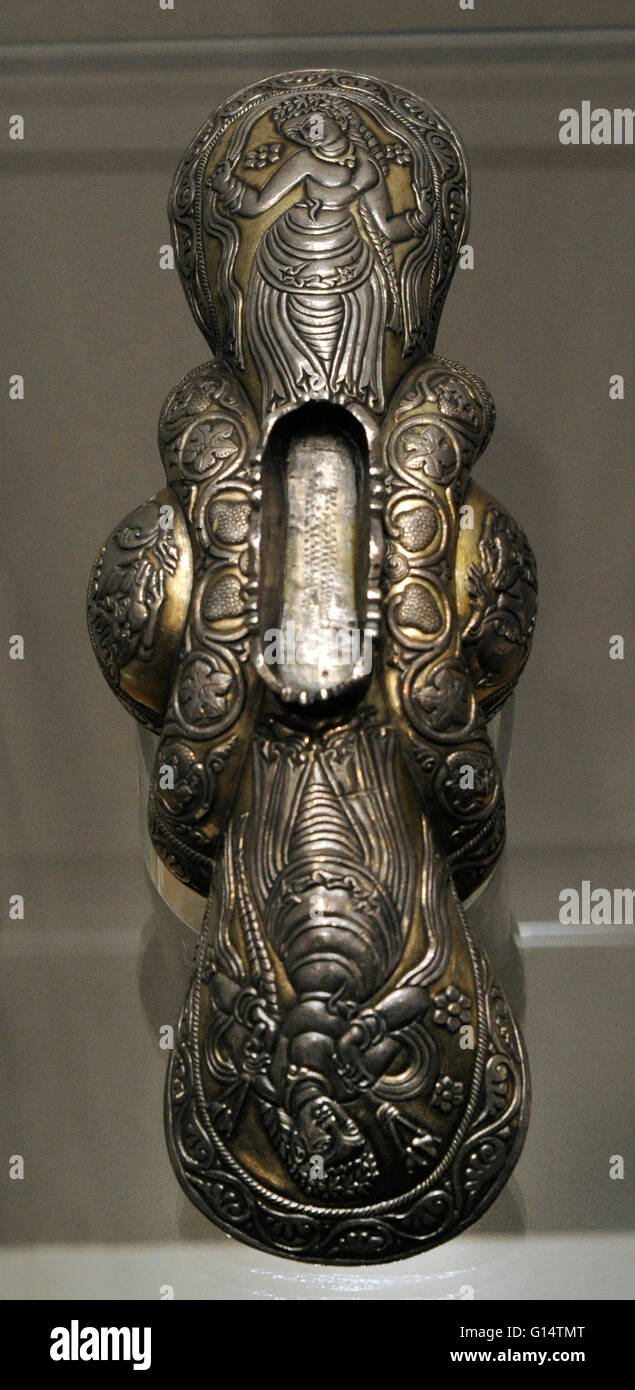 Lobed Bowl with dancers. Silver; chasing, gilding. Iran. 7th-8th century. Found as part of a treasure in Perm Region. Stock Photohttps://www.alamy.com/image-license-details/?v=1https://www.alamy.com/stock-photo-lobed-bowl-with-dancers-silver-chasing-gilding-iran-7th-8th-century-103984072.html
Lobed Bowl with dancers. Silver; chasing, gilding. Iran. 7th-8th century. Found as part of a treasure in Perm Region. Stock Photohttps://www.alamy.com/image-license-details/?v=1https://www.alamy.com/stock-photo-lobed-bowl-with-dancers-silver-chasing-gilding-iran-7th-8th-century-103984072.htmlRMG14TMT–Lobed Bowl with dancers. Silver; chasing, gilding. Iran. 7th-8th century. Found as part of a treasure in Perm Region.
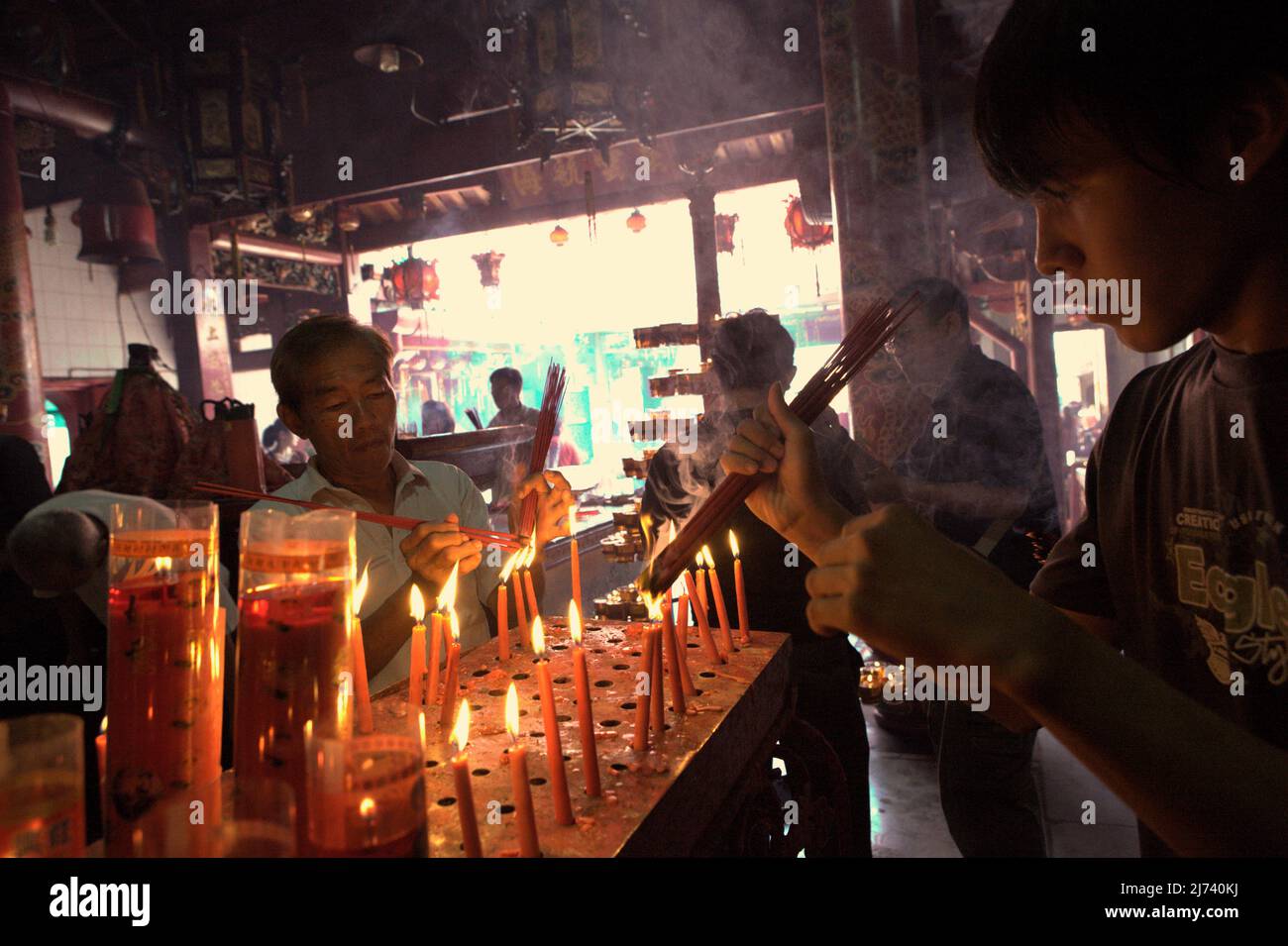 Devotees burning incense sticks at Chandra Nadi (Soei Goeat Kiong) temple in Palembang, South Sumatra, Indonesia. During its peak period, from 7th to early 11th century, Srivijaya had strong relationships with the strongest rulers in China, India, and Arab world—often through religious approaches. The diplomacy helped the thalassocracy to build its significance in sea trade. Stock Photohttps://www.alamy.com/image-license-details/?v=1https://www.alamy.com/devotees-burning-incense-sticks-at-chandra-nadi-soei-goeat-kiong-temple-in-palembang-south-sumatra-indonesia-during-its-peak-period-from-7th-to-early-11th-century-srivijaya-had-strong-relationships-with-the-strongest-rulers-in-china-india-and-arab-worldoften-through-religious-approaches-the-diplomacy-helped-the-thalassocracy-to-build-its-significance-in-sea-trade-image469070886.html
Devotees burning incense sticks at Chandra Nadi (Soei Goeat Kiong) temple in Palembang, South Sumatra, Indonesia. During its peak period, from 7th to early 11th century, Srivijaya had strong relationships with the strongest rulers in China, India, and Arab world—often through religious approaches. The diplomacy helped the thalassocracy to build its significance in sea trade. Stock Photohttps://www.alamy.com/image-license-details/?v=1https://www.alamy.com/devotees-burning-incense-sticks-at-chandra-nadi-soei-goeat-kiong-temple-in-palembang-south-sumatra-indonesia-during-its-peak-period-from-7th-to-early-11th-century-srivijaya-had-strong-relationships-with-the-strongest-rulers-in-china-india-and-arab-worldoften-through-religious-approaches-the-diplomacy-helped-the-thalassocracy-to-build-its-significance-in-sea-trade-image469070886.htmlRM2J740KJ–Devotees burning incense sticks at Chandra Nadi (Soei Goeat Kiong) temple in Palembang, South Sumatra, Indonesia. During its peak period, from 7th to early 11th century, Srivijaya had strong relationships with the strongest rulers in China, India, and Arab world—often through religious approaches. The diplomacy helped the thalassocracy to build its significance in sea trade.
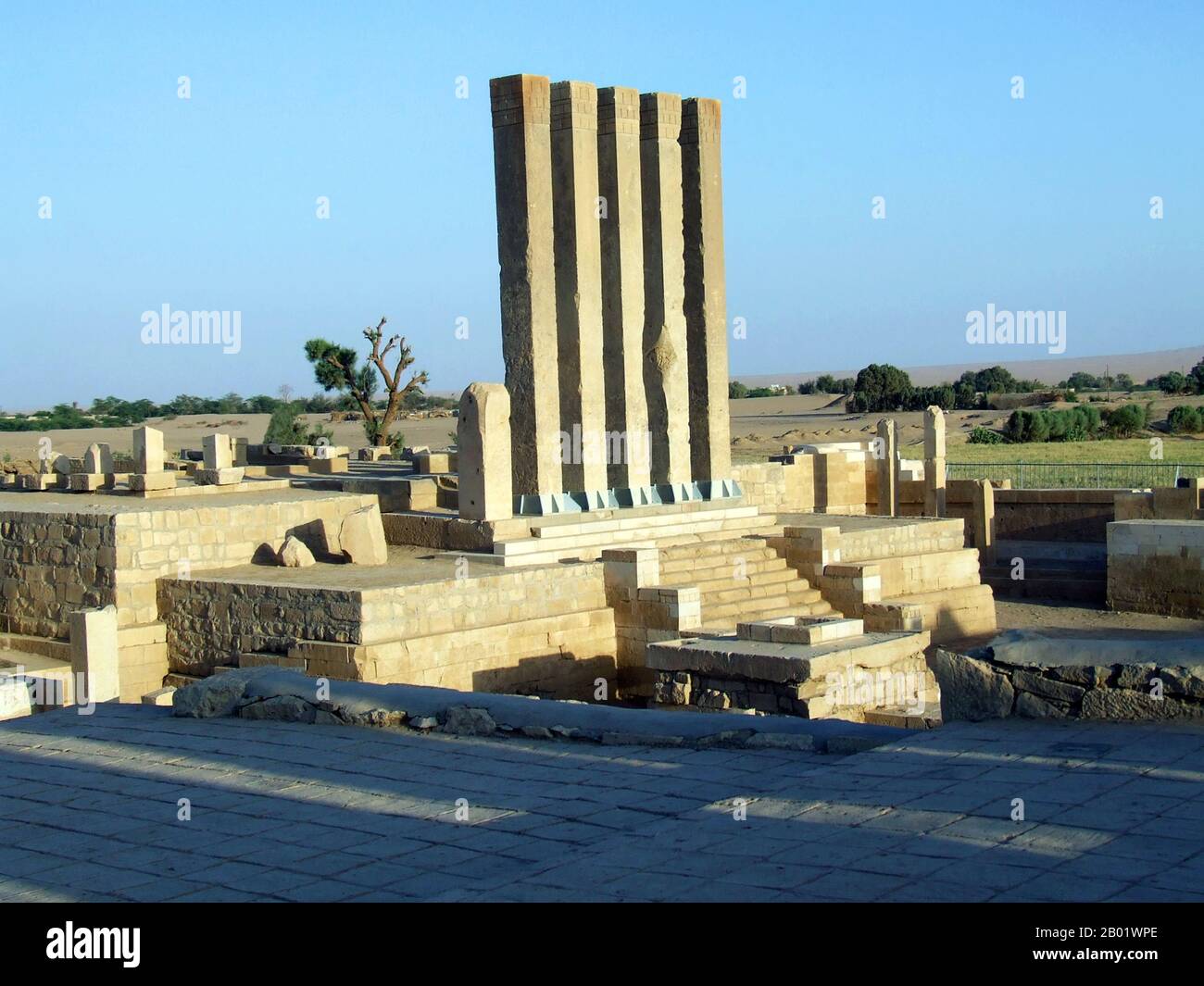 Yemen: The Temple of Awwam (Mahram Bilqis) dedicated to the Moon God Almaqah at Ma'rib, former capital of the Sabaean Kingdom, c. 7th-5th century BCE. Ma'rib or Marib is the capital city of the Ma'rib Governorate, Yemen and was the capital of the Sabaean kingdom, which some scholars believe to be the ancient Sheba of biblical fame. It is located at approximately 120 kilometres east of Yemen's modern capital, Sana'a. Stock Photohttps://www.alamy.com/image-license-details/?v=1https://www.alamy.com/yemen-the-temple-of-awwam-mahram-bilqis-dedicated-to-the-moon-god-almaqah-at-marib-former-capital-of-the-sabaean-kingdom-c-7th-5th-century-bce-marib-or-marib-is-the-capital-city-of-the-marib-governorate-yemen-and-was-the-capital-of-the-sabaean-kingdom-which-some-scholars-believe-to-be-the-ancient-sheba-of-biblical-fame-it-is-located-at-approximately-120-kilometres-east-of-yemens-modern-capital-sanaa-image344249542.html
Yemen: The Temple of Awwam (Mahram Bilqis) dedicated to the Moon God Almaqah at Ma'rib, former capital of the Sabaean Kingdom, c. 7th-5th century BCE. Ma'rib or Marib is the capital city of the Ma'rib Governorate, Yemen and was the capital of the Sabaean kingdom, which some scholars believe to be the ancient Sheba of biblical fame. It is located at approximately 120 kilometres east of Yemen's modern capital, Sana'a. Stock Photohttps://www.alamy.com/image-license-details/?v=1https://www.alamy.com/yemen-the-temple-of-awwam-mahram-bilqis-dedicated-to-the-moon-god-almaqah-at-marib-former-capital-of-the-sabaean-kingdom-c-7th-5th-century-bce-marib-or-marib-is-the-capital-city-of-the-marib-governorate-yemen-and-was-the-capital-of-the-sabaean-kingdom-which-some-scholars-believe-to-be-the-ancient-sheba-of-biblical-fame-it-is-located-at-approximately-120-kilometres-east-of-yemens-modern-capital-sanaa-image344249542.htmlRM2B01WPE–Yemen: The Temple of Awwam (Mahram Bilqis) dedicated to the Moon God Almaqah at Ma'rib, former capital of the Sabaean Kingdom, c. 7th-5th century BCE. Ma'rib or Marib is the capital city of the Ma'rib Governorate, Yemen and was the capital of the Sabaean kingdom, which some scholars believe to be the ancient Sheba of biblical fame. It is located at approximately 120 kilometres east of Yemen's modern capital, Sana'a.
 1855 Perthes Map of Africa prior to the Arab Invasions of the 7th Century - Geographicus - AfricaPreArab-perthes-1855 Stock Photohttps://www.alamy.com/image-license-details/?v=1https://www.alamy.com/stock-photo-1855-perthes-map-of-africa-prior-to-the-arab-invasions-of-the-7th-132589341.html
1855 Perthes Map of Africa prior to the Arab Invasions of the 7th Century - Geographicus - AfricaPreArab-perthes-1855 Stock Photohttps://www.alamy.com/image-license-details/?v=1https://www.alamy.com/stock-photo-1855-perthes-map-of-africa-prior-to-the-arab-invasions-of-the-7th-132589341.htmlRMHKKY1H–1855 Perthes Map of Africa prior to the Arab Invasions of the 7th Century - Geographicus - AfricaPreArab-perthes-1855
 Yemen: A limestone altar dedicated to 'Almaqah, the Sun God of the South Arabian Kingdom of Saba', Marib, 7th-6th centuries BCE. South Arabia as a general term refers to several regions as currently recognised, in chief the Republic of Yemen; yet it has historically also included Najran, Jizan, and 'Asir which are presently in Saudi Arabia, and Dhofar presently in Oman. The frontiers of South Arabia as linguistically conceived would include the historic peoples speaking the related South Arabian languages as well as neighbouring dialects of Arabic, and their descendants. Stock Photohttps://www.alamy.com/image-license-details/?v=1https://www.alamy.com/yemen-a-limestone-altar-dedicated-to-almaqah-the-sun-god-of-the-south-arabian-kingdom-of-saba-marib-7th-6th-centuries-bce-south-arabia-as-a-general-term-refers-to-several-regions-as-currently-recognised-in-chief-the-republic-of-yemen-yet-it-has-historically-also-included-najran-jizan-and-asir-which-are-presently-in-saudi-arabia-and-dhofar-presently-in-oman-the-frontiers-of-south-arabia-as-linguistically-conceived-would-include-the-historic-peoples-speaking-the-related-south-arabian-languages-as-well-as-neighbouring-dialects-of-arabic-and-their-descendants-image344249666.html
Yemen: A limestone altar dedicated to 'Almaqah, the Sun God of the South Arabian Kingdom of Saba', Marib, 7th-6th centuries BCE. South Arabia as a general term refers to several regions as currently recognised, in chief the Republic of Yemen; yet it has historically also included Najran, Jizan, and 'Asir which are presently in Saudi Arabia, and Dhofar presently in Oman. The frontiers of South Arabia as linguistically conceived would include the historic peoples speaking the related South Arabian languages as well as neighbouring dialects of Arabic, and their descendants. Stock Photohttps://www.alamy.com/image-license-details/?v=1https://www.alamy.com/yemen-a-limestone-altar-dedicated-to-almaqah-the-sun-god-of-the-south-arabian-kingdom-of-saba-marib-7th-6th-centuries-bce-south-arabia-as-a-general-term-refers-to-several-regions-as-currently-recognised-in-chief-the-republic-of-yemen-yet-it-has-historically-also-included-najran-jizan-and-asir-which-are-presently-in-saudi-arabia-and-dhofar-presently-in-oman-the-frontiers-of-south-arabia-as-linguistically-conceived-would-include-the-historic-peoples-speaking-the-related-south-arabian-languages-as-well-as-neighbouring-dialects-of-arabic-and-their-descendants-image344249666.htmlRM2B01WXX–Yemen: A limestone altar dedicated to 'Almaqah, the Sun God of the South Arabian Kingdom of Saba', Marib, 7th-6th centuries BCE. South Arabia as a general term refers to several regions as currently recognised, in chief the Republic of Yemen; yet it has historically also included Najran, Jizan, and 'Asir which are presently in Saudi Arabia, and Dhofar presently in Oman. The frontiers of South Arabia as linguistically conceived would include the historic peoples speaking the related South Arabian languages as well as neighbouring dialects of Arabic, and their descendants.
 Syria. Ruweiha. Dead Cities or Forgotten Cities. Northwest Syria. Roman Empire to Byzantine Christianity. 1st to 7th century, abandoned between 8th-10th century. Ruins. Unesco World Heritage Site. Historical photography (taken before Syrian Civil War). Stock Photohttps://www.alamy.com/image-license-details/?v=1https://www.alamy.com/syria-ruweiha-dead-cities-or-forgotten-cities-northwest-syria-roman-empire-to-byzantine-christianity-1st-to-7th-century-abandoned-between-8th-10th-century-ruins-unesco-world-heritage-site-historical-photography-taken-before-syrian-civil-war-image255611044.html
Syria. Ruweiha. Dead Cities or Forgotten Cities. Northwest Syria. Roman Empire to Byzantine Christianity. 1st to 7th century, abandoned between 8th-10th century. Ruins. Unesco World Heritage Site. Historical photography (taken before Syrian Civil War). Stock Photohttps://www.alamy.com/image-license-details/?v=1https://www.alamy.com/syria-ruweiha-dead-cities-or-forgotten-cities-northwest-syria-roman-empire-to-byzantine-christianity-1st-to-7th-century-abandoned-between-8th-10th-century-ruins-unesco-world-heritage-site-historical-photography-taken-before-syrian-civil-war-image255611044.htmlRMTRT2DT–Syria. Ruweiha. Dead Cities or Forgotten Cities. Northwest Syria. Roman Empire to Byzantine Christianity. 1st to 7th century, abandoned between 8th-10th century. Ruins. Unesco World Heritage Site. Historical photography (taken before Syrian Civil War).
 Iran: A page from the ‘Great Mongol Shanameh’, an illuminated copy of the Book of Kings famed for its Persian miniature paintings, c. 1330-1340. The Shahnameh (Book of Kings) is a Persian epic of 60,000 verses written by Persian poet Ferdowsi in 1000 CE. It tells of Persian history from the creation of time until the Arab invasion of the 7th century. Stock Photohttps://www.alamy.com/image-license-details/?v=1https://www.alamy.com/iran-a-page-from-the-great-mongol-shanameh-an-illuminated-copy-of-the-book-of-kings-famed-for-its-persian-miniature-paintings-c-1330-1340-the-shahnameh-book-of-kings-is-a-persian-epic-of-60000-verses-written-by-persian-poet-ferdowsi-in-1000-ce-it-tells-of-persian-history-from-the-creation-of-time-until-the-arab-invasion-of-the-7th-century-image344226968.html
Iran: A page from the ‘Great Mongol Shanameh’, an illuminated copy of the Book of Kings famed for its Persian miniature paintings, c. 1330-1340. The Shahnameh (Book of Kings) is a Persian epic of 60,000 verses written by Persian poet Ferdowsi in 1000 CE. It tells of Persian history from the creation of time until the Arab invasion of the 7th century. Stock Photohttps://www.alamy.com/image-license-details/?v=1https://www.alamy.com/iran-a-page-from-the-great-mongol-shanameh-an-illuminated-copy-of-the-book-of-kings-famed-for-its-persian-miniature-paintings-c-1330-1340-the-shahnameh-book-of-kings-is-a-persian-epic-of-60000-verses-written-by-persian-poet-ferdowsi-in-1000-ce-it-tells-of-persian-history-from-the-creation-of-time-until-the-arab-invasion-of-the-7th-century-image344226968.htmlRM2B00W08–Iran: A page from the ‘Great Mongol Shanameh’, an illuminated copy of the Book of Kings famed for its Persian miniature paintings, c. 1330-1340. The Shahnameh (Book of Kings) is a Persian epic of 60,000 verses written by Persian poet Ferdowsi in 1000 CE. It tells of Persian history from the creation of time until the Arab invasion of the 7th century.
 Interior of Mosque of Dome of the Rock in Jerusalem, Palestine 1894. Built in 7th century Stock Photohttps://www.alamy.com/image-license-details/?v=1https://www.alamy.com/stock-photo-interior-of-mosque-of-dome-of-the-rock-in-jerusalem-palestine-1894-83346667.html
Interior of Mosque of Dome of the Rock in Jerusalem, Palestine 1894. Built in 7th century Stock Photohttps://www.alamy.com/image-license-details/?v=1https://www.alamy.com/stock-photo-interior-of-mosque-of-dome-of-the-rock-in-jerusalem-palestine-1894-83346667.htmlRMERGNEK–Interior of Mosque of Dome of the Rock in Jerusalem, Palestine 1894. Built in 7th century
 Jean-Leon Gerome (1824-1904). French painter. Player in the Mosque, 1871. Scene interior mosque of 'Amr in Cairo, 7th century. Stock Photohttps://www.alamy.com/image-license-details/?v=1https://www.alamy.com/stock-photo-jean-leon-gerome-1824-1904-french-painter-player-in-the-mosque-1871-121958250.html
Jean-Leon Gerome (1824-1904). French painter. Player in the Mosque, 1871. Scene interior mosque of 'Amr in Cairo, 7th century. Stock Photohttps://www.alamy.com/image-license-details/?v=1https://www.alamy.com/stock-photo-jean-leon-gerome-1824-1904-french-painter-player-in-the-mosque-1871-121958250.htmlRMH2BJYP–Jean-Leon Gerome (1824-1904). French painter. Player in the Mosque, 1871. Scene interior mosque of 'Amr in Cairo, 7th century.
 1855 Spruner Map of Africa up to the Arab conquests in the 7th century - Geographicus - Africa600-spruner-1855. Stock Photohttps://www.alamy.com/image-license-details/?v=1https://www.alamy.com/1855-spruner-map-of-africa-up-to-the-arab-conquests-in-the-7th-century-geographicus-africa600-spruner-1855-image210068705.html
1855 Spruner Map of Africa up to the Arab conquests in the 7th century - Geographicus - Africa600-spruner-1855. Stock Photohttps://www.alamy.com/image-license-details/?v=1https://www.alamy.com/1855-spruner-map-of-africa-up-to-the-arab-conquests-in-the-7th-century-geographicus-africa600-spruner-1855-image210068705.htmlRMP5NCNN–1855 Spruner Map of Africa up to the Arab conquests in the 7th century - Geographicus - Africa600-spruner-1855.
 Fragment from a Molding with Intertwined Vines and Acanthus Leaves 6th–7th century In the 500s Apa (Father) Jeremias founded a Coptic monastery at Saqqara, the ancient Egyptian necropolis (cemetery) of the city of Memphis, near the oldest pyramids. He and the earliest monks lived in tombs at the site. As the monastery grew, several grand churches with lavish decoration were built, as well as many chapels, public buildings, and complexes of cells (rooms) for each monk. The monastery continued to grow after the Arab conquest with materials from early Byzantine tomb structures being reused for ad Stock Photohttps://www.alamy.com/image-license-details/?v=1https://www.alamy.com/fragment-from-a-molding-with-intertwined-vines-and-acanthus-leaves-6th7th-century-in-the-500s-apa-father-jeremias-founded-a-coptic-monastery-at-saqqara-the-ancient-egyptian-necropolis-cemetery-of-the-city-of-memphis-near-the-oldest-pyramids-he-and-the-earliest-monks-lived-in-tombs-at-the-site-as-the-monastery-grew-several-grand-churches-with-lavish-decoration-were-built-as-well-as-many-chapels-public-buildings-and-complexes-of-cells-rooms-for-each-monk-the-monastery-continued-to-grow-after-the-arab-conquest-with-materials-from-early-byzantine-tomb-structures-being-reused-for-ad-image458036222.html
Fragment from a Molding with Intertwined Vines and Acanthus Leaves 6th–7th century In the 500s Apa (Father) Jeremias founded a Coptic monastery at Saqqara, the ancient Egyptian necropolis (cemetery) of the city of Memphis, near the oldest pyramids. He and the earliest monks lived in tombs at the site. As the monastery grew, several grand churches with lavish decoration were built, as well as many chapels, public buildings, and complexes of cells (rooms) for each monk. The monastery continued to grow after the Arab conquest with materials from early Byzantine tomb structures being reused for ad Stock Photohttps://www.alamy.com/image-license-details/?v=1https://www.alamy.com/fragment-from-a-molding-with-intertwined-vines-and-acanthus-leaves-6th7th-century-in-the-500s-apa-father-jeremias-founded-a-coptic-monastery-at-saqqara-the-ancient-egyptian-necropolis-cemetery-of-the-city-of-memphis-near-the-oldest-pyramids-he-and-the-earliest-monks-lived-in-tombs-at-the-site-as-the-monastery-grew-several-grand-churches-with-lavish-decoration-were-built-as-well-as-many-chapels-public-buildings-and-complexes-of-cells-rooms-for-each-monk-the-monastery-continued-to-grow-after-the-arab-conquest-with-materials-from-early-byzantine-tomb-structures-being-reused-for-ad-image458036222.htmlRM2HH59TE–Fragment from a Molding with Intertwined Vines and Acanthus Leaves 6th–7th century In the 500s Apa (Father) Jeremias founded a Coptic monastery at Saqqara, the ancient Egyptian necropolis (cemetery) of the city of Memphis, near the oldest pyramids. He and the earliest monks lived in tombs at the site. As the monastery grew, several grand churches with lavish decoration were built, as well as many chapels, public buildings, and complexes of cells (rooms) for each monk. The monastery continued to grow after the Arab conquest with materials from early Byzantine tomb structures being reused for ad
 . English: Public domain image more than 100 years since creation, therefore further sourcing not required. Arab Slave Traders. A 19th-century engraving depicting an Arab slave-trading caravan transporting black African slaves across the Sahara. The trans-Saharan slave trade developed in the 7th and 8th centuries as Muslim Arabs conquered most of North Africa. The trade grew significantly from the 10th to the 15th century and peaked in the mid-19th century . 19th-century 18 March 2007 (original upload date). 19th-century engraving Uploaded by DavidYork71 at en.wikipedia 54 Arabslavers Stock Photohttps://www.alamy.com/image-license-details/?v=1https://www.alamy.com/english-public-domain-image-more-than-100-years-since-creation-therefore-further-sourcing-not-required-arab-slave-traders-a-19th-century-engraving-depicting-an-arab-slave-trading-caravan-transporting-black-african-slaves-across-the-sahara-the-trans-saharan-slave-trade-developed-in-the-7th-and-8th-centuries-as-muslim-arabs-conquered-most-of-north-africa-the-trade-grew-significantly-from-the-10th-to-the-15th-century-and-peaked-in-the-mid-19th-century-19th-century-18-march-2007-original-upload-date-19th-century-engraving-uploaded-by-davidyork71-at-enwikipedia-54-arabslavers-image188183257.html
. English: Public domain image more than 100 years since creation, therefore further sourcing not required. Arab Slave Traders. A 19th-century engraving depicting an Arab slave-trading caravan transporting black African slaves across the Sahara. The trans-Saharan slave trade developed in the 7th and 8th centuries as Muslim Arabs conquered most of North Africa. The trade grew significantly from the 10th to the 15th century and peaked in the mid-19th century . 19th-century 18 March 2007 (original upload date). 19th-century engraving Uploaded by DavidYork71 at en.wikipedia 54 Arabslavers Stock Photohttps://www.alamy.com/image-license-details/?v=1https://www.alamy.com/english-public-domain-image-more-than-100-years-since-creation-therefore-further-sourcing-not-required-arab-slave-traders-a-19th-century-engraving-depicting-an-arab-slave-trading-caravan-transporting-black-african-slaves-across-the-sahara-the-trans-saharan-slave-trade-developed-in-the-7th-and-8th-centuries-as-muslim-arabs-conquered-most-of-north-africa-the-trade-grew-significantly-from-the-10th-to-the-15th-century-and-peaked-in-the-mid-19th-century-19th-century-18-march-2007-original-upload-date-19th-century-engraving-uploaded-by-davidyork71-at-enwikipedia-54-arabslavers-image188183257.htmlRMMX4DJH–. English: Public domain image more than 100 years since creation, therefore further sourcing not required. Arab Slave Traders. A 19th-century engraving depicting an Arab slave-trading caravan transporting black African slaves across the Sahara. The trans-Saharan slave trade developed in the 7th and 8th centuries as Muslim Arabs conquered most of North Africa. The trade grew significantly from the 10th to the 15th century and peaked in the mid-19th century . 19th-century 18 March 2007 (original upload date). 19th-century engraving Uploaded by DavidYork71 at en.wikipedia 54 Arabslavers
 Door Post with Grapevine Emerging from a Chalice and a Small Cross 6th–7th century In the 500s Apa (Father) Jeremias founded a Coptic monastery at Saqqara, the ancient Egyptian necropolis (cemetery) of the city of Memphis, near the oldest pyramids. He and the earliest monks lived in tombs at the site. As the monastery grew, several grand churches with lavish decoration were built, as well as many chapels, public buildings, and complexes of cells (rooms) for each monk. The monastery continued to grow after the Arab conquest with materials from early Byzantine tomb structures being reused for ad Stock Photohttps://www.alamy.com/image-license-details/?v=1https://www.alamy.com/door-post-with-grapevine-emerging-from-a-chalice-and-a-small-cross-6th7th-century-in-the-500s-apa-father-jeremias-founded-a-coptic-monastery-at-saqqara-the-ancient-egyptian-necropolis-cemetery-of-the-city-of-memphis-near-the-oldest-pyramids-he-and-the-earliest-monks-lived-in-tombs-at-the-site-as-the-monastery-grew-several-grand-churches-with-lavish-decoration-were-built-as-well-as-many-chapels-public-buildings-and-complexes-of-cells-rooms-for-each-monk-the-monastery-continued-to-grow-after-the-arab-conquest-with-materials-from-early-byzantine-tomb-structures-being-reused-for-ad-image458523619.html
Door Post with Grapevine Emerging from a Chalice and a Small Cross 6th–7th century In the 500s Apa (Father) Jeremias founded a Coptic monastery at Saqqara, the ancient Egyptian necropolis (cemetery) of the city of Memphis, near the oldest pyramids. He and the earliest monks lived in tombs at the site. As the monastery grew, several grand churches with lavish decoration were built, as well as many chapels, public buildings, and complexes of cells (rooms) for each monk. The monastery continued to grow after the Arab conquest with materials from early Byzantine tomb structures being reused for ad Stock Photohttps://www.alamy.com/image-license-details/?v=1https://www.alamy.com/door-post-with-grapevine-emerging-from-a-chalice-and-a-small-cross-6th7th-century-in-the-500s-apa-father-jeremias-founded-a-coptic-monastery-at-saqqara-the-ancient-egyptian-necropolis-cemetery-of-the-city-of-memphis-near-the-oldest-pyramids-he-and-the-earliest-monks-lived-in-tombs-at-the-site-as-the-monastery-grew-several-grand-churches-with-lavish-decoration-were-built-as-well-as-many-chapels-public-buildings-and-complexes-of-cells-rooms-for-each-monk-the-monastery-continued-to-grow-after-the-arab-conquest-with-materials-from-early-byzantine-tomb-structures-being-reused-for-ad-image458523619.htmlRM2HHYFFF–Door Post with Grapevine Emerging from a Chalice and a Small Cross 6th–7th century In the 500s Apa (Father) Jeremias founded a Coptic monastery at Saqqara, the ancient Egyptian necropolis (cemetery) of the city of Memphis, near the oldest pyramids. He and the earliest monks lived in tombs at the site. As the monastery grew, several grand churches with lavish decoration were built, as well as many chapels, public buildings, and complexes of cells (rooms) for each monk. The monastery continued to grow after the Arab conquest with materials from early Byzantine tomb structures being reused for ad
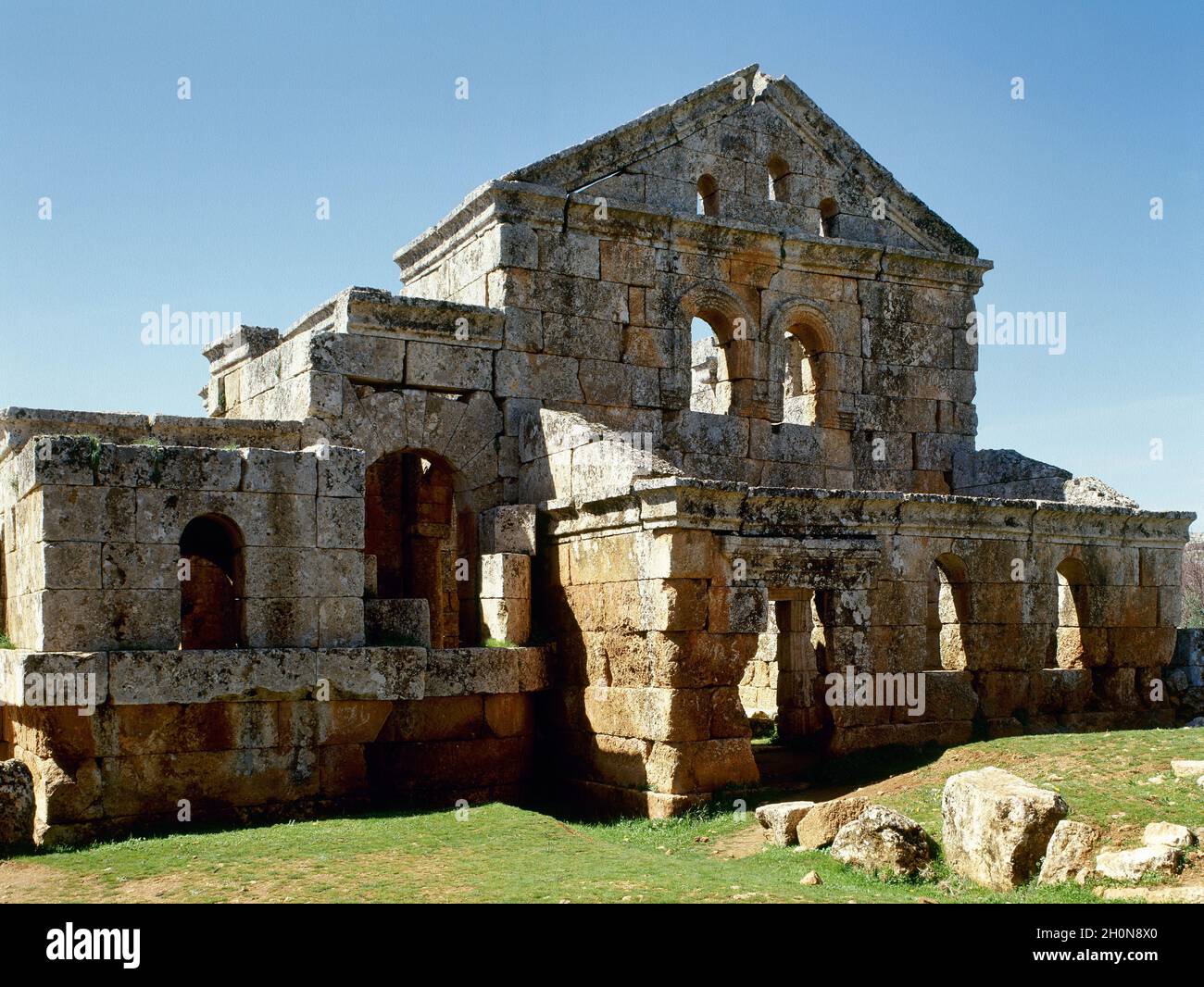 Syria. Dead Cities. Serjilla. Ancient city founded ca. 473 AD and abandoned in 7th century AD. Public baths (Byzantine period). Exterior view. East fa Stock Photohttps://www.alamy.com/image-license-details/?v=1https://www.alamy.com/syria-dead-cities-serjilla-ancient-city-founded-ca-473-ad-and-abandoned-in-7th-century-ad-public-baths-byzantine-period-exterior-view-east-fa-image447937560.html
Syria. Dead Cities. Serjilla. Ancient city founded ca. 473 AD and abandoned in 7th century AD. Public baths (Byzantine period). Exterior view. East fa Stock Photohttps://www.alamy.com/image-license-details/?v=1https://www.alamy.com/syria-dead-cities-serjilla-ancient-city-founded-ca-473-ad-and-abandoned-in-7th-century-ad-public-baths-byzantine-period-exterior-view-east-fa-image447937560.htmlRM2H0N8X0–Syria. Dead Cities. Serjilla. Ancient city founded ca. 473 AD and abandoned in 7th century AD. Public baths (Byzantine period). Exterior view. East fa
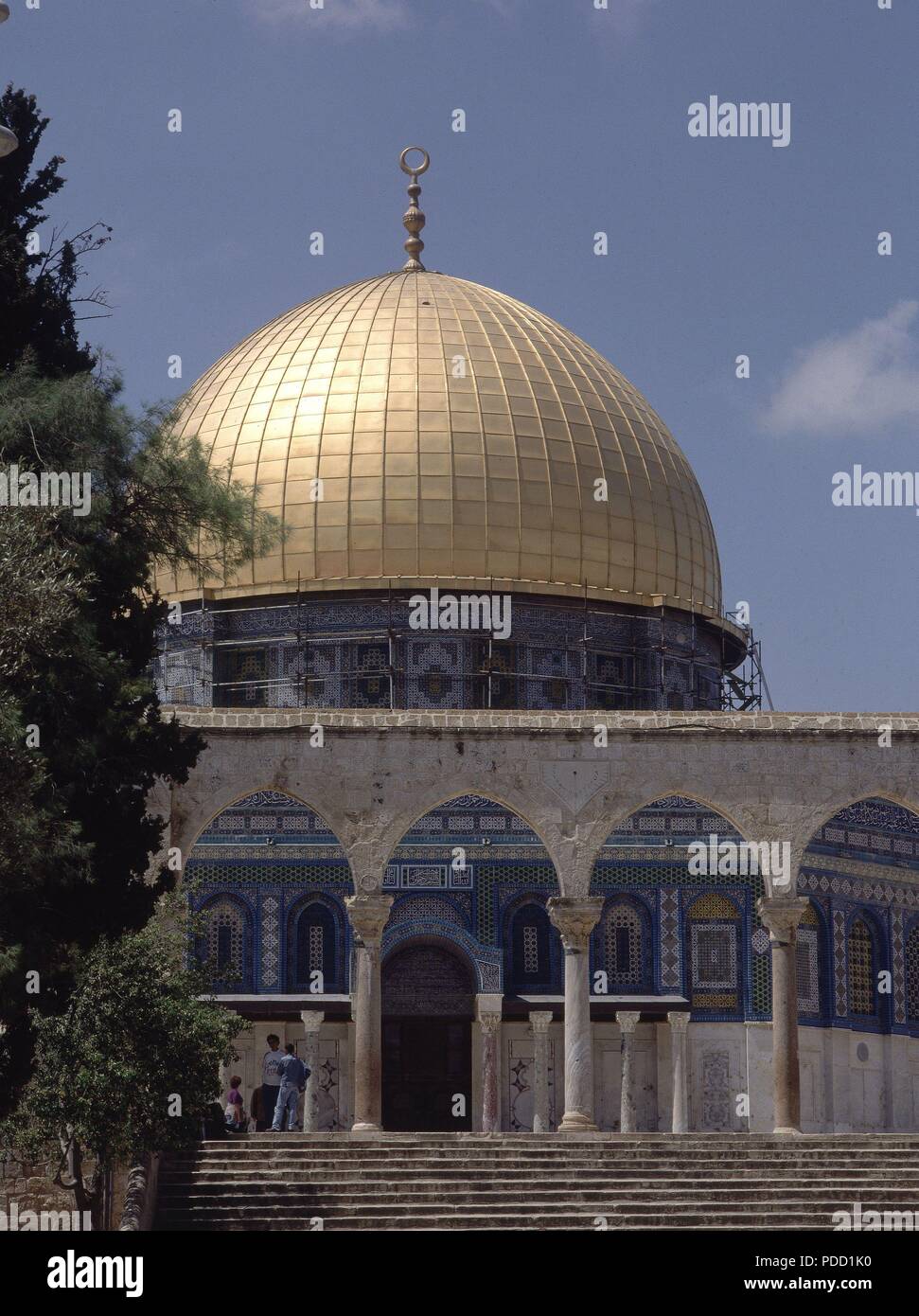 EXTERIOR-ARCADAS CON LA FACHADA Y CUPULA DORADA DETRAS. Location: MEZQUITA DE LA ROCA / OMAR, JERUSALEM, ISRAEL. Stock Photohttps://www.alamy.com/image-license-details/?v=1https://www.alamy.com/exterior-arcadas-con-la-fachada-y-cupula-dorada-detras-location-mezquita-de-la-roca-omar-jerusalem-israel-image214801636.html
EXTERIOR-ARCADAS CON LA FACHADA Y CUPULA DORADA DETRAS. Location: MEZQUITA DE LA ROCA / OMAR, JERUSALEM, ISRAEL. Stock Photohttps://www.alamy.com/image-license-details/?v=1https://www.alamy.com/exterior-arcadas-con-la-fachada-y-cupula-dorada-detras-location-mezquita-de-la-roca-omar-jerusalem-israel-image214801636.htmlRMPDD1K0–EXTERIOR-ARCADAS CON LA FACHADA Y CUPULA DORADA DETRAS. Location: MEZQUITA DE LA ROCA / OMAR, JERUSALEM, ISRAEL.
 Fragment (Border), Roman period (30 B.C.– 641 A.D.)/ Arab period (641–969), 7th/8th century, Egypt, Egypt, Linen and wool, slit tapestry weave, 27.9 × 12.7 cm (11 × 5 in.), Reimagined by Gibon, design of warm cheerful glowing of brightness and light rays radiance. Classic art reinvented with a modern twist. Photography inspired by futurism, embracing dynamic energy of modern technology, movement, speed and revolutionize culture. Stock Photohttps://www.alamy.com/image-license-details/?v=1https://www.alamy.com/fragment-border-roman-period-30-bc-641-ad-arab-period-641969-7th8th-century-egypt-egypt-linen-and-wool-slit-tapestry-weave-279-127-cm-11-5-in-reimagined-by-gibon-design-of-warm-cheerful-glowing-of-brightness-and-light-rays-radiance-classic-art-reinvented-with-a-modern-twist-photography-inspired-by-futurism-embracing-dynamic-energy-of-modern-technology-movement-speed-and-revolutionize-culture-image349686672.html
Fragment (Border), Roman period (30 B.C.– 641 A.D.)/ Arab period (641–969), 7th/8th century, Egypt, Egypt, Linen and wool, slit tapestry weave, 27.9 × 12.7 cm (11 × 5 in.), Reimagined by Gibon, design of warm cheerful glowing of brightness and light rays radiance. Classic art reinvented with a modern twist. Photography inspired by futurism, embracing dynamic energy of modern technology, movement, speed and revolutionize culture. Stock Photohttps://www.alamy.com/image-license-details/?v=1https://www.alamy.com/fragment-border-roman-period-30-bc-641-ad-arab-period-641969-7th8th-century-egypt-egypt-linen-and-wool-slit-tapestry-weave-279-127-cm-11-5-in-reimagined-by-gibon-design-of-warm-cheerful-glowing-of-brightness-and-light-rays-radiance-classic-art-reinvented-with-a-modern-twist-photography-inspired-by-futurism-embracing-dynamic-energy-of-modern-technology-movement-speed-and-revolutionize-culture-image349686672.htmlRF2B8WGWM–Fragment (Border), Roman period (30 B.C.– 641 A.D.)/ Arab period (641–969), 7th/8th century, Egypt, Egypt, Linen and wool, slit tapestry weave, 27.9 × 12.7 cm (11 × 5 in.), Reimagined by Gibon, design of warm cheerful glowing of brightness and light rays radiance. Classic art reinvented with a modern twist. Photography inspired by futurism, embracing dynamic energy of modern technology, movement, speed and revolutionize culture.
 Fragment, Egypt, Roman period (30 B.C.- 641 A.D.)/Arab period (641-969), 7th century. Stock Photohttps://www.alamy.com/image-license-details/?v=1https://www.alamy.com/fragment-egypt-roman-period-30-bc-641-adarab-period-641-969-7th-century-image451396450.html
Fragment, Egypt, Roman period (30 B.C.- 641 A.D.)/Arab period (641-969), 7th century. Stock Photohttps://www.alamy.com/image-license-details/?v=1https://www.alamy.com/fragment-egypt-roman-period-30-bc-641-adarab-period-641-969-7th-century-image451396450.htmlRM2H6ATNP–Fragment, Egypt, Roman period (30 B.C.- 641 A.D.)/Arab period (641-969), 7th century.
 Donkeys by the mosque in historic town of Lamu founded by Moslem Arab traders from the Persian Gulf in the 7th century Lamu Isla Stock Photohttps://www.alamy.com/image-license-details/?v=1https://www.alamy.com/donkeys-by-the-mosque-in-historic-town-of-lamu-founded-by-moslem-arab-image2431445.html
Donkeys by the mosque in historic town of Lamu founded by Moslem Arab traders from the Persian Gulf in the 7th century Lamu Isla Stock Photohttps://www.alamy.com/image-license-details/?v=1https://www.alamy.com/donkeys-by-the-mosque-in-historic-town-of-lamu-founded-by-moslem-arab-image2431445.htmlRFACH9D6–Donkeys by the mosque in historic town of Lamu founded by Moslem Arab traders from the Persian Gulf in the 7th century Lamu Isla
 Fragment (Border), Roman period (30 B.C.– 641 A.D.)/ Arab period (641–969), 7th/8th century, Egypt, Egypt, Linen and wool, slit tapestry weave, 27.9 × 12.7 cm (11 × 5 in Stock Photohttps://www.alamy.com/image-license-details/?v=1https://www.alamy.com/fragment-border-roman-period-30-bc-641-ad-arab-period-641969-7th8th-century-egypt-egypt-linen-and-wool-slit-tapestry-weave-279-127-cm-11-5-in-image328625744.html
Fragment (Border), Roman period (30 B.C.– 641 A.D.)/ Arab period (641–969), 7th/8th century, Egypt, Egypt, Linen and wool, slit tapestry weave, 27.9 × 12.7 cm (11 × 5 in Stock Photohttps://www.alamy.com/image-license-details/?v=1https://www.alamy.com/fragment-border-roman-period-30-bc-641-ad-arab-period-641969-7th8th-century-egypt-egypt-linen-and-wool-slit-tapestry-weave-279-127-cm-11-5-in-image328625744.htmlRM2A2J5DM–Fragment (Border), Roman period (30 B.C.– 641 A.D.)/ Arab period (641–969), 7th/8th century, Egypt, Egypt, Linen and wool, slit tapestry weave, 27.9 × 12.7 cm (11 × 5 in
 Minaret of the 7th century Mosque of Uqba (Great Mosque)- Kairouan, Tunisia. Stock Photohttps://www.alamy.com/image-license-details/?v=1https://www.alamy.com/stock-photo-minaret-of-the-7th-century-mosque-of-uqba-great-mosque-kairouan-tunisia-30046803.html
Minaret of the 7th century Mosque of Uqba (Great Mosque)- Kairouan, Tunisia. Stock Photohttps://www.alamy.com/image-license-details/?v=1https://www.alamy.com/stock-photo-minaret-of-the-7th-century-mosque-of-uqba-great-mosque-kairouan-tunisia-30046803.htmlRMBMTN03–Minaret of the 7th century Mosque of Uqba (Great Mosque)- Kairouan, Tunisia.
RMBMJY0P–6th-7th century icons depicting Christ in the Great Basilica of the Transfiguration in the Holy Monastery of St.
 (dpa) - An Iraqi Shiite muslim wearing a kufiyeh is reading prayers from a richly decorated book, Karbala, 22 April 2003. Hundreds of thousands of Shia muslims have gathered in the holy city of Karbala for the climax of a religious pilgrimage that has been banned for a quarter of a century. They commemorate the death in the 7th century of Imam Hussein, grandson of the Prophet Moham Stock Photohttps://www.alamy.com/image-license-details/?v=1https://www.alamy.com/stock-photo-dpa-an-iraqi-shiite-muslim-wearing-a-kufiyeh-is-reading-prayers-from-53826524.html
(dpa) - An Iraqi Shiite muslim wearing a kufiyeh is reading prayers from a richly decorated book, Karbala, 22 April 2003. Hundreds of thousands of Shia muslims have gathered in the holy city of Karbala for the climax of a religious pilgrimage that has been banned for a quarter of a century. They commemorate the death in the 7th century of Imam Hussein, grandson of the Prophet Moham Stock Photohttps://www.alamy.com/image-license-details/?v=1https://www.alamy.com/stock-photo-dpa-an-iraqi-shiite-muslim-wearing-a-kufiyeh-is-reading-prayers-from-53826524.htmlRMD3G07T–(dpa) - An Iraqi Shiite muslim wearing a kufiyeh is reading prayers from a richly decorated book, Karbala, 22 April 2003. Hundreds of thousands of Shia muslims have gathered in the holy city of Karbala for the climax of a religious pilgrimage that has been banned for a quarter of a century. They commemorate the death in the 7th century of Imam Hussein, grandson of the Prophet Moham
 1855 Spruner Map of Africa up to the Arab conquests in the 7th century - Geographicus - Africa600-spruner-1855 Stock Photohttps://www.alamy.com/image-license-details/?v=1https://www.alamy.com/stock-photo-1855-spruner-map-of-africa-up-to-the-arab-conquests-in-the-7th-century-132589330.html
1855 Spruner Map of Africa up to the Arab conquests in the 7th century - Geographicus - Africa600-spruner-1855 Stock Photohttps://www.alamy.com/image-license-details/?v=1https://www.alamy.com/stock-photo-1855-spruner-map-of-africa-up-to-the-arab-conquests-in-the-7th-century-132589330.htmlRMHKKY16–1855 Spruner Map of Africa up to the Arab conquests in the 7th century - Geographicus - Africa600-spruner-1855
 Seville, Spain - July 7th, 2018: Qdir or Bronze globular pot with geometrical decoration, 12th Century. Archaeological Museum of Seville, Andalusia, S Stock Photohttps://www.alamy.com/image-license-details/?v=1https://www.alamy.com/seville-spain-july-7th-2018-qdir-or-bronze-globular-pot-with-geometrical-decoration-12th-century-archaeological-museum-of-seville-andalusia-s-image333577543.html
Seville, Spain - July 7th, 2018: Qdir or Bronze globular pot with geometrical decoration, 12th Century. Archaeological Museum of Seville, Andalusia, S Stock Photohttps://www.alamy.com/image-license-details/?v=1https://www.alamy.com/seville-spain-july-7th-2018-qdir-or-bronze-globular-pot-with-geometrical-decoration-12th-century-archaeological-museum-of-seville-andalusia-s-image333577543.htmlRM2AAKNFK–Seville, Spain - July 7th, 2018: Qdir or Bronze globular pot with geometrical decoration, 12th Century. Archaeological Museum of Seville, Andalusia, S
 Syria. Ruweiha. Dead Cities or Forgotten Cities. Northwest Syria. Roman Empire to Byzantine Christianity. 1st to 7th century, abandoned between 8th-10th century. Remains. Unesco World Heritage Site. Historical photography (taken before Syrian Civil War). Stock Photohttps://www.alamy.com/image-license-details/?v=1https://www.alamy.com/syria-ruweiha-dead-cities-or-forgotten-cities-northwest-syria-roman-empire-to-byzantine-christianity-1st-to-7th-century-abandoned-between-8th-10th-century-remains-unesco-world-heritage-site-historical-photography-taken-before-syrian-civil-war-image255611063.html
Syria. Ruweiha. Dead Cities or Forgotten Cities. Northwest Syria. Roman Empire to Byzantine Christianity. 1st to 7th century, abandoned between 8th-10th century. Remains. Unesco World Heritage Site. Historical photography (taken before Syrian Civil War). Stock Photohttps://www.alamy.com/image-license-details/?v=1https://www.alamy.com/syria-ruweiha-dead-cities-or-forgotten-cities-northwest-syria-roman-empire-to-byzantine-christianity-1st-to-7th-century-abandoned-between-8th-10th-century-remains-unesco-world-heritage-site-historical-photography-taken-before-syrian-civil-war-image255611063.htmlRMTRT2EF–Syria. Ruweiha. Dead Cities or Forgotten Cities. Northwest Syria. Roman Empire to Byzantine Christianity. 1st to 7th century, abandoned between 8th-10th century. Remains. Unesco World Heritage Site. Historical photography (taken before Syrian Civil War).
 Iran/Bahrain: A page from a Mughal copy of the ‘Shahnameh’, which is on display at the Beit Al Qur’an museum in Bahrain. The Beit Al Qur’an, or House of the Koran, is a scholarly institution and museum in Bahrain which houses ancient manuscripts of the Qur’an and other Islamic treasures. The Shahnameh (Book of Kings) is a Persian epic of 60,000 verses written by Persian poet Ferdowsi in 1000 CE. It tells of Persian history from the creation of time until the Arab invasion of the 7th century. Stock Photohttps://www.alamy.com/image-license-details/?v=1https://www.alamy.com/iranbahrain-a-page-from-a-mughal-copy-of-the-shahnameh-which-is-on-display-at-the-beit-al-quran-museum-in-bahrain-the-beit-al-quran-or-house-of-the-koran-is-a-scholarly-institution-and-museum-in-bahrain-which-houses-ancient-manuscripts-of-the-quran-and-other-islamic-treasures-the-shahnameh-book-of-kings-is-a-persian-epic-of-60000-verses-written-by-persian-poet-ferdowsi-in-1000-ce-it-tells-of-persian-history-from-the-creation-of-time-until-the-arab-invasion-of-the-7th-century-image344226961.html
Iran/Bahrain: A page from a Mughal copy of the ‘Shahnameh’, which is on display at the Beit Al Qur’an museum in Bahrain. The Beit Al Qur’an, or House of the Koran, is a scholarly institution and museum in Bahrain which houses ancient manuscripts of the Qur’an and other Islamic treasures. The Shahnameh (Book of Kings) is a Persian epic of 60,000 verses written by Persian poet Ferdowsi in 1000 CE. It tells of Persian history from the creation of time until the Arab invasion of the 7th century. Stock Photohttps://www.alamy.com/image-license-details/?v=1https://www.alamy.com/iranbahrain-a-page-from-a-mughal-copy-of-the-shahnameh-which-is-on-display-at-the-beit-al-quran-museum-in-bahrain-the-beit-al-quran-or-house-of-the-koran-is-a-scholarly-institution-and-museum-in-bahrain-which-houses-ancient-manuscripts-of-the-quran-and-other-islamic-treasures-the-shahnameh-book-of-kings-is-a-persian-epic-of-60000-verses-written-by-persian-poet-ferdowsi-in-1000-ce-it-tells-of-persian-history-from-the-creation-of-time-until-the-arab-invasion-of-the-7th-century-image344226961.htmlRM2B00W01–Iran/Bahrain: A page from a Mughal copy of the ‘Shahnameh’, which is on display at the Beit Al Qur’an museum in Bahrain. The Beit Al Qur’an, or House of the Koran, is a scholarly institution and museum in Bahrain which houses ancient manuscripts of the Qur’an and other Islamic treasures. The Shahnameh (Book of Kings) is a Persian epic of 60,000 verses written by Persian poet Ferdowsi in 1000 CE. It tells of Persian history from the creation of time until the Arab invasion of the 7th century.
 Cordoba, Spain - Dec 7th, 2018: Chess pieces from Caliphal Period, 10th Century at Cordoba Archaeological Museum, Spain Stock Photohttps://www.alamy.com/image-license-details/?v=1https://www.alamy.com/cordoba-spain-dec-7th-2018-chess-pieces-from-caliphal-period-10th-century-at-cordoba-archaeological-museum-spain-image233962959.html
Cordoba, Spain - Dec 7th, 2018: Chess pieces from Caliphal Period, 10th Century at Cordoba Archaeological Museum, Spain Stock Photohttps://www.alamy.com/image-license-details/?v=1https://www.alamy.com/cordoba-spain-dec-7th-2018-chess-pieces-from-caliphal-period-10th-century-at-cordoba-archaeological-museum-spain-image233962959.htmlRMRGHX3Y–Cordoba, Spain - Dec 7th, 2018: Chess pieces from Caliphal Period, 10th Century at Cordoba Archaeological Museum, Spain
 Uzbekistan: Wall arabesque detail in Shah-i-Zinda, Samarkand. Shah-i-Zinda ('The Living King') is a necropolis in the north-eastern part of Samarkand. The Shah-i-Zinda Ensemble includes mausoleums and other ritual buildings from the 9-14th and 19th centuries. The name Shah-i-Zinda is connected with the legend that Kusam ibn Abbas, a cousin of the prophet Muhammad is buried here. It is believed that he came to Samarkand with the Arab invasion in the 7th century to preach Islam. Popular legends speak that he was beheaded by Zoroastrian fire-worshippers for his faith. Stock Photohttps://www.alamy.com/image-license-details/?v=1https://www.alamy.com/uzbekistan-wall-arabesque-detail-in-shah-i-zinda-samarkand-shah-i-zinda-the-living-king-is-a-necropolis-in-the-north-eastern-part-of-samarkand-the-shah-i-zinda-ensemble-includes-mausoleums-and-other-ritual-buildings-from-the-9-14th-and-19th-centuries-the-name-shah-i-zinda-is-connected-with-the-legend-that-kusam-ibn-abbas-a-cousin-of-the-prophet-muhammad-is-buried-here-it-is-believed-that-he-came-to-samarkand-with-the-arab-invasion-in-the-7th-century-to-preach-islam-popular-legends-speak-that-he-was-beheaded-by-zoroastrian-fire-worshippers-for-his-faith-image344247612.html
Uzbekistan: Wall arabesque detail in Shah-i-Zinda, Samarkand. Shah-i-Zinda ('The Living King') is a necropolis in the north-eastern part of Samarkand. The Shah-i-Zinda Ensemble includes mausoleums and other ritual buildings from the 9-14th and 19th centuries. The name Shah-i-Zinda is connected with the legend that Kusam ibn Abbas, a cousin of the prophet Muhammad is buried here. It is believed that he came to Samarkand with the Arab invasion in the 7th century to preach Islam. Popular legends speak that he was beheaded by Zoroastrian fire-worshippers for his faith. Stock Photohttps://www.alamy.com/image-license-details/?v=1https://www.alamy.com/uzbekistan-wall-arabesque-detail-in-shah-i-zinda-samarkand-shah-i-zinda-the-living-king-is-a-necropolis-in-the-north-eastern-part-of-samarkand-the-shah-i-zinda-ensemble-includes-mausoleums-and-other-ritual-buildings-from-the-9-14th-and-19th-centuries-the-name-shah-i-zinda-is-connected-with-the-legend-that-kusam-ibn-abbas-a-cousin-of-the-prophet-muhammad-is-buried-here-it-is-believed-that-he-came-to-samarkand-with-the-arab-invasion-in-the-7th-century-to-preach-islam-popular-legends-speak-that-he-was-beheaded-by-zoroastrian-fire-worshippers-for-his-faith-image344247612.htmlRM2B01R9G–Uzbekistan: Wall arabesque detail in Shah-i-Zinda, Samarkand. Shah-i-Zinda ('The Living King') is a necropolis in the north-eastern part of Samarkand. The Shah-i-Zinda Ensemble includes mausoleums and other ritual buildings from the 9-14th and 19th centuries. The name Shah-i-Zinda is connected with the legend that Kusam ibn Abbas, a cousin of the prophet Muhammad is buried here. It is believed that he came to Samarkand with the Arab invasion in the 7th century to preach Islam. Popular legends speak that he was beheaded by Zoroastrian fire-worshippers for his faith.
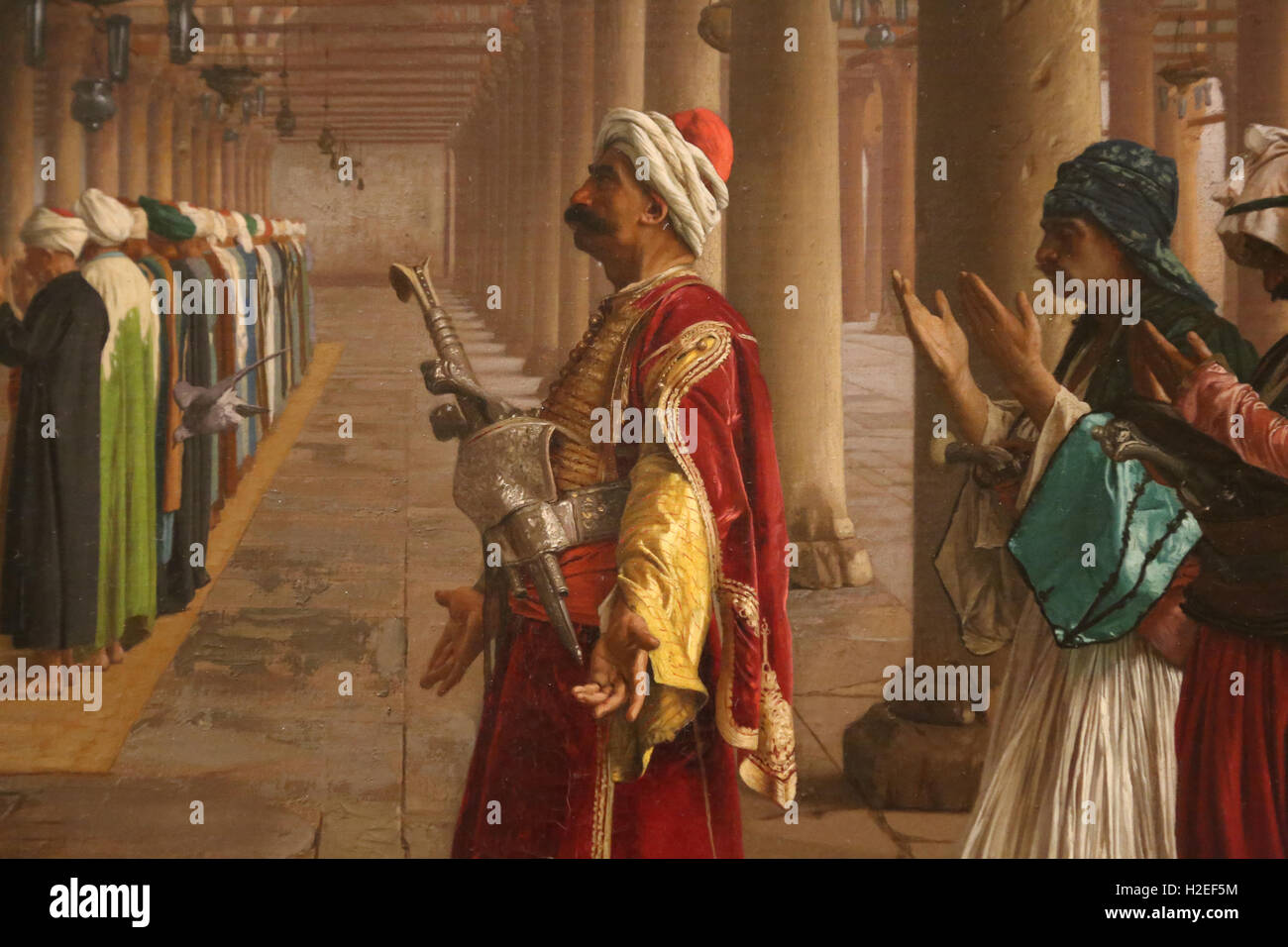 Jean-Leon Gerome (1824-1904). French painter. Player in the Mosque, 1871. Scene interior mosque of 'Amr in Cairo, 7th century. Stock Photohttps://www.alamy.com/image-license-details/?v=1https://www.alamy.com/stock-photo-jean-leon-gerome-1824-1904-french-painter-player-in-the-mosque-1871-122021136.html
Jean-Leon Gerome (1824-1904). French painter. Player in the Mosque, 1871. Scene interior mosque of 'Amr in Cairo, 7th century. Stock Photohttps://www.alamy.com/image-license-details/?v=1https://www.alamy.com/stock-photo-jean-leon-gerome-1824-1904-french-painter-player-in-the-mosque-1871-122021136.htmlRMH2EF5M–Jean-Leon Gerome (1824-1904). French painter. Player in the Mosque, 1871. Scene interior mosque of 'Amr in Cairo, 7th century.
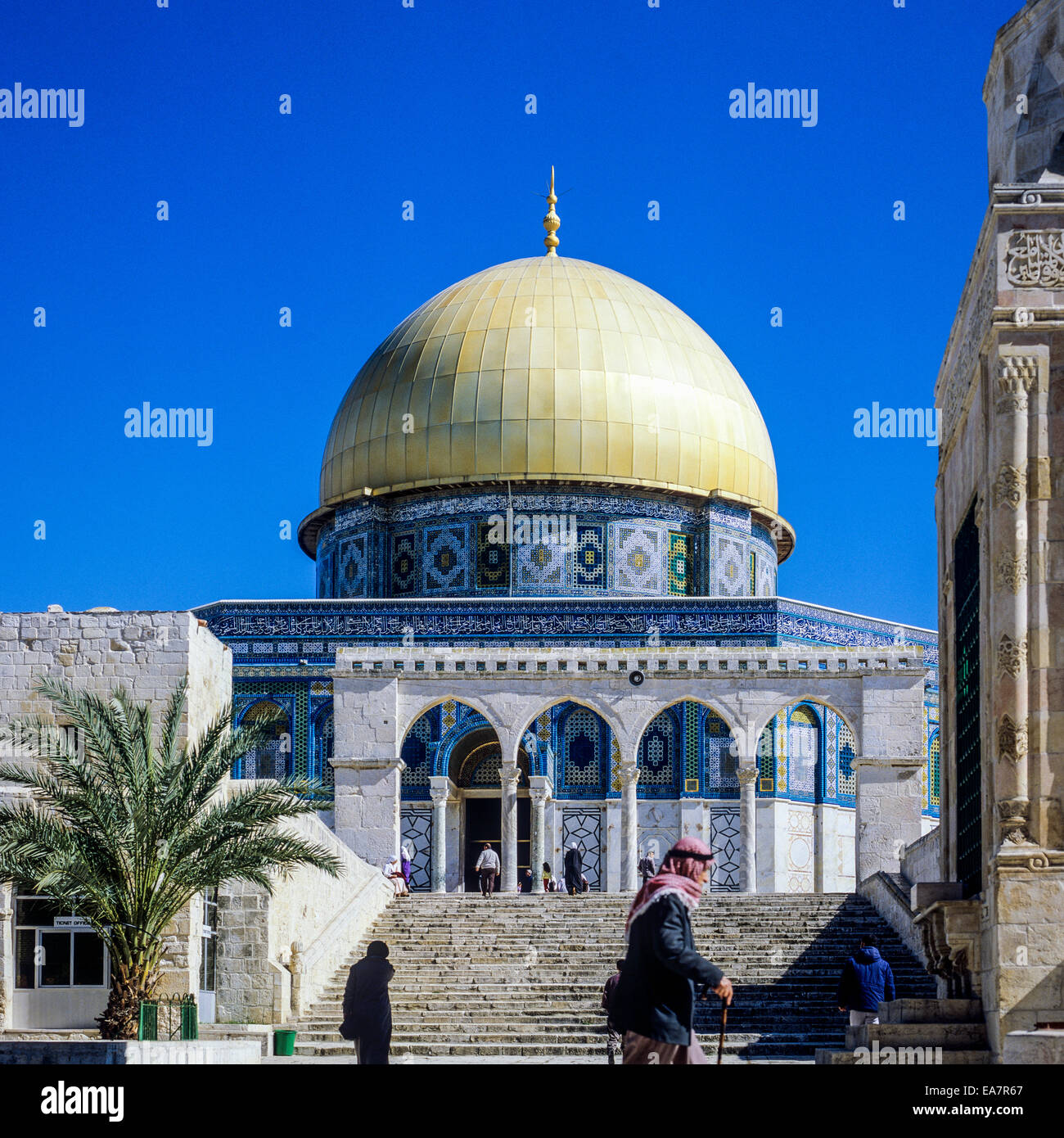 Dome of the Rock and El Qanatir western arcade on Temple Mount Jerusalem Israel Stock Photohttps://www.alamy.com/image-license-details/?v=1https://www.alamy.com/stock-photo-dome-of-the-rock-and-el-qanatir-western-arcade-on-temple-mount-jerusalem-75159903.html
Dome of the Rock and El Qanatir western arcade on Temple Mount Jerusalem Israel Stock Photohttps://www.alamy.com/image-license-details/?v=1https://www.alamy.com/stock-photo-dome-of-the-rock-and-el-qanatir-western-arcade-on-temple-mount-jerusalem-75159903.htmlRMEA7R67–Dome of the Rock and El Qanatir western arcade on Temple Mount Jerusalem Israel
 . English: This fascinating hand colored map depicts Africa prior to the Arab invasions and subsequent costal colorizations of the 7th century. Most of South and central Africa is completely unknown. Published as part of Karl von Spruner’s Historical Atlas of 1855. Africa bis zur Eroberung durch die Araber im 7th Jahrhundert.. 1855. 1855 Perthes Map of Africa prior to the Arab Invasions of the 7th Century - Geographicus - AfricaPreArab-perthes-1855 Stock Photohttps://www.alamy.com/image-license-details/?v=1https://www.alamy.com/english-this-fascinating-hand-colored-map-depicts-africa-prior-to-the-arab-invasions-and-subsequent-costal-colorizations-of-the-7th-century-most-of-south-and-central-africa-is-completely-unknown-published-as-part-of-karl-von-spruners-historical-atlas-of-1855-africa-bis-zur-eroberung-durch-die-araber-im-7th-jahrhundert-1855-1855-perthes-map-of-africa-prior-to-the-arab-invasions-of-the-7th-century-geographicus-africaprearab-perthes-1855-image184960698.html
. English: This fascinating hand colored map depicts Africa prior to the Arab invasions and subsequent costal colorizations of the 7th century. Most of South and central Africa is completely unknown. Published as part of Karl von Spruner’s Historical Atlas of 1855. Africa bis zur Eroberung durch die Araber im 7th Jahrhundert.. 1855. 1855 Perthes Map of Africa prior to the Arab Invasions of the 7th Century - Geographicus - AfricaPreArab-perthes-1855 Stock Photohttps://www.alamy.com/image-license-details/?v=1https://www.alamy.com/english-this-fascinating-hand-colored-map-depicts-africa-prior-to-the-arab-invasions-and-subsequent-costal-colorizations-of-the-7th-century-most-of-south-and-central-africa-is-completely-unknown-published-as-part-of-karl-von-spruners-historical-atlas-of-1855-africa-bis-zur-eroberung-durch-die-araber-im-7th-jahrhundert-1855-1855-perthes-map-of-africa-prior-to-the-arab-invasions-of-the-7th-century-geographicus-africaprearab-perthes-1855-image184960698.htmlRMMMWK76–. English: This fascinating hand colored map depicts Africa prior to the Arab invasions and subsequent costal colorizations of the 7th century. Most of South and central Africa is completely unknown. Published as part of Karl von Spruner’s Historical Atlas of 1855. Africa bis zur Eroberung durch die Araber im 7th Jahrhundert.. 1855. 1855 Perthes Map of Africa prior to the Arab Invasions of the 7th Century - Geographicus - AfricaPreArab-perthes-1855
 Footed Goblet 7th–8th century This goblet in dark blue-green glass is a rare speciman made in Iran in the first centruries after the Arab conquest, although following a long-established Sasanian technique. It has thick, slightly oblique sides, a solid stem also with oblique sides, and a decorative ring just above the solid foot. The facet-cut decoration, consisting of five rows of shallow ovals scooped away at close intervals in a honeycomb pattern, was realized after the object had cooled. In facet-cut vessels from the Sasnian period (224–651), colorless glass was employed, and one shape, the Stock Photohttps://www.alamy.com/image-license-details/?v=1https://www.alamy.com/footed-goblet-7th8th-century-this-goblet-in-dark-blue-green-glass-is-a-rare-speciman-made-in-iran-in-the-first-centruries-after-the-arab-conquest-although-following-a-long-established-sasanian-technique-it-has-thick-slightly-oblique-sides-a-solid-stem-also-with-oblique-sides-and-a-decorative-ring-just-above-the-solid-foot-the-facet-cut-decoration-consisting-of-five-rows-of-shallow-ovals-scooped-away-at-close-intervals-in-a-honeycomb-pattern-was-realized-after-the-object-had-cooled-in-facet-cut-vessels-from-the-sasnian-period-224651-colorless-glass-was-employed-and-one-shape-the-image458500422.html
Footed Goblet 7th–8th century This goblet in dark blue-green glass is a rare speciman made in Iran in the first centruries after the Arab conquest, although following a long-established Sasanian technique. It has thick, slightly oblique sides, a solid stem also with oblique sides, and a decorative ring just above the solid foot. The facet-cut decoration, consisting of five rows of shallow ovals scooped away at close intervals in a honeycomb pattern, was realized after the object had cooled. In facet-cut vessels from the Sasnian period (224–651), colorless glass was employed, and one shape, the Stock Photohttps://www.alamy.com/image-license-details/?v=1https://www.alamy.com/footed-goblet-7th8th-century-this-goblet-in-dark-blue-green-glass-is-a-rare-speciman-made-in-iran-in-the-first-centruries-after-the-arab-conquest-although-following-a-long-established-sasanian-technique-it-has-thick-slightly-oblique-sides-a-solid-stem-also-with-oblique-sides-and-a-decorative-ring-just-above-the-solid-foot-the-facet-cut-decoration-consisting-of-five-rows-of-shallow-ovals-scooped-away-at-close-intervals-in-a-honeycomb-pattern-was-realized-after-the-object-had-cooled-in-facet-cut-vessels-from-the-sasnian-period-224651-colorless-glass-was-employed-and-one-shape-the-image458500422.htmlRM2HHXDY2–Footed Goblet 7th–8th century This goblet in dark blue-green glass is a rare speciman made in Iran in the first centruries after the Arab conquest, although following a long-established Sasanian technique. It has thick, slightly oblique sides, a solid stem also with oblique sides, and a decorative ring just above the solid foot. The facet-cut decoration, consisting of five rows of shallow ovals scooped away at close intervals in a honeycomb pattern, was realized after the object had cooled. In facet-cut vessels from the Sasnian period (224–651), colorless glass was employed, and one shape, the
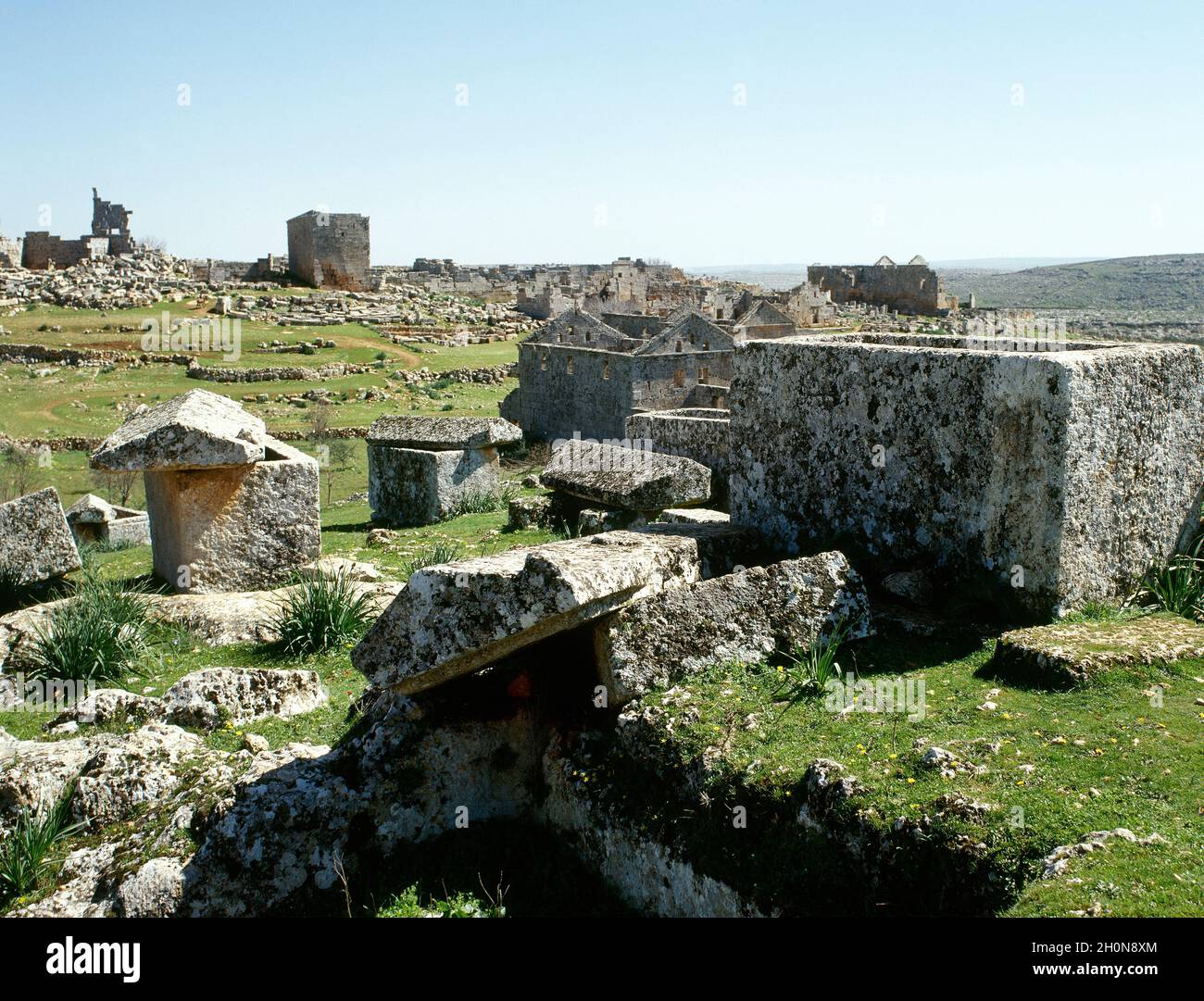 Syria. Dead Cities. Serjilla. Ancient city founded ca. 473 AD and abandoned in 7th century AD. Remains of the necropolis. (Photo taken before the Syri Stock Photohttps://www.alamy.com/image-license-details/?v=1https://www.alamy.com/syria-dead-cities-serjilla-ancient-city-founded-ca-473-ad-and-abandoned-in-7th-century-ad-remains-of-the-necropolis-photo-taken-before-the-syri-image447937580.html
Syria. Dead Cities. Serjilla. Ancient city founded ca. 473 AD and abandoned in 7th century AD. Remains of the necropolis. (Photo taken before the Syri Stock Photohttps://www.alamy.com/image-license-details/?v=1https://www.alamy.com/syria-dead-cities-serjilla-ancient-city-founded-ca-473-ad-and-abandoned-in-7th-century-ad-remains-of-the-necropolis-photo-taken-before-the-syri-image447937580.htmlRM2H0N8XM–Syria. Dead Cities. Serjilla. Ancient city founded ca. 473 AD and abandoned in 7th century AD. Remains of the necropolis. (Photo taken before the Syri
 The ruins of the 7th century Monastery of St Simeon on the banks of the River Nile at Aswan, Egypt Stock Photohttps://www.alamy.com/image-license-details/?v=1https://www.alamy.com/stock-photo-the-ruins-of-the-7th-century-monastery-of-st-simeon-on-the-banks-of-16476378.html
The ruins of the 7th century Monastery of St Simeon on the banks of the River Nile at Aswan, Egypt Stock Photohttps://www.alamy.com/image-license-details/?v=1https://www.alamy.com/stock-photo-the-ruins-of-the-7th-century-monastery-of-st-simeon-on-the-banks-of-16476378.htmlRMAW5YEK–The ruins of the 7th century Monastery of St Simeon on the banks of the River Nile at Aswan, Egypt
 Fragment, Roman period (30 B.C.– 641 A.D.)/Arab period (641–969), 6th/7th century, Egypt, Egypt, Linen and wool, tapestry weave, 54.6 × 12.4 cm (21 1/2 × 4 7/8 in.), Reimagined by Gibon, design of warm cheerful glowing of brightness and light rays radiance. Classic art reinvented with a modern twist. Photography inspired by futurism, embracing dynamic energy of modern technology, movement, speed and revolutionize culture. Stock Photohttps://www.alamy.com/image-license-details/?v=1https://www.alamy.com/fragment-roman-period-30-bc-641-adarab-period-641969-6th7th-century-egypt-egypt-linen-and-wool-tapestry-weave-546-124-cm-21-12-4-78-in-reimagined-by-gibon-design-of-warm-cheerful-glowing-of-brightness-and-light-rays-radiance-classic-art-reinvented-with-a-modern-twist-photography-inspired-by-futurism-embracing-dynamic-energy-of-modern-technology-movement-speed-and-revolutionize-culture-image349686673.html
Fragment, Roman period (30 B.C.– 641 A.D.)/Arab period (641–969), 6th/7th century, Egypt, Egypt, Linen and wool, tapestry weave, 54.6 × 12.4 cm (21 1/2 × 4 7/8 in.), Reimagined by Gibon, design of warm cheerful glowing of brightness and light rays radiance. Classic art reinvented with a modern twist. Photography inspired by futurism, embracing dynamic energy of modern technology, movement, speed and revolutionize culture. Stock Photohttps://www.alamy.com/image-license-details/?v=1https://www.alamy.com/fragment-roman-period-30-bc-641-adarab-period-641969-6th7th-century-egypt-egypt-linen-and-wool-tapestry-weave-546-124-cm-21-12-4-78-in-reimagined-by-gibon-design-of-warm-cheerful-glowing-of-brightness-and-light-rays-radiance-classic-art-reinvented-with-a-modern-twist-photography-inspired-by-futurism-embracing-dynamic-energy-of-modern-technology-movement-speed-and-revolutionize-culture-image349686673.htmlRF2B8WGWN–Fragment, Roman period (30 B.C.– 641 A.D.)/Arab period (641–969), 6th/7th century, Egypt, Egypt, Linen and wool, tapestry weave, 54.6 × 12.4 cm (21 1/2 × 4 7/8 in.), Reimagined by Gibon, design of warm cheerful glowing of brightness and light rays radiance. Classic art reinvented with a modern twist. Photography inspired by futurism, embracing dynamic energy of modern technology, movement, speed and revolutionize culture.
 Fragment, Egypt, Roman period (30 B.C.- 641 A.D.)/Arab period (641-969), 6th/7th century. Stock Photohttps://www.alamy.com/image-license-details/?v=1https://www.alamy.com/fragment-egypt-roman-period-30-bc-641-adarab-period-641-969-6th7th-century-image451397142.html
Fragment, Egypt, Roman period (30 B.C.- 641 A.D.)/Arab period (641-969), 6th/7th century. Stock Photohttps://www.alamy.com/image-license-details/?v=1https://www.alamy.com/fragment-egypt-roman-period-30-bc-641-adarab-period-641-969-6th7th-century-image451397142.htmlRM2H6AWJE–Fragment, Egypt, Roman period (30 B.C.- 641 A.D.)/Arab period (641-969), 6th/7th century.
 Narrow street in historic town of Lamu founded by Muslim Arab Traders from the Persian Gulf in the 7th century Lamu Island India Stock Photohttps://www.alamy.com/image-license-details/?v=1https://www.alamy.com/narrow-street-in-historic-town-of-lamu-founded-by-muslim-arab-traders-image2431446.html
Narrow street in historic town of Lamu founded by Muslim Arab Traders from the Persian Gulf in the 7th century Lamu Island India Stock Photohttps://www.alamy.com/image-license-details/?v=1https://www.alamy.com/narrow-street-in-historic-town-of-lamu-founded-by-muslim-arab-traders-image2431446.htmlRFACH9D7–Narrow street in historic town of Lamu founded by Muslim Arab Traders from the Persian Gulf in the 7th century Lamu Island India
 Fragment, Roman period (30 B.C.– 641 A.D.)/Arab period (641–969), 7th/8th century, Coptic, Egypt, Egypt, Linen and wool, slit tapestry weave, 7.6 × 7.6 cm (3 × 3 in Stock Photohttps://www.alamy.com/image-license-details/?v=1https://www.alamy.com/fragment-roman-period-30-bc-641-adarab-period-641969-7th8th-century-coptic-egypt-egypt-linen-and-wool-slit-tapestry-weave-76-76-cm-3-3-in-image328616048.html
Fragment, Roman period (30 B.C.– 641 A.D.)/Arab period (641–969), 7th/8th century, Coptic, Egypt, Egypt, Linen and wool, slit tapestry weave, 7.6 × 7.6 cm (3 × 3 in Stock Photohttps://www.alamy.com/image-license-details/?v=1https://www.alamy.com/fragment-roman-period-30-bc-641-adarab-period-641969-7th8th-century-coptic-egypt-egypt-linen-and-wool-slit-tapestry-weave-76-76-cm-3-3-in-image328616048.htmlRM2A2HN3C–Fragment, Roman period (30 B.C.– 641 A.D.)/Arab period (641–969), 7th/8th century, Coptic, Egypt, Egypt, Linen and wool, slit tapestry weave, 7.6 × 7.6 cm (3 × 3 in
 Map of The Arab Dominions Stock Photohttps://www.alamy.com/image-license-details/?v=1https://www.alamy.com/map-of-the-arab-dominions-image365215883.html
Map of The Arab Dominions Stock Photohttps://www.alamy.com/image-license-details/?v=1https://www.alamy.com/map-of-the-arab-dominions-image365215883.htmlRF2C650GB–Map of The Arab Dominions
 Petra, Jordan - 7th october, 2022 : Al Khazneh - the treasury, ancient city of Petra, Jordan. Petra's treasure built 1st century BC. by the Nabatean k Stock Photohttps://www.alamy.com/image-license-details/?v=1https://www.alamy.com/petra-jordan-7th-october-2022-al-khazneh-the-treasury-ancient-city-of-petra-jordan-petras-treasure-built-1st-century-bc-by-the-nabatean-k-image595819123.html
Petra, Jordan - 7th october, 2022 : Al Khazneh - the treasury, ancient city of Petra, Jordan. Petra's treasure built 1st century BC. by the Nabatean k Stock Photohttps://www.alamy.com/image-license-details/?v=1https://www.alamy.com/petra-jordan-7th-october-2022-al-khazneh-the-treasury-ancient-city-of-petra-jordan-petras-treasure-built-1st-century-bc-by-the-nabatean-k-image595819123.htmlRF2WH9WAB–Petra, Jordan - 7th october, 2022 : Al Khazneh - the treasury, ancient city of Petra, Jordan. Petra's treasure built 1st century BC. by the Nabatean k
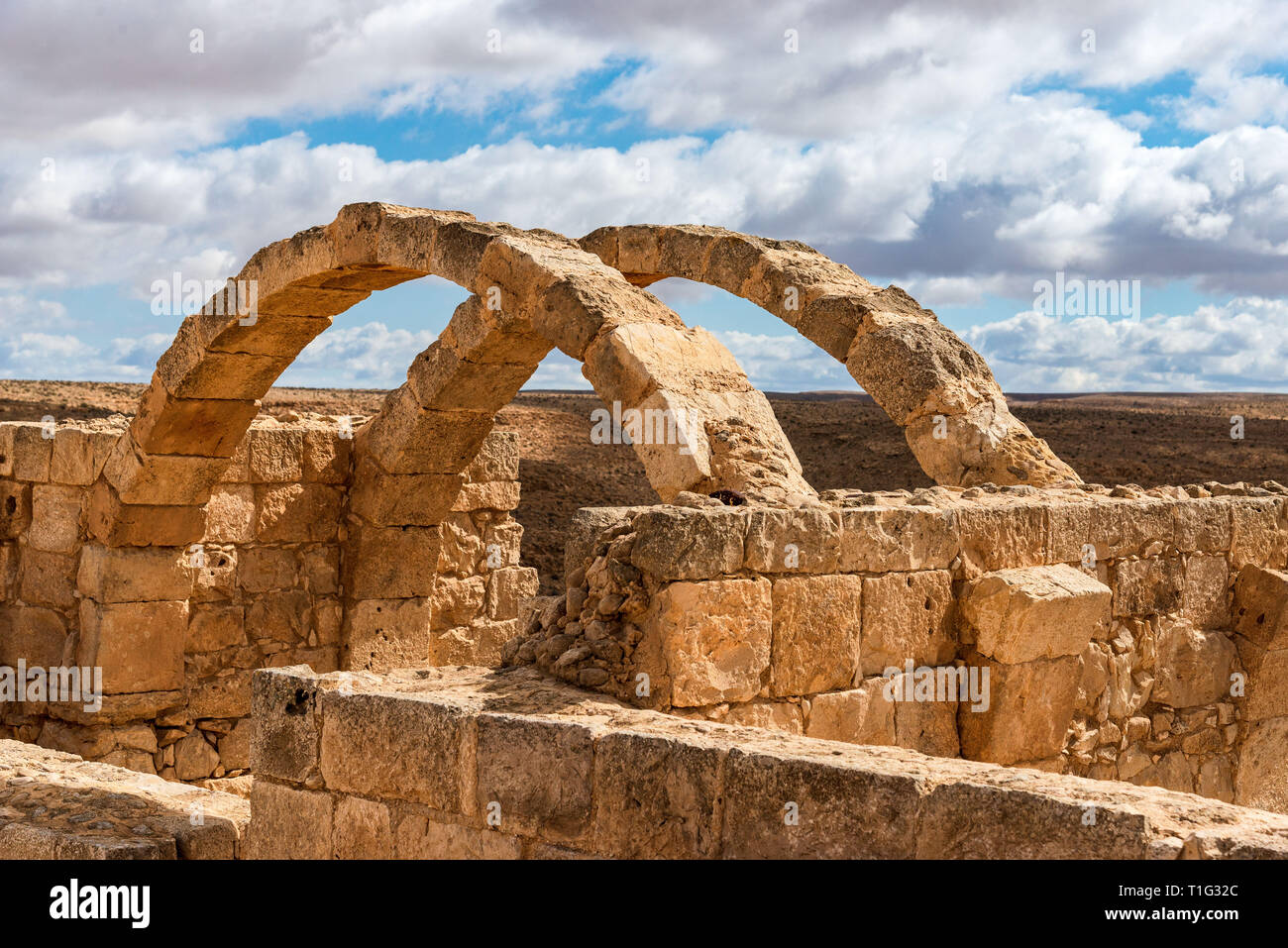 AVDAT, ISRAEL / FEB 19, 2018: The ruins of this Christian Nabatean city in Israel's Negev desert, abandoned after the 7th century Muslim conquest. Stock Photohttps://www.alamy.com/image-license-details/?v=1https://www.alamy.com/avdat-israel-feb-19-2018-the-ruins-of-this-christian-nabatean-city-in-israels-negev-desert-abandoned-after-the-7th-century-muslim-conquest-image241913460.html
AVDAT, ISRAEL / FEB 19, 2018: The ruins of this Christian Nabatean city in Israel's Negev desert, abandoned after the 7th century Muslim conquest. Stock Photohttps://www.alamy.com/image-license-details/?v=1https://www.alamy.com/avdat-israel-feb-19-2018-the-ruins-of-this-christian-nabatean-city-in-israels-negev-desert-abandoned-after-the-7th-century-muslim-conquest-image241913460.htmlRFT1G32C–AVDAT, ISRAEL / FEB 19, 2018: The ruins of this Christian Nabatean city in Israel's Negev desert, abandoned after the 7th century Muslim conquest.
 Saudi Arabia one riyal banknote obverse features the 7th century gold dinar coin and King Abdullah bin Abdul-Aziz al-Saud portriat. Stock Photohttps://www.alamy.com/image-license-details/?v=1https://www.alamy.com/saudi-arabia-one-riyal-banknote-obverse-features-the-7th-century-gold-dinar-coin-and-king-abdullah-bin-abdul-aziz-al-saud-portriat-image616491904.html
Saudi Arabia one riyal banknote obverse features the 7th century gold dinar coin and King Abdullah bin Abdul-Aziz al-Saud portriat. Stock Photohttps://www.alamy.com/image-license-details/?v=1https://www.alamy.com/saudi-arabia-one-riyal-banknote-obverse-features-the-7th-century-gold-dinar-coin-and-king-abdullah-bin-abdul-aziz-al-saud-portriat-image616491904.htmlRF2XPYHM0–Saudi Arabia one riyal banknote obverse features the 7th century gold dinar coin and King Abdullah bin Abdul-Aziz al-Saud portriat.
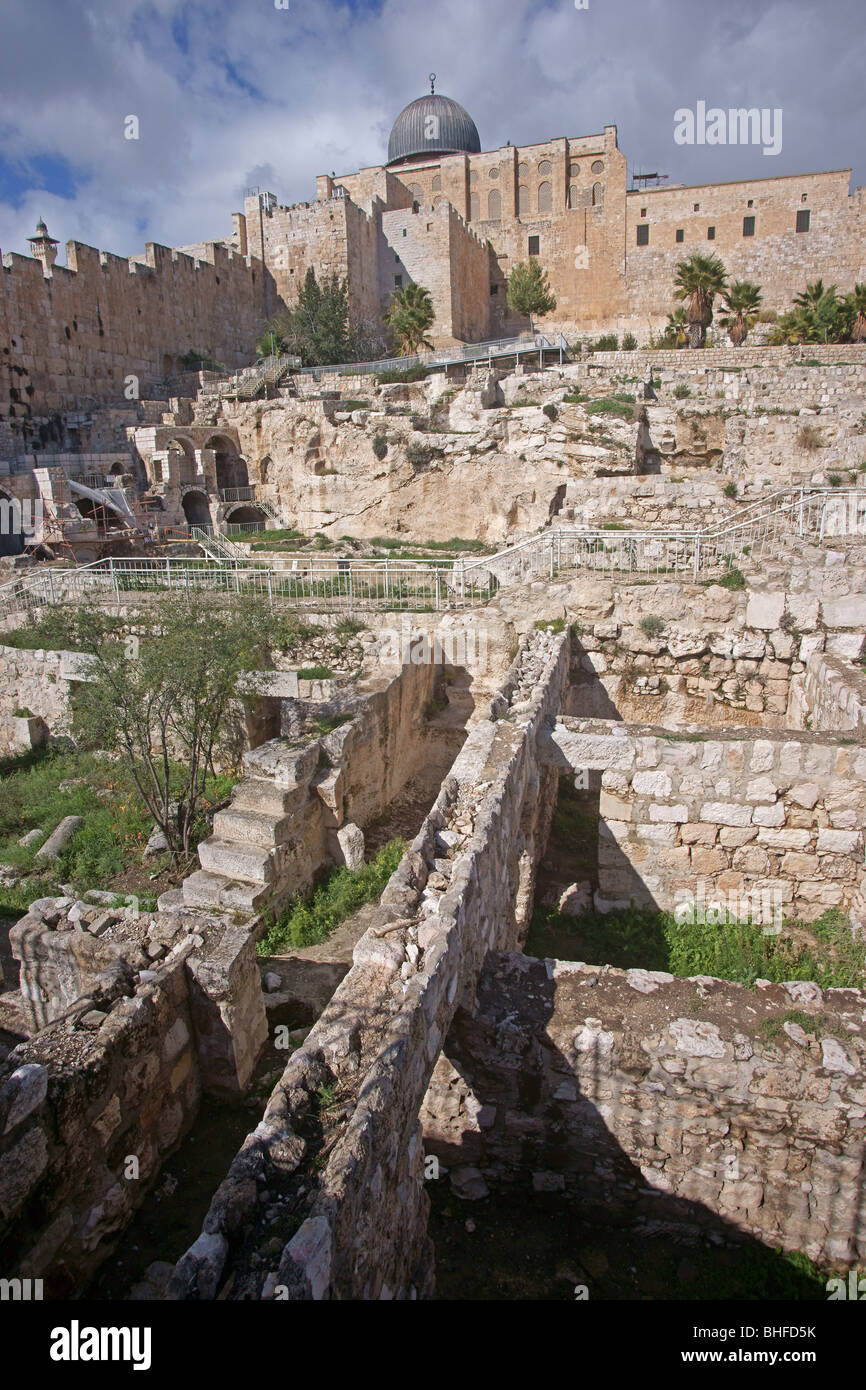 Rain in Jerusalem,El-Akza Mosque Stock Photohttps://www.alamy.com/image-license-details/?v=1https://www.alamy.com/stock-photo-rain-in-jerusalemel-akza-mosque-27999151.html
Rain in Jerusalem,El-Akza Mosque Stock Photohttps://www.alamy.com/image-license-details/?v=1https://www.alamy.com/stock-photo-rain-in-jerusalemel-akza-mosque-27999151.htmlRMBHFD5K–Rain in Jerusalem,El-Akza Mosque
 Syria. Ruweiha. Dead Cities or Forgotten Cities. Northwest Syria. Roman Empire to Byzantine Christianity. 1st to 7th century, abandoned between 8th-10th century. Remains. Unesco World Heritage Site. Historical photography (taken before Syrian Civil War). Stock Photohttps://www.alamy.com/image-license-details/?v=1https://www.alamy.com/syria-ruweiha-dead-cities-or-forgotten-cities-northwest-syria-roman-empire-to-byzantine-christianity-1st-to-7th-century-abandoned-between-8th-10th-century-remains-unesco-world-heritage-site-historical-photography-taken-before-syrian-civil-war-image255611050.html
Syria. Ruweiha. Dead Cities or Forgotten Cities. Northwest Syria. Roman Empire to Byzantine Christianity. 1st to 7th century, abandoned between 8th-10th century. Remains. Unesco World Heritage Site. Historical photography (taken before Syrian Civil War). Stock Photohttps://www.alamy.com/image-license-details/?v=1https://www.alamy.com/syria-ruweiha-dead-cities-or-forgotten-cities-northwest-syria-roman-empire-to-byzantine-christianity-1st-to-7th-century-abandoned-between-8th-10th-century-remains-unesco-world-heritage-site-historical-photography-taken-before-syrian-civil-war-image255611050.htmlRMTRT2E2–Syria. Ruweiha. Dead Cities or Forgotten Cities. Northwest Syria. Roman Empire to Byzantine Christianity. 1st to 7th century, abandoned between 8th-10th century. Remains. Unesco World Heritage Site. Historical photography (taken before Syrian Civil War).
 Closeup of arches of Grand Palace of Umayyad dynasty, Anjar, Bekaa Valley, Lebanon, Middle East. Striped architecture to cushion earthquakes. Stock Photohttps://www.alamy.com/image-license-details/?v=1https://www.alamy.com/closeup-of-arches-of-grand-palace-of-umayyad-dynasty-anjar-bekaa-valley-lebanon-middle-east-striped-architecture-to-cushion-earthquakes-image345546331.html
Closeup of arches of Grand Palace of Umayyad dynasty, Anjar, Bekaa Valley, Lebanon, Middle East. Striped architecture to cushion earthquakes. Stock Photohttps://www.alamy.com/image-license-details/?v=1https://www.alamy.com/closeup-of-arches-of-grand-palace-of-umayyad-dynasty-anjar-bekaa-valley-lebanon-middle-east-striped-architecture-to-cushion-earthquakes-image345546331.htmlRM2B24YTB–Closeup of arches of Grand Palace of Umayyad dynasty, Anjar, Bekaa Valley, Lebanon, Middle East. Striped architecture to cushion earthquakes.
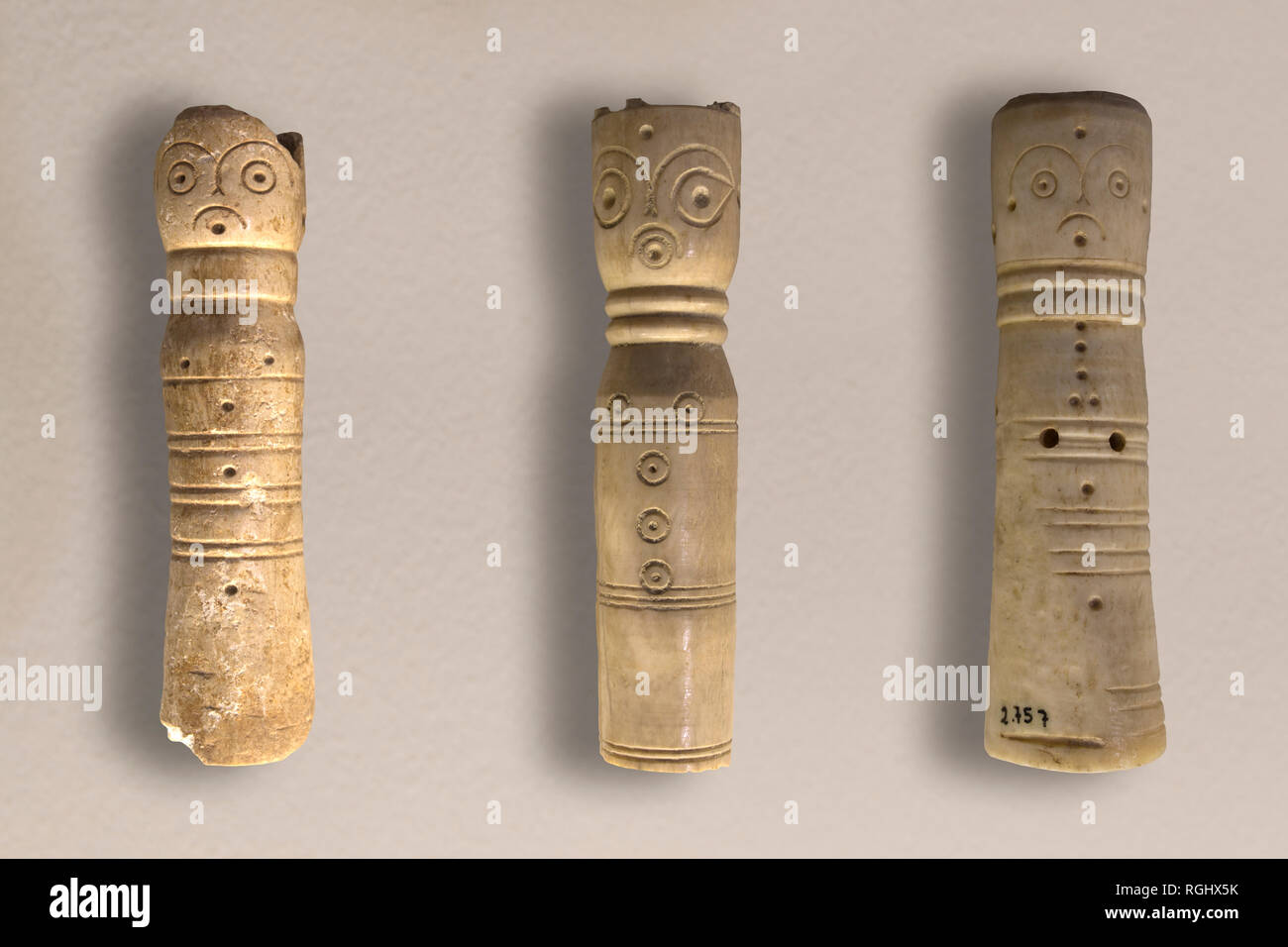 Cordoba, Spain - Dec 7th, 2018: Chess pieces from Caliphal Period, 10th Century at Cordoba Archaeological Museum, Spain Stock Photohttps://www.alamy.com/image-license-details/?v=1https://www.alamy.com/cordoba-spain-dec-7th-2018-chess-pieces-from-caliphal-period-10th-century-at-cordoba-archaeological-museum-spain-image233963007.html
Cordoba, Spain - Dec 7th, 2018: Chess pieces from Caliphal Period, 10th Century at Cordoba Archaeological Museum, Spain Stock Photohttps://www.alamy.com/image-license-details/?v=1https://www.alamy.com/cordoba-spain-dec-7th-2018-chess-pieces-from-caliphal-period-10th-century-at-cordoba-archaeological-museum-spain-image233963007.htmlRMRGHX5K–Cordoba, Spain - Dec 7th, 2018: Chess pieces from Caliphal Period, 10th Century at Cordoba Archaeological Museum, Spain
 Uzbekistan: Alim Nasafi mausoleum, Shah-i-Zinda, Samarkand. Shah-i-Zinda ('The Living King') is a necropolis in the north-eastern part of Samarkand. The Shah-i-Zinda Ensemble includes mausoleums and other ritual buildings from the 9-14th and 19th centuries. The name Shah-i-Zinda is connected with the legend that Kusam ibn Abbas, a cousin of the prophet Muhammad is buried here. It is believed that he came to Samarkand with the Arab invasion in the 7th century to preach Islam. Popular legends speak that he was beheaded by Zoroastrian fire-worshippers for his faith. Stock Photohttps://www.alamy.com/image-license-details/?v=1https://www.alamy.com/uzbekistan-alim-nasafi-mausoleum-shah-i-zinda-samarkand-shah-i-zinda-the-living-king-is-a-necropolis-in-the-north-eastern-part-of-samarkand-the-shah-i-zinda-ensemble-includes-mausoleums-and-other-ritual-buildings-from-the-9-14th-and-19th-centuries-the-name-shah-i-zinda-is-connected-with-the-legend-that-kusam-ibn-abbas-a-cousin-of-the-prophet-muhammad-is-buried-here-it-is-believed-that-he-came-to-samarkand-with-the-arab-invasion-in-the-7th-century-to-preach-islam-popular-legends-speak-that-he-was-beheaded-by-zoroastrian-fire-worshippers-for-his-faith-image344247600.html
Uzbekistan: Alim Nasafi mausoleum, Shah-i-Zinda, Samarkand. Shah-i-Zinda ('The Living King') is a necropolis in the north-eastern part of Samarkand. The Shah-i-Zinda Ensemble includes mausoleums and other ritual buildings from the 9-14th and 19th centuries. The name Shah-i-Zinda is connected with the legend that Kusam ibn Abbas, a cousin of the prophet Muhammad is buried here. It is believed that he came to Samarkand with the Arab invasion in the 7th century to preach Islam. Popular legends speak that he was beheaded by Zoroastrian fire-worshippers for his faith. Stock Photohttps://www.alamy.com/image-license-details/?v=1https://www.alamy.com/uzbekistan-alim-nasafi-mausoleum-shah-i-zinda-samarkand-shah-i-zinda-the-living-king-is-a-necropolis-in-the-north-eastern-part-of-samarkand-the-shah-i-zinda-ensemble-includes-mausoleums-and-other-ritual-buildings-from-the-9-14th-and-19th-centuries-the-name-shah-i-zinda-is-connected-with-the-legend-that-kusam-ibn-abbas-a-cousin-of-the-prophet-muhammad-is-buried-here-it-is-believed-that-he-came-to-samarkand-with-the-arab-invasion-in-the-7th-century-to-preach-islam-popular-legends-speak-that-he-was-beheaded-by-zoroastrian-fire-worshippers-for-his-faith-image344247600.htmlRM2B01R94–Uzbekistan: Alim Nasafi mausoleum, Shah-i-Zinda, Samarkand. Shah-i-Zinda ('The Living King') is a necropolis in the north-eastern part of Samarkand. The Shah-i-Zinda Ensemble includes mausoleums and other ritual buildings from the 9-14th and 19th centuries. The name Shah-i-Zinda is connected with the legend that Kusam ibn Abbas, a cousin of the prophet Muhammad is buried here. It is believed that he came to Samarkand with the Arab invasion in the 7th century to preach Islam. Popular legends speak that he was beheaded by Zoroastrian fire-worshippers for his faith.
 Jean-Leon Gerome (1824-1904). French painter. Player in the Mosque, 1871. Scene interior mosque of 'Amr in Cairo, 7th century. Stock Photohttps://www.alamy.com/image-license-details/?v=1https://www.alamy.com/stock-photo-jean-leon-gerome-1824-1904-french-painter-player-in-the-mosque-1871-121958237.html
Jean-Leon Gerome (1824-1904). French painter. Player in the Mosque, 1871. Scene interior mosque of 'Amr in Cairo, 7th century. Stock Photohttps://www.alamy.com/image-license-details/?v=1https://www.alamy.com/stock-photo-jean-leon-gerome-1824-1904-french-painter-player-in-the-mosque-1871-121958237.htmlRMH2BJY9–Jean-Leon Gerome (1824-1904). French painter. Player in the Mosque, 1871. Scene interior mosque of 'Amr in Cairo, 7th century.
 Al-Fatiha, 'The Opening', is the first chapter of the Koran. Its seven verses are a prayer for Allah's guidance, and stress its lordship and mercy. This chapter has an essential role in salaatu allah (prayer of God). Muslims recite the Surah Al-Fatiha at Stock Photohttps://www.alamy.com/image-license-details/?v=1https://www.alamy.com/stock-photo-al-fatiha-the-opening-is-the-first-chapter-of-the-koran-its-seven-104000233.html
Al-Fatiha, 'The Opening', is the first chapter of the Koran. Its seven verses are a prayer for Allah's guidance, and stress its lordship and mercy. This chapter has an essential role in salaatu allah (prayer of God). Muslims recite the Surah Al-Fatiha at Stock Photohttps://www.alamy.com/image-license-details/?v=1https://www.alamy.com/stock-photo-al-fatiha-the-opening-is-the-first-chapter-of-the-koran-its-seven-104000233.htmlRMG15HA1–Al-Fatiha, 'The Opening', is the first chapter of the Koran. Its seven verses are a prayer for Allah's guidance, and stress its lordship and mercy. This chapter has an essential role in salaatu allah (prayer of God). Muslims recite the Surah Al-Fatiha at
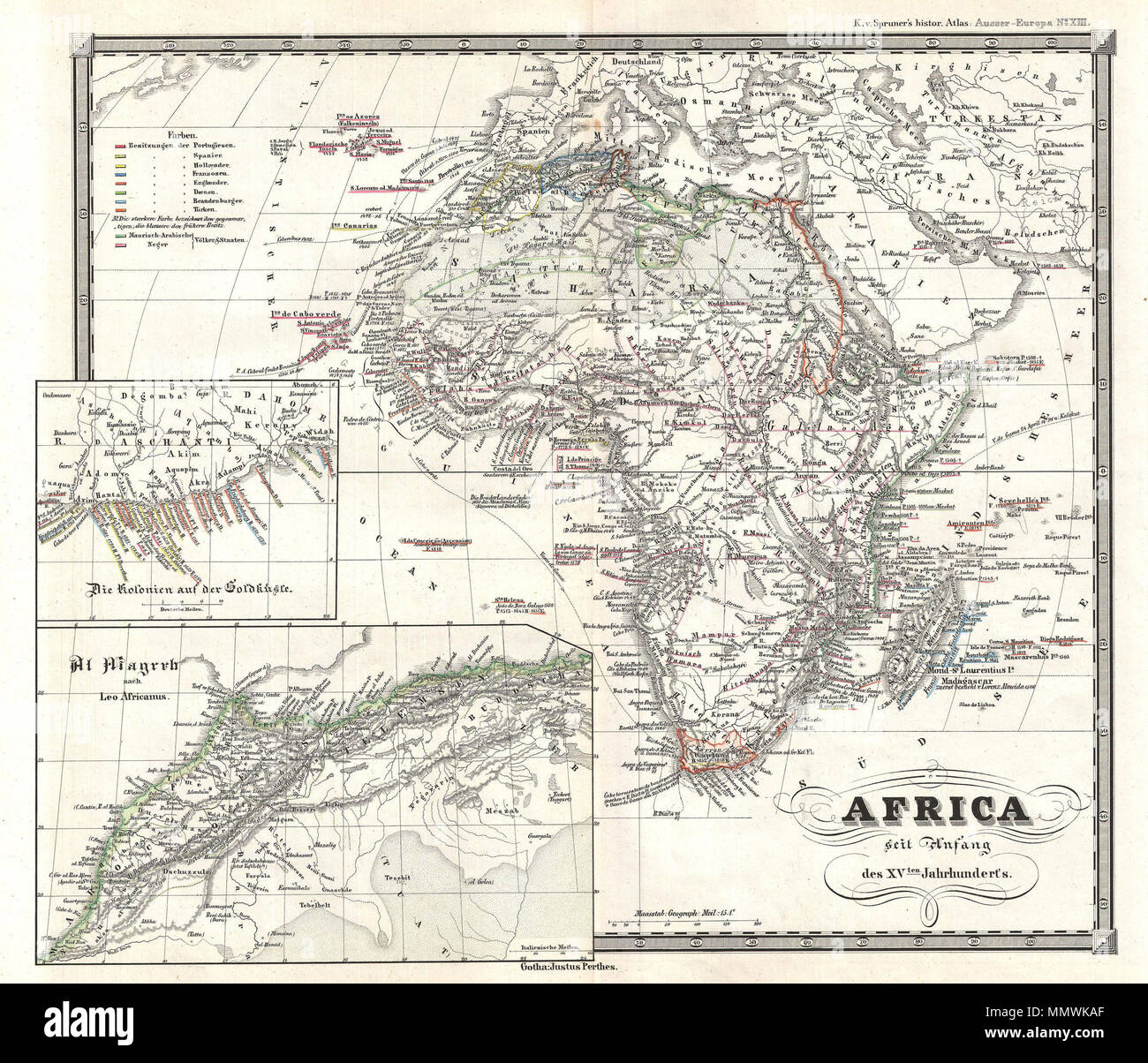 . English: This is Karl von Spruner’s 1855 map of Africa “since the beginning of the 15th century.” Two insets include, at left, “The Colonies of the Gold Coast,” and below that, Al Magreb (northwest Africa) “after Leo Africanus,” the Moorish diplomat and author best known for his book Descrittione dell’Africa (“Description of Africa”) describing the geography of North Africa. Relief is shown by hachures, and historical dates appear throughout. This would make a nice companion piece to Plates 11& 12, showing Africa up to the Arab conquests in the 7th century, and again from the 8th century un Stock Photohttps://www.alamy.com/image-license-details/?v=1https://www.alamy.com/english-this-is-karl-von-spruners-1855-map-of-africa-since-the-beginning-of-the-15th-century-two-insets-include-at-left-the-colonies-of-the-gold-coast-and-below-that-al-magreb-northwest-africa-after-leo-africanus-the-moorish-diplomat-and-author-best-known-for-his-book-descrittione-dellafrica-description-of-africa-describing-the-geography-of-north-africa-relief-is-shown-by-hachures-and-historical-dates-appear-throughout-this-would-make-a-nice-companion-piece-to-plates-11-12-showing-africa-up-to-the-arab-conquests-in-the-7th-century-and-again-from-the-8th-century-un-image184960791.html
. English: This is Karl von Spruner’s 1855 map of Africa “since the beginning of the 15th century.” Two insets include, at left, “The Colonies of the Gold Coast,” and below that, Al Magreb (northwest Africa) “after Leo Africanus,” the Moorish diplomat and author best known for his book Descrittione dell’Africa (“Description of Africa”) describing the geography of North Africa. Relief is shown by hachures, and historical dates appear throughout. This would make a nice companion piece to Plates 11& 12, showing Africa up to the Arab conquests in the 7th century, and again from the 8th century un Stock Photohttps://www.alamy.com/image-license-details/?v=1https://www.alamy.com/english-this-is-karl-von-spruners-1855-map-of-africa-since-the-beginning-of-the-15th-century-two-insets-include-at-left-the-colonies-of-the-gold-coast-and-below-that-al-magreb-northwest-africa-after-leo-africanus-the-moorish-diplomat-and-author-best-known-for-his-book-descrittione-dellafrica-description-of-africa-describing-the-geography-of-north-africa-relief-is-shown-by-hachures-and-historical-dates-appear-throughout-this-would-make-a-nice-companion-piece-to-plates-11-12-showing-africa-up-to-the-arab-conquests-in-the-7th-century-and-again-from-the-8th-century-un-image184960791.htmlRMMMWKAF–. English: This is Karl von Spruner’s 1855 map of Africa “since the beginning of the 15th century.” Two insets include, at left, “The Colonies of the Gold Coast,” and below that, Al Magreb (northwest Africa) “after Leo Africanus,” the Moorish diplomat and author best known for his book Descrittione dell’Africa (“Description of Africa”) describing the geography of North Africa. Relief is shown by hachures, and historical dates appear throughout. This would make a nice companion piece to Plates 11& 12, showing Africa up to the Arab conquests in the 7th century, and again from the 8th century un
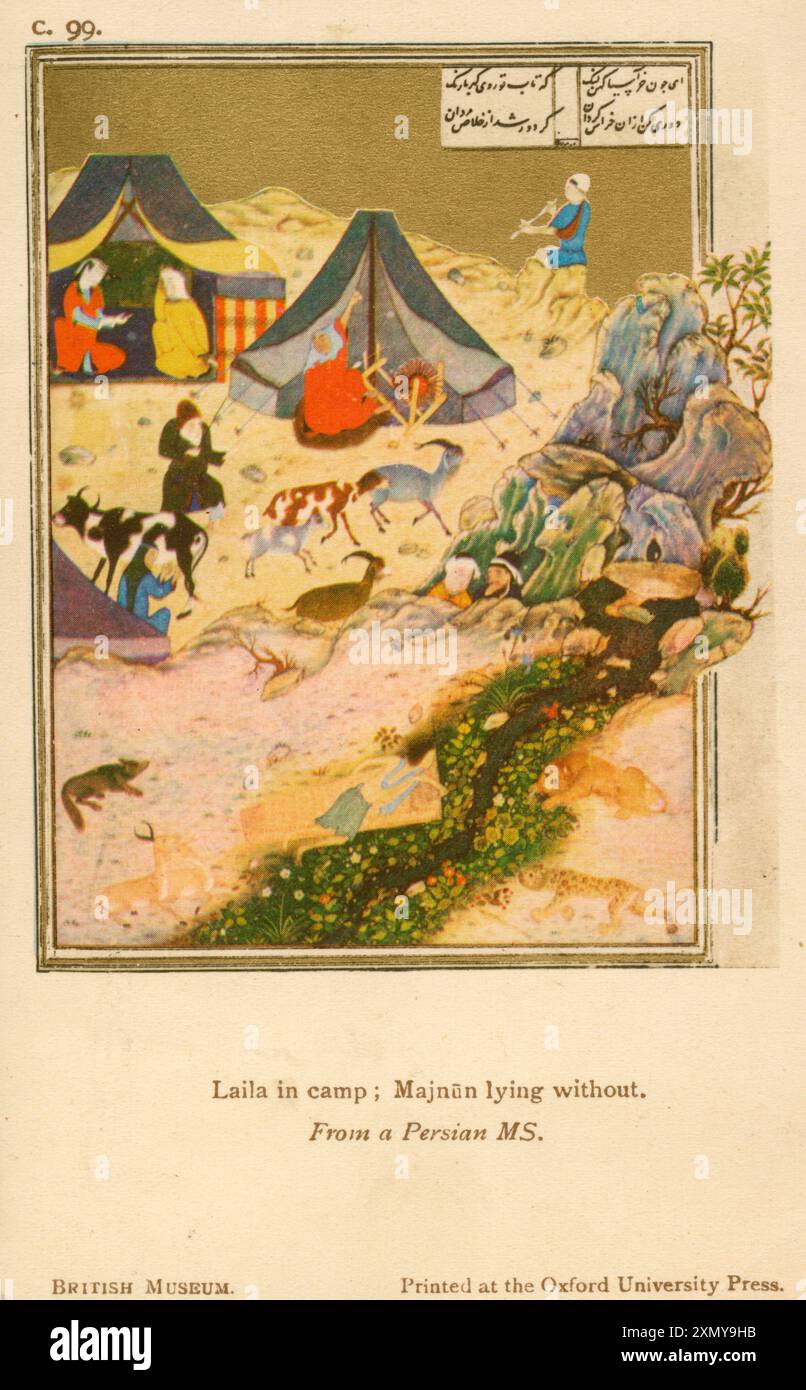 Layla and Majnun - Persian Manuscript illustration Stock Photohttps://www.alamy.com/image-license-details/?v=1https://www.alamy.com/layla-and-majnun-persian-manuscript-illustration-image615256247.html
Layla and Majnun - Persian Manuscript illustration Stock Photohttps://www.alamy.com/image-license-details/?v=1https://www.alamy.com/layla-and-majnun-persian-manuscript-illustration-image615256247.htmlRM2XMY9HB–Layla and Majnun - Persian Manuscript illustration
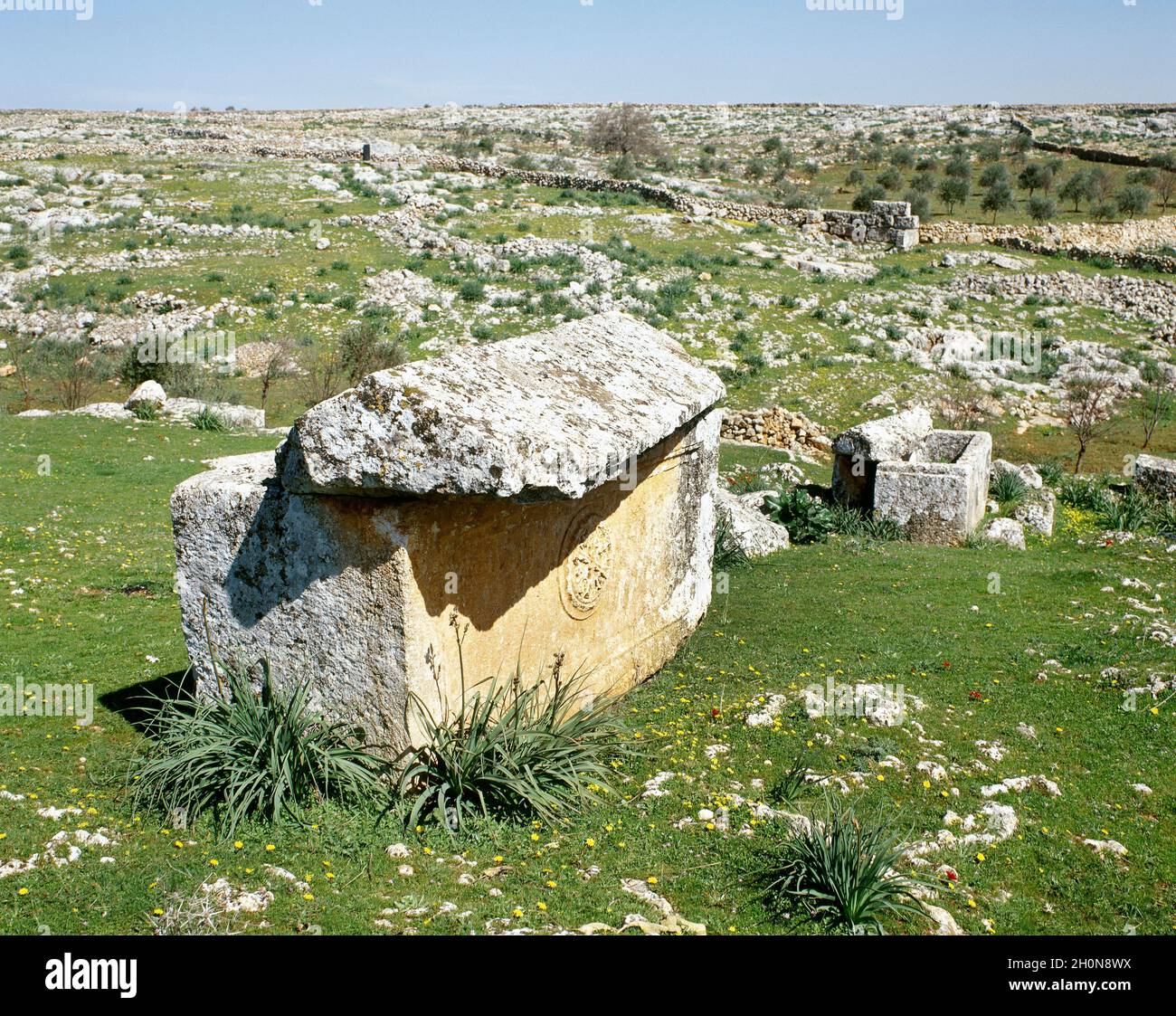 Syria. Dead Cities. Serjilla. Ancient city founded ca. 473 AD and abandoned in 7th century AD. Remains of the necropolis. (Photo taken before the Syri Stock Photohttps://www.alamy.com/image-license-details/?v=1https://www.alamy.com/syria-dead-cities-serjilla-ancient-city-founded-ca-473-ad-and-abandoned-in-7th-century-ad-remains-of-the-necropolis-photo-taken-before-the-syri-image447937558.html
Syria. Dead Cities. Serjilla. Ancient city founded ca. 473 AD and abandoned in 7th century AD. Remains of the necropolis. (Photo taken before the Syri Stock Photohttps://www.alamy.com/image-license-details/?v=1https://www.alamy.com/syria-dead-cities-serjilla-ancient-city-founded-ca-473-ad-and-abandoned-in-7th-century-ad-remains-of-the-necropolis-photo-taken-before-the-syri-image447937558.htmlRM2H0N8WX–Syria. Dead Cities. Serjilla. Ancient city founded ca. 473 AD and abandoned in 7th century AD. Remains of the necropolis. (Photo taken before the Syri
 Iraq - Nebi Younus - a village with a mosque near Nineveh where it is believed the Prophet Jonah is buried. Photo taken in Stock Photohttps://www.alamy.com/image-license-details/?v=1https://www.alamy.com/stock-photo-iraq-nebi-younus-a-village-with-a-mosque-near-nineveh-where-it-is-83348203.html
Iraq - Nebi Younus - a village with a mosque near Nineveh where it is believed the Prophet Jonah is buried. Photo taken in Stock Photohttps://www.alamy.com/image-license-details/?v=1https://www.alamy.com/stock-photo-iraq-nebi-younus-a-village-with-a-mosque-near-nineveh-where-it-is-83348203.htmlRMERGRDF–Iraq - Nebi Younus - a village with a mosque near Nineveh where it is believed the Prophet Jonah is buried. Photo taken in
 Fragment (from a Tunic), Roman period (30 B.C.– 641 A.D.)/Arab period (641–969), 6th/7th century, Egypt, Egypt, Linen and wool, tapestry weave, 64.8 × 95.9 cm (25 1/2 × 37 3/4 in.), Reimagined by Gibon, design of warm cheerful glowing of brightness and light rays radiance. Classic art reinvented with a modern twist. Photography inspired by futurism, embracing dynamic energy of modern technology, movement, speed and revolutionize culture. Stock Photohttps://www.alamy.com/image-license-details/?v=1https://www.alamy.com/fragment-from-a-tunic-roman-period-30-bc-641-adarab-period-641969-6th7th-century-egypt-egypt-linen-and-wool-tapestry-weave-648-959-cm-25-12-37-34-in-reimagined-by-gibon-design-of-warm-cheerful-glowing-of-brightness-and-light-rays-radiance-classic-art-reinvented-with-a-modern-twist-photography-inspired-by-futurism-embracing-dynamic-energy-of-modern-technology-movement-speed-and-revolutionize-culture-image349686666.html
Fragment (from a Tunic), Roman period (30 B.C.– 641 A.D.)/Arab period (641–969), 6th/7th century, Egypt, Egypt, Linen and wool, tapestry weave, 64.8 × 95.9 cm (25 1/2 × 37 3/4 in.), Reimagined by Gibon, design of warm cheerful glowing of brightness and light rays radiance. Classic art reinvented with a modern twist. Photography inspired by futurism, embracing dynamic energy of modern technology, movement, speed and revolutionize culture. Stock Photohttps://www.alamy.com/image-license-details/?v=1https://www.alamy.com/fragment-from-a-tunic-roman-period-30-bc-641-adarab-period-641969-6th7th-century-egypt-egypt-linen-and-wool-tapestry-weave-648-959-cm-25-12-37-34-in-reimagined-by-gibon-design-of-warm-cheerful-glowing-of-brightness-and-light-rays-radiance-classic-art-reinvented-with-a-modern-twist-photography-inspired-by-futurism-embracing-dynamic-energy-of-modern-technology-movement-speed-and-revolutionize-culture-image349686666.htmlRF2B8WGWE–Fragment (from a Tunic), Roman period (30 B.C.– 641 A.D.)/Arab period (641–969), 6th/7th century, Egypt, Egypt, Linen and wool, tapestry weave, 64.8 × 95.9 cm (25 1/2 × 37 3/4 in.), Reimagined by Gibon, design of warm cheerful glowing of brightness and light rays radiance. Classic art reinvented with a modern twist. Photography inspired by futurism, embracing dynamic energy of modern technology, movement, speed and revolutionize culture.
 Fragment, Egypt, Roman period (30 B.C.-641 A.D.)/Arab period (641-969), 6th/7th century. Stock Photohttps://www.alamy.com/image-license-details/?v=1https://www.alamy.com/fragment-egypt-roman-period-30-bc-641-adarab-period-641-969-6th7th-century-image451396571.html
Fragment, Egypt, Roman period (30 B.C.-641 A.D.)/Arab period (641-969), 6th/7th century. Stock Photohttps://www.alamy.com/image-license-details/?v=1https://www.alamy.com/fragment-egypt-roman-period-30-bc-641-adarab-period-641-969-6th7th-century-image451396571.htmlRM2H6ATX3–Fragment, Egypt, Roman period (30 B.C.-641 A.D.)/Arab period (641-969), 6th/7th century.
 King's stele with inscription and a relief depicting King Sennacherib praying in front of the divine symbols. 705-681 BC. Detail. Limestone. From Nineveh. Archaeological Museum. Museum of Ancient Orient. Istanbul. Turkey. Stock Photohttps://www.alamy.com/image-license-details/?v=1https://www.alamy.com/kings-stele-with-inscription-and-a-relief-depicting-king-sennacherib-praying-in-front-of-the-divine-symbols-705-681-bc-detail-limestone-from-nineveh-archaeological-museum-museum-of-ancient-orient-istanbul-turkey-image220261068.html
King's stele with inscription and a relief depicting King Sennacherib praying in front of the divine symbols. 705-681 BC. Detail. Limestone. From Nineveh. Archaeological Museum. Museum of Ancient Orient. Istanbul. Turkey. Stock Photohttps://www.alamy.com/image-license-details/?v=1https://www.alamy.com/kings-stele-with-inscription-and-a-relief-depicting-king-sennacherib-praying-in-front-of-the-divine-symbols-705-681-bc-detail-limestone-from-nineveh-archaeological-museum-museum-of-ancient-orient-istanbul-turkey-image220261068.htmlRMPP9N6M–King's stele with inscription and a relief depicting King Sennacherib praying in front of the divine symbols. 705-681 BC. Detail. Limestone. From Nineveh. Archaeological Museum. Museum of Ancient Orient. Istanbul. Turkey.
 Child’s Tunic, Roman period (30 B.C.– 641 A.D.)/Arab period (641–969), 7th century, Coptic, Egypt, Egypt, Linen, compound twill weave, 50.8 × 34.3 cm (20 × 13 1/2 in Stock Photohttps://www.alamy.com/image-license-details/?v=1https://www.alamy.com/childs-tunic-roman-period-30-bc-641-adarab-period-641969-7th-century-coptic-egypt-egypt-linen-compound-twill-weave-508-343-cm-20-13-12-in-image328618055.html
Child’s Tunic, Roman period (30 B.C.– 641 A.D.)/Arab period (641–969), 7th century, Coptic, Egypt, Egypt, Linen, compound twill weave, 50.8 × 34.3 cm (20 × 13 1/2 in Stock Photohttps://www.alamy.com/image-license-details/?v=1https://www.alamy.com/childs-tunic-roman-period-30-bc-641-adarab-period-641969-7th-century-coptic-egypt-egypt-linen-compound-twill-weave-508-343-cm-20-13-12-in-image328618055.htmlRM2A2HRK3–Child’s Tunic, Roman period (30 B.C.– 641 A.D.)/Arab period (641–969), 7th century, Coptic, Egypt, Egypt, Linen, compound twill weave, 50.8 × 34.3 cm (20 × 13 1/2 in
 'The Prayer', 1918. Artist: Etienne Dinet Stock Photohttps://www.alamy.com/image-license-details/?v=1https://www.alamy.com/the-prayer-1918-artist-etienne-dinet-image8371656.html
'The Prayer', 1918. Artist: Etienne Dinet Stock Photohttps://www.alamy.com/image-license-details/?v=1https://www.alamy.com/the-prayer-1918-artist-etienne-dinet-image8371656.htmlRMAJ7WG9–'The Prayer', 1918. Artist: Etienne Dinet
 Petra, Jordan - 7th october, 2022 : Al Khazneh - the treasury, ancient city of Petra, Jordan. Petra's treasure built 1st century BC. by the Nabatean k Stock Photohttps://www.alamy.com/image-license-details/?v=1https://www.alamy.com/petra-jordan-7th-october-2022-al-khazneh-the-treasury-ancient-city-of-petra-jordan-petras-treasure-built-1st-century-bc-by-the-nabatean-k-image490493887.html
Petra, Jordan - 7th october, 2022 : Al Khazneh - the treasury, ancient city of Petra, Jordan. Petra's treasure built 1st century BC. by the Nabatean k Stock Photohttps://www.alamy.com/image-license-details/?v=1https://www.alamy.com/petra-jordan-7th-october-2022-al-khazneh-the-treasury-ancient-city-of-petra-jordan-petras-treasure-built-1st-century-bc-by-the-nabatean-k-image490493887.htmlRF2KDYWXR–Petra, Jordan - 7th october, 2022 : Al Khazneh - the treasury, ancient city of Petra, Jordan. Petra's treasure built 1st century BC. by the Nabatean k
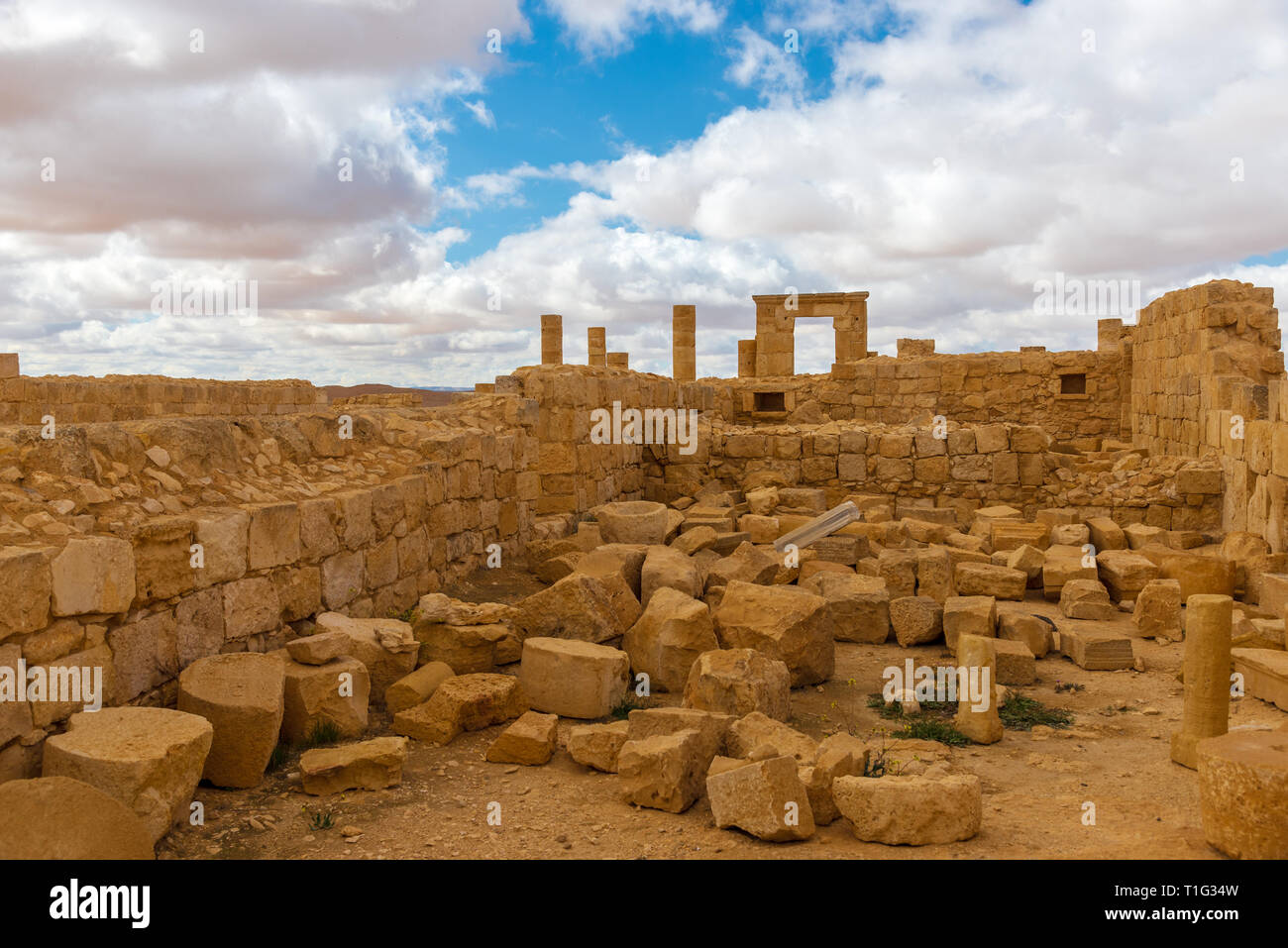 AVDAT, ISRAEL / FEB 19, 2018: The ruins of this Christian Nabatean city in Israel's Negev desert, abandoned after the 7th century Muslim conquest. Stock Photohttps://www.alamy.com/image-license-details/?v=1https://www.alamy.com/avdat-israel-feb-19-2018-the-ruins-of-this-christian-nabatean-city-in-israels-negev-desert-abandoned-after-the-7th-century-muslim-conquest-image241913529.html
AVDAT, ISRAEL / FEB 19, 2018: The ruins of this Christian Nabatean city in Israel's Negev desert, abandoned after the 7th century Muslim conquest. Stock Photohttps://www.alamy.com/image-license-details/?v=1https://www.alamy.com/avdat-israel-feb-19-2018-the-ruins-of-this-christian-nabatean-city-in-israels-negev-desert-abandoned-after-the-7th-century-muslim-conquest-image241913529.htmlRFT1G34W–AVDAT, ISRAEL / FEB 19, 2018: The ruins of this Christian Nabatean city in Israel's Negev desert, abandoned after the 7th century Muslim conquest.